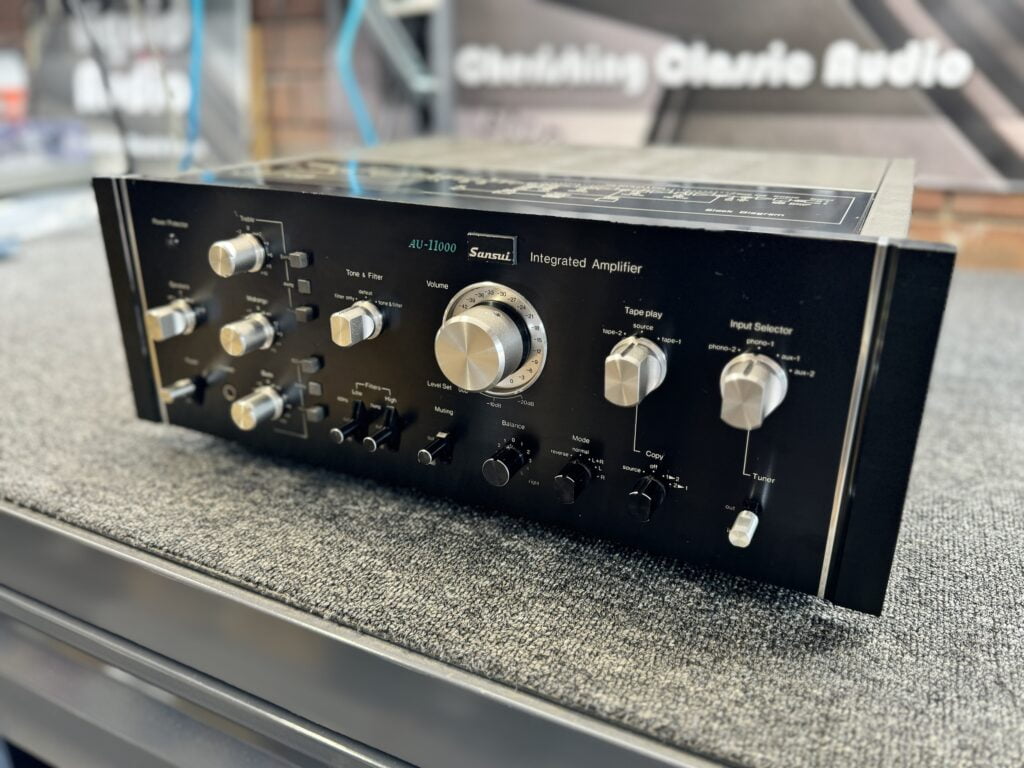All the equipment and accessories on these pages have been sold but you are welcome to browse. Keep an eye on the store for the latest equipment for sale.
Incredible, 100% original, one-owner, almost time-capsule quality Kenwood KD-500 direct drive turntable!
This stunning one-owner Kenwood KD-500 comes complete with its as-purchased SME-3009 tonearm and the mega-bonus: a rare Fidelity Research FR-101 moving magnet cartridge! This incredible vintage deck sounds fantastic, check it out below. My apologies for the colour cast in some of these shots BTW, it doesn’t look yellow as you’ll see in many shots.
UPDATE: Four purchase requests received within 2 hours, sold!
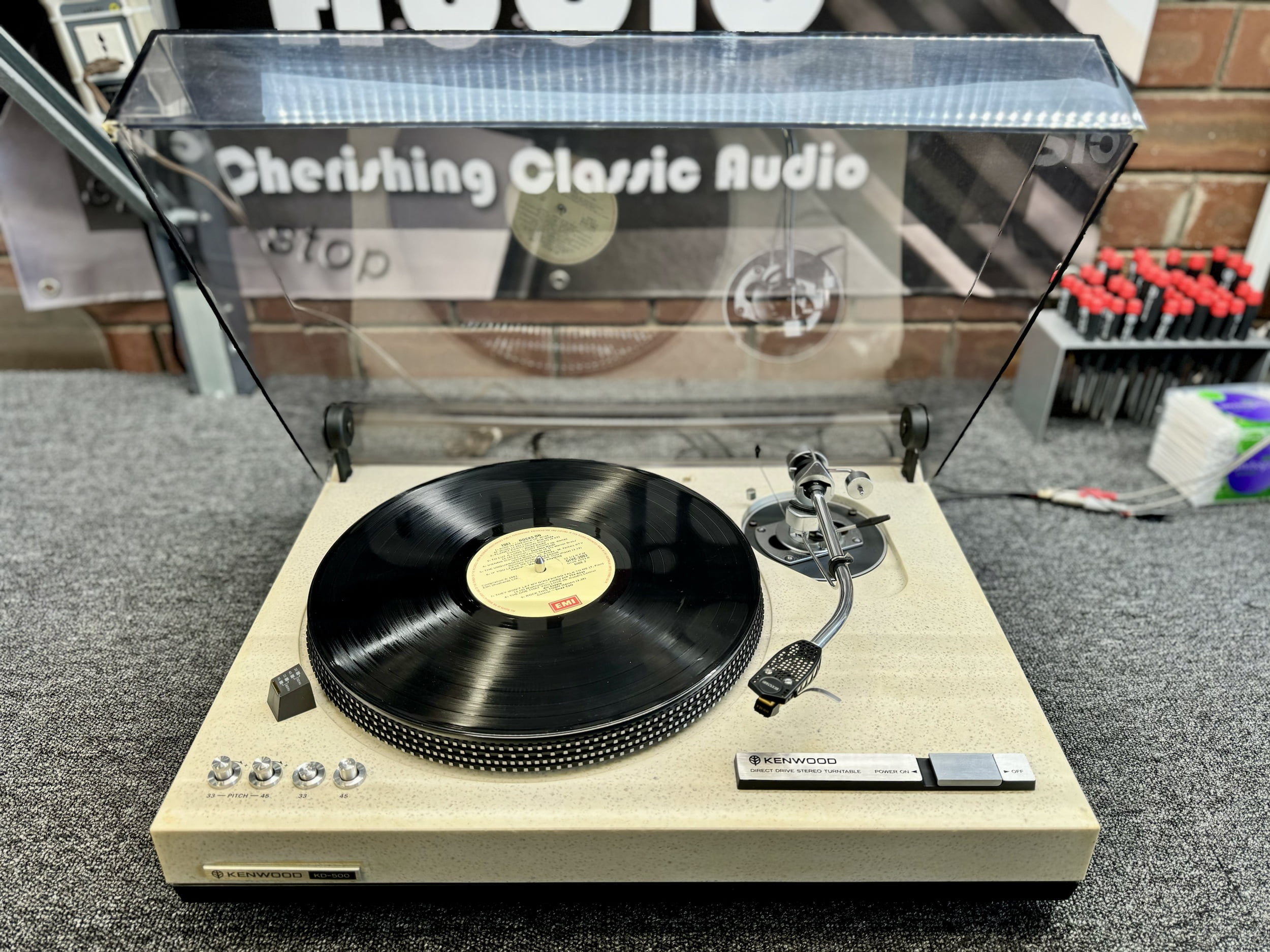
This sale is a collaboration between Liquid Audio and Addicted to Audio, one of Perth’s best hi-fi stores. This is something we occasionally do and it works well for everyone, including the customer. Thank you to Dan for finding this beauty!
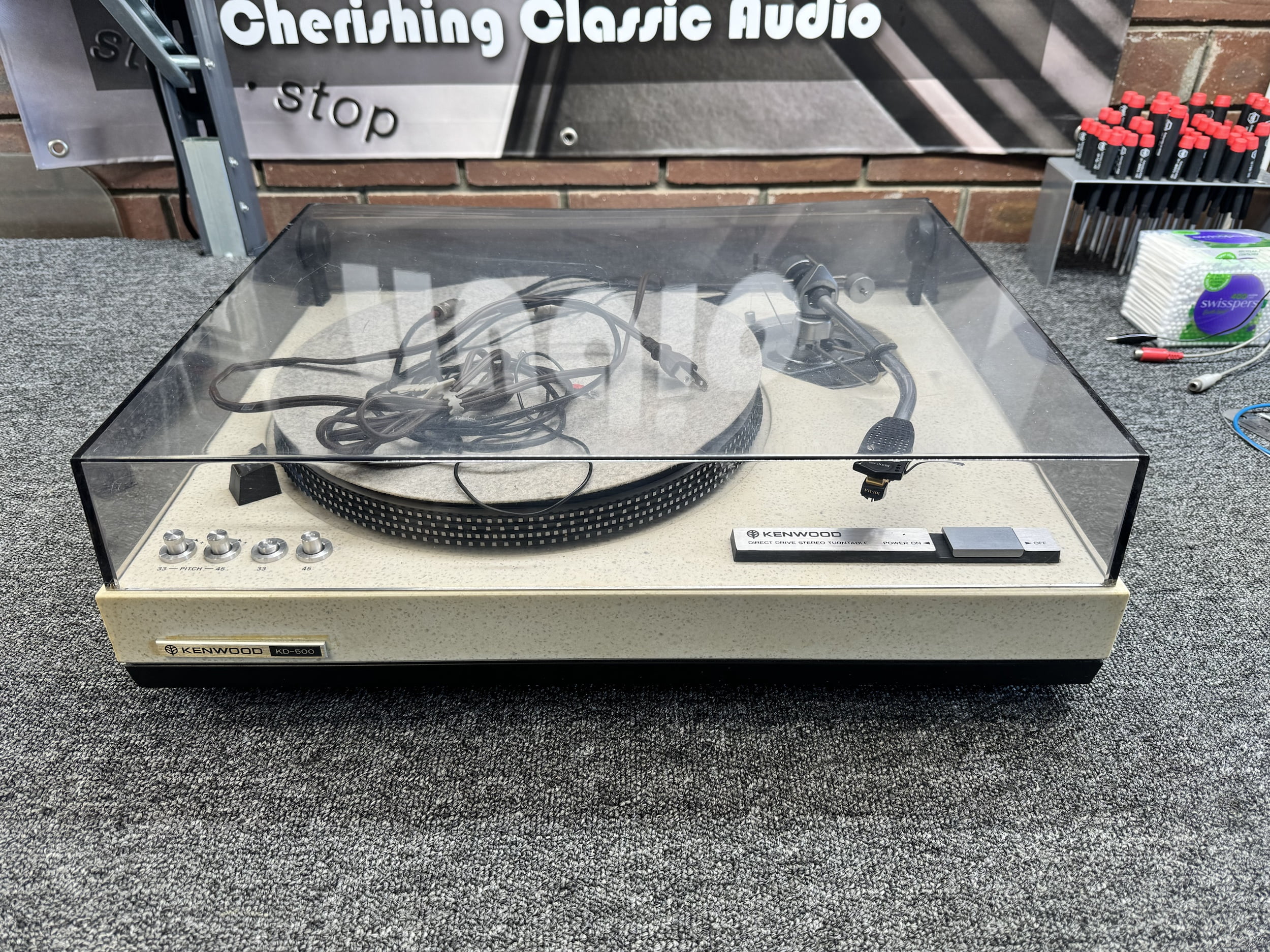
Kenwood KD-500 Specifications
Courtesy of Vinyl Engine
Drive: direct-drive system
Motor: 8-pole 24 slot brushless DC servo motor
Platter: 30cm, 1.5kg aluminium alloy die-cast
Speeds: 33.33 and 45rpm
Wow and flutter: less than 0.03% WRMS
Signal to noise ratio: more than 60dB
Tonearm: static-balance type, s-shaped pipe arm, eia plug-in connector
Effective length: 237mm
Overhang: 15mm
Stylus pressure range: 0 to 4g
Usable cartridge range: 5 to 12g
Dimensions: 502 x 382 x 162mm
Weight: 14.9kg (that’s right, not 5kg, 15kg!)
In terms of service, you’ll already know that a Liquid Audio service is more thorough than most. I’ve cleaned and serviced the motor, a delicate operation utilising a premium synthetic bearing oil. I’ve serviced the switches and controls, reset the master running speeds, and adjusted all the tonearm parameters including lateral balance, azimuth and VTA, arm geometry adjustments that many have no idea how to complete.
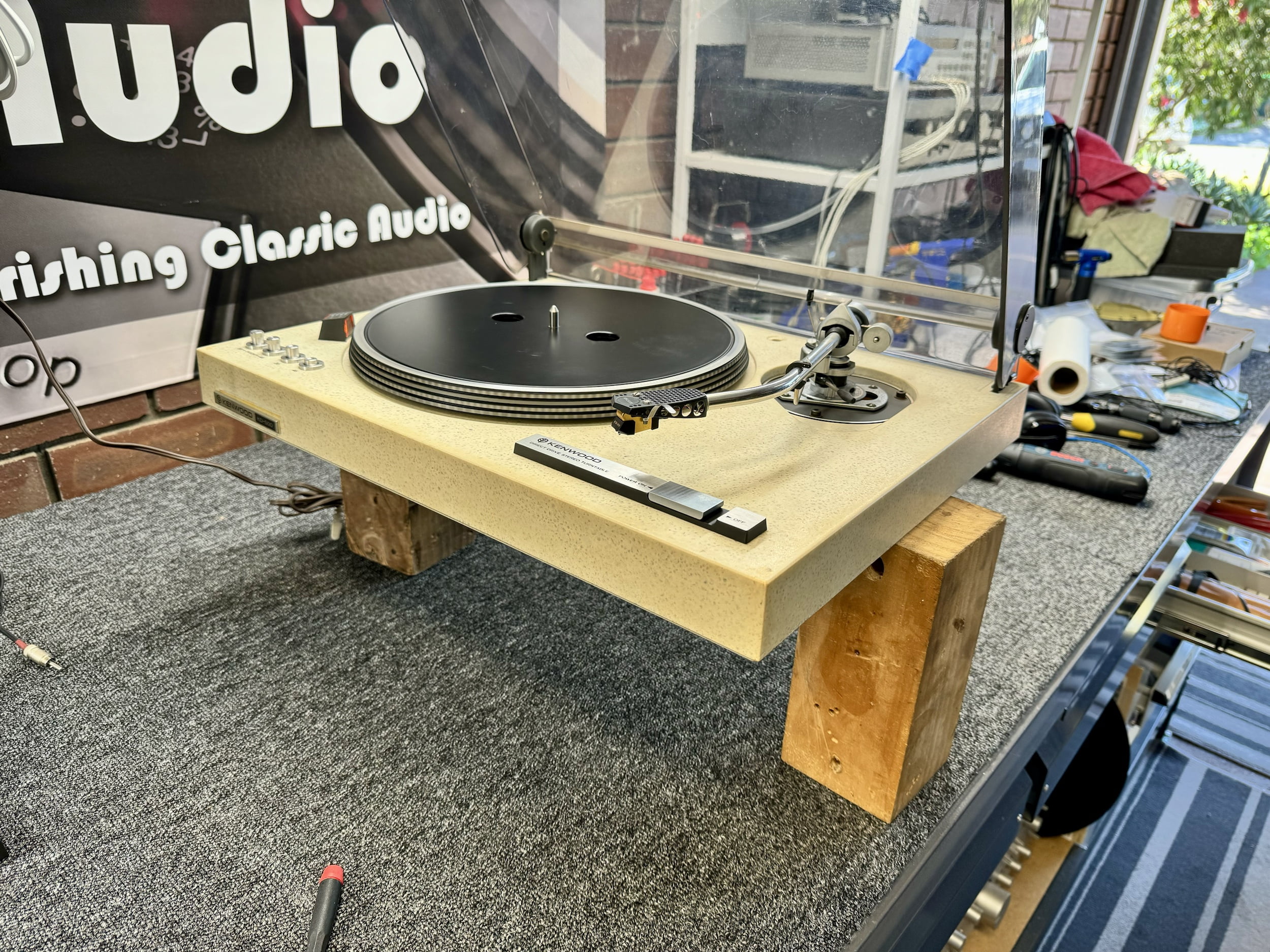
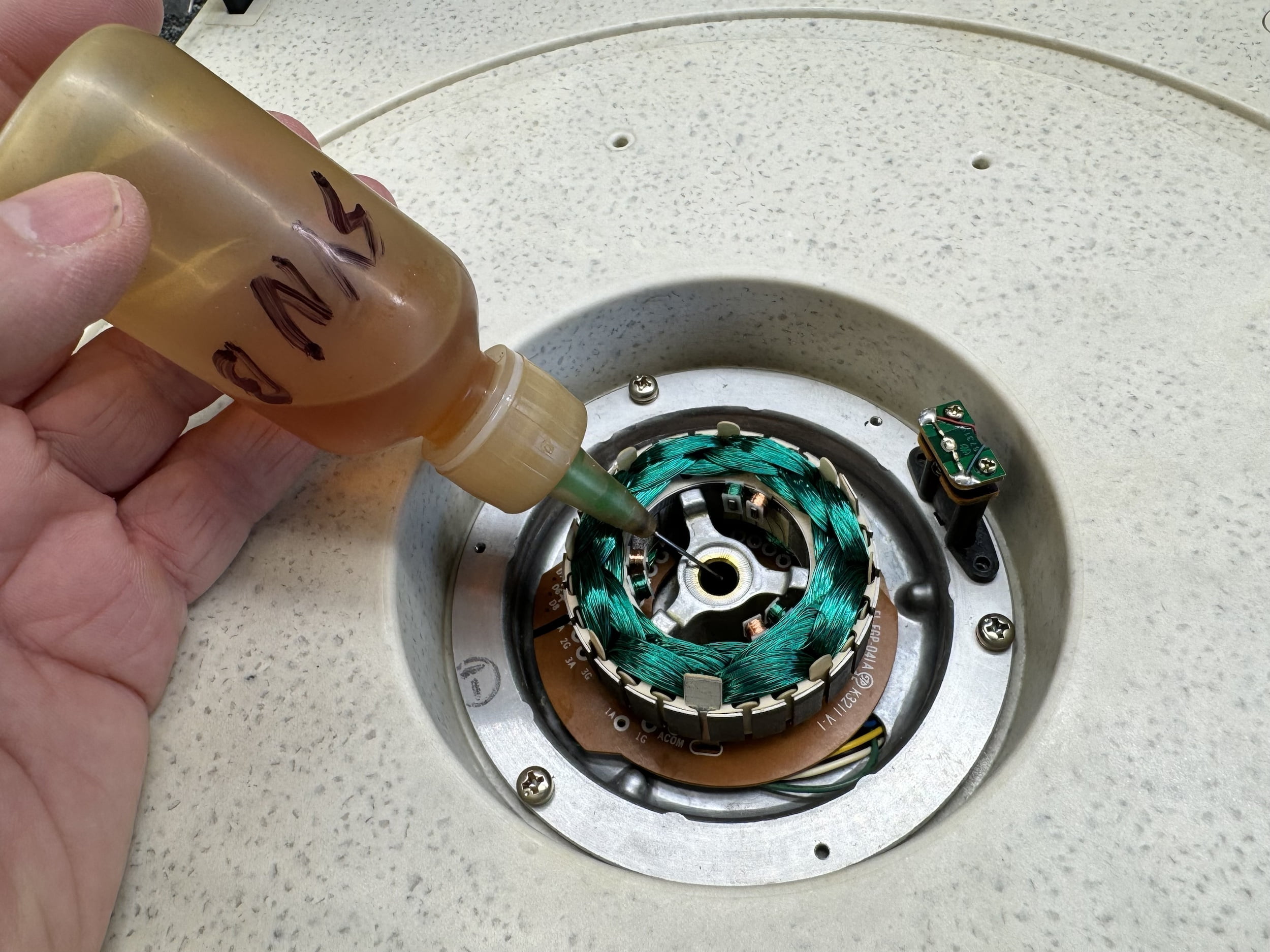
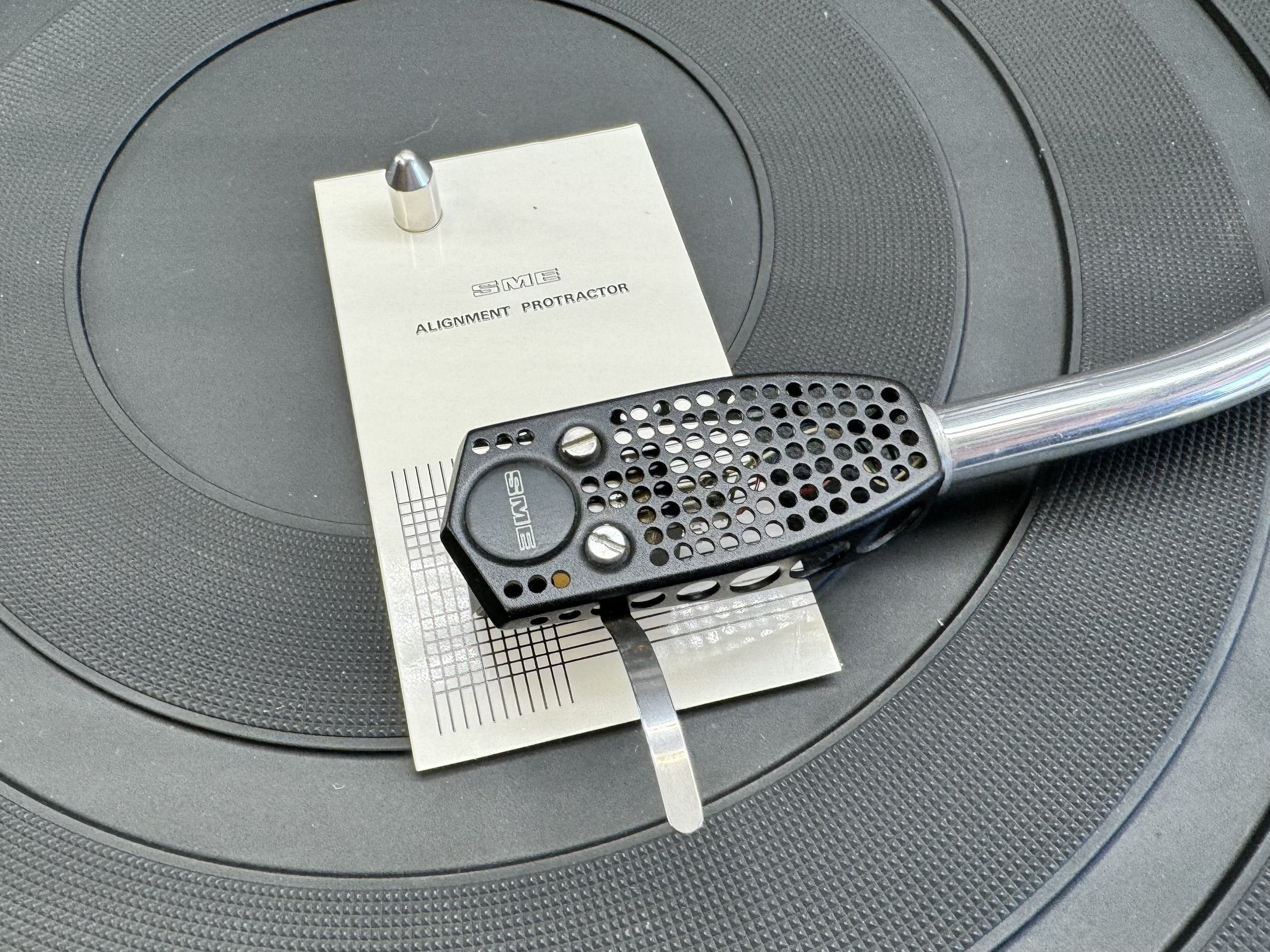
I’ve written a ton about the Kenwood KD-500 over the years, so check out a couple of these articles for more. Let me say though that you rarely find a KD-500 in this condition, and with the valuable SME-3009 and even rarer now FR-101, it’s a killer combo.

To say that a deck of this quality crushes new $2,000 turntables is a dramatic understatement. You only have to see and feel a deck like this to know that, and then listen to it for confirmation.
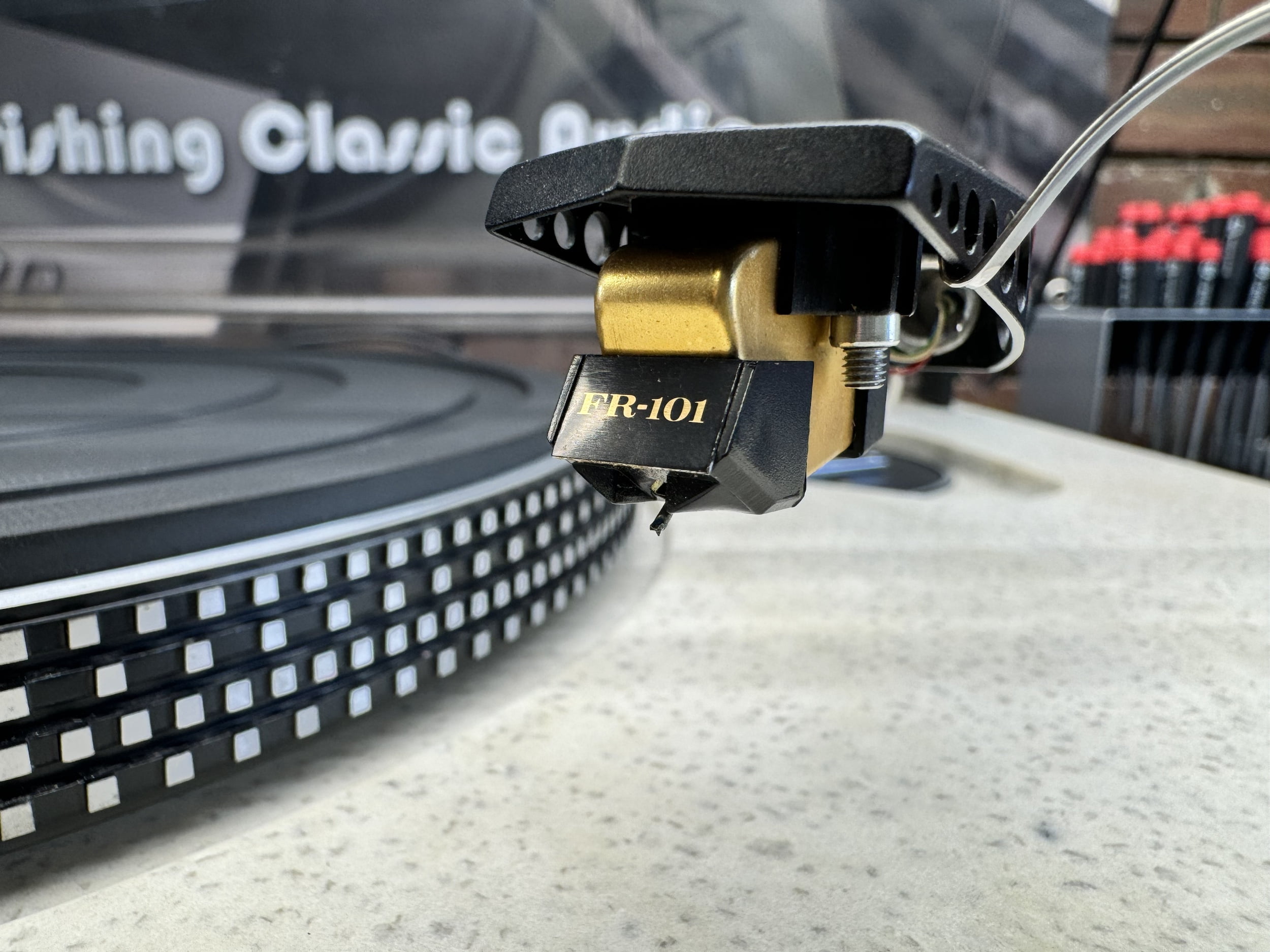
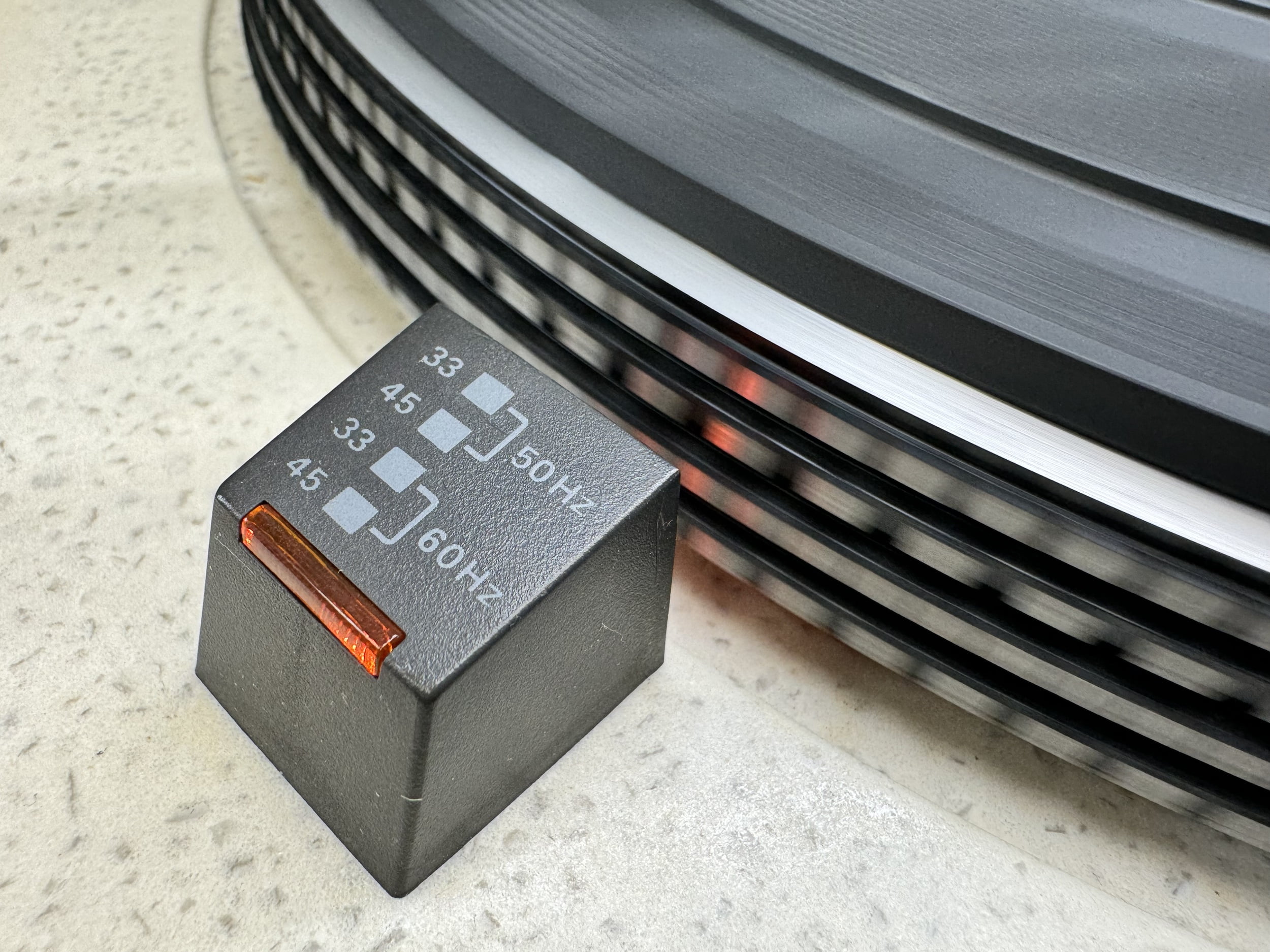
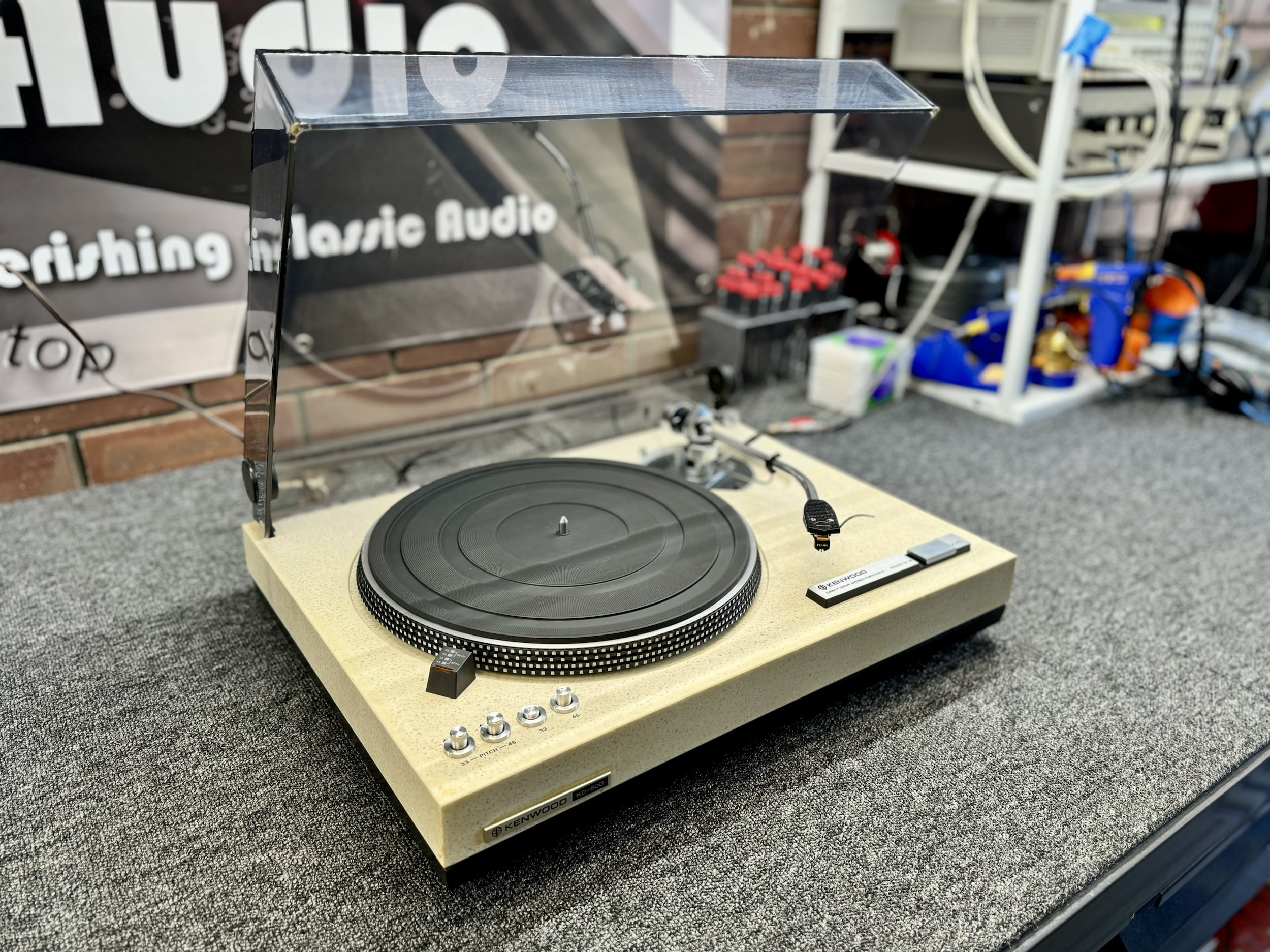
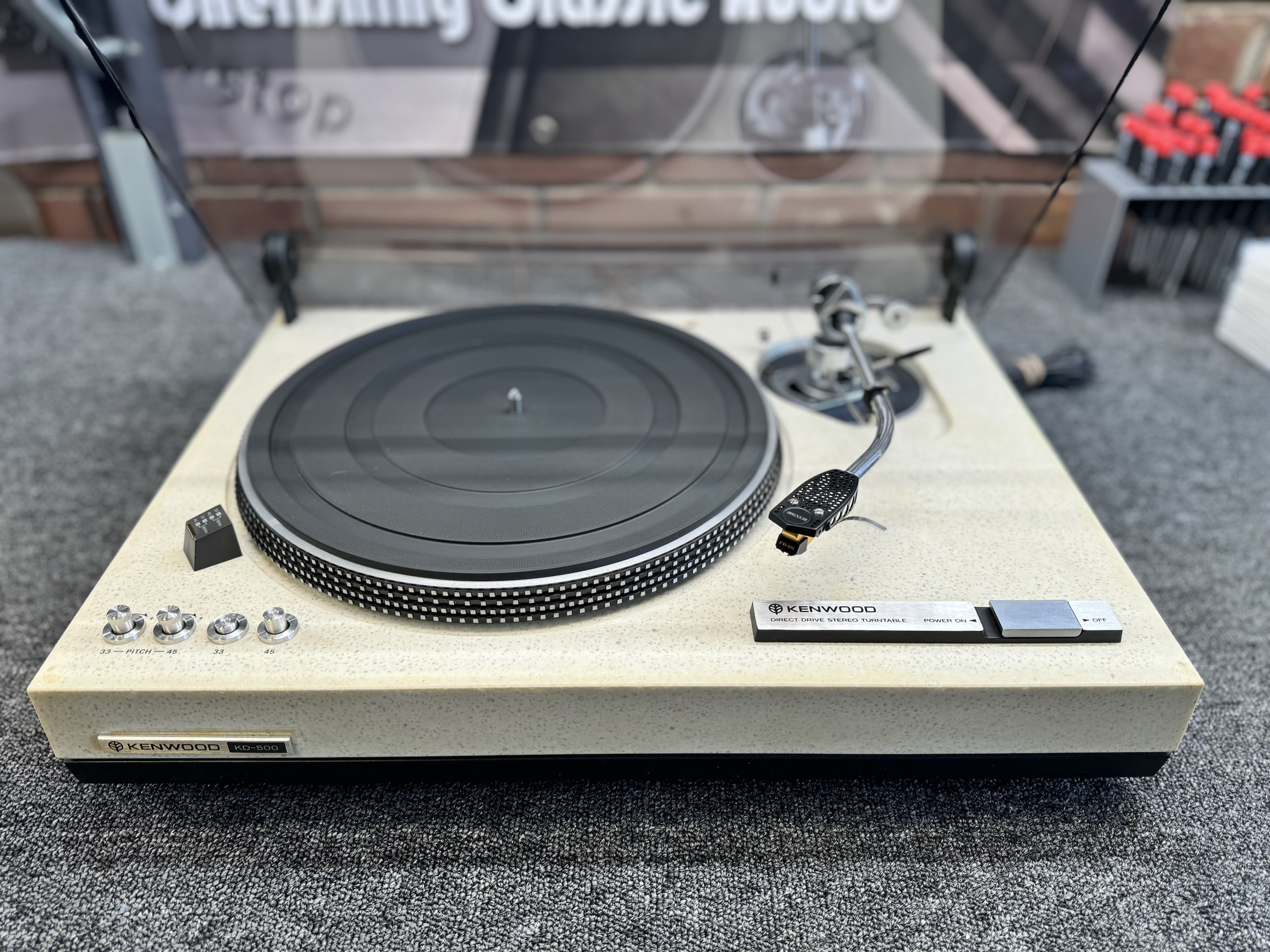
This just fully serviced, perfect-running, 100% original Kenwood KD-500/SME-3009 combo is now ready for her next owner. The SME-3009 tonearm alone would normally sell for around $1,000.
I’m asking for $1950 for this complete Kenwood KD-500 turntable package including KD-500, SME-3009, original SME tonearm cable and Fidelity Research FR-101 moving magnet cart.
Naturally, this stunner comes with a 3-month warranty for peace of mind, likely the only KD-500 sold with a warranty in Australia. This is how we roll BTW: no-nonsense, no time-wasting or silly stories, just straightforward business and exceptional equipment for loyal customers who appreciate the difference and don’t want their time wasted either.
If you’re interested in this lovely machine, let me know as I’m sure it won’t hang around. Local sales only.
UPDATE: Four purchase requests received within 2 hours, sold!
Incredible Accuphase C-280V Preamplifier for Sale!
I also delve into my long relationship with Accuphase as a brand and, oh yeah, this stunning end-game preamplifier, MY Accuphase C-280V, is also for sale, details later!
UPDATE: Four purchase offers received within 12 hours, thank you to all interested parties. Sold, thanks George!
For those wondering why I might be selling an endgame Accuphase preamplifier that I’ve only owned for 18 months, the answer is predictably simple: This Accuphase C-280V improved my system so much that I decided to purchase an Accuphase C-290 preamplifier once I found one, a newer and even better-sounding model that matches other pieces in my system. If I could keep both, I would but it’s simply not sensible.
I won’t go into crazy detail here and I will refrain from making this a review post until AFTER selling it, but the Accuphase C-280V is the final iteration of the 280 series of preamplifiers from Accuphase. This began with the game-changing Accuphase C-280 back in 1982, evolving into the Accuphase C-280L in 1987 and then the final iteration, the Accuphase C-280V you see here, in 1990.
Over that time, the build went from crazy compared to just about anything else, with the 18kg Accuphase C-280, to almost insane with my C-280V weighing in at a staggering 25kg! That’s more than most serious amplifiers weigh and as much or more than an entire modern plastic hi-fi system including speakers!!! The crazy build quality and performance of Accuphase gear from this era is just one of many reasons I love it.
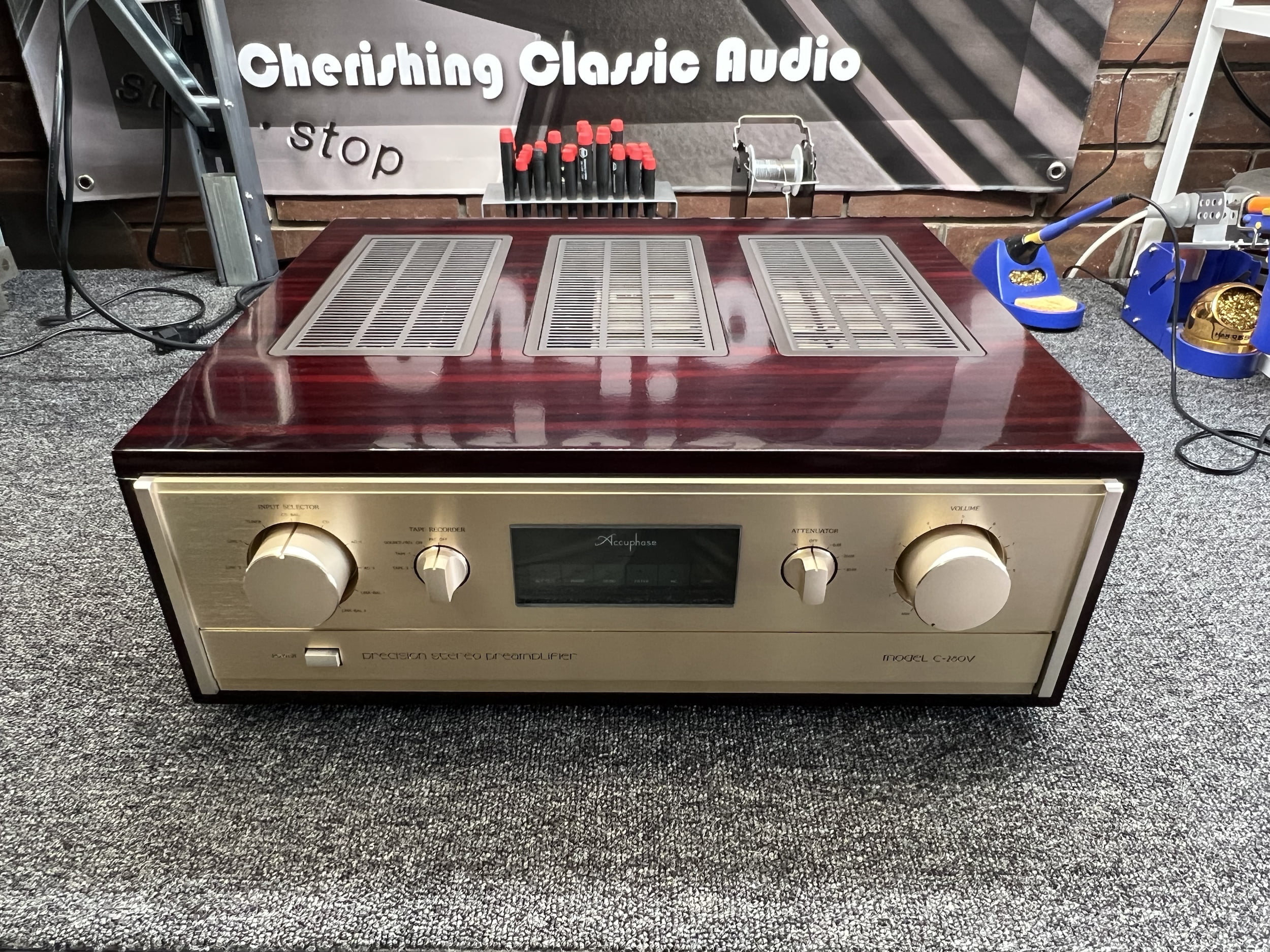
Peaking with the Accuphase C-280V in 1990, at a cost of a cool 800,000 Yen, Accuphase changed things slightly with the new C-290, which I’ve just acquired an example of. The Accuphase C-290 has the same ridiculous build, slightly better in the sense that things are simplified a little, but with a separate, optional AD-290 phono preamplifier even better than the one in the C-280V.
All up, the C-290 plus AD-290 phono module cost a staggering 1.1 million Yen back in 1993, around $12,000 AUD. The current equivalent Accuphase C-3900 costs $50,000 AUD, and then you need to buy the C-47 phono preamplifier for $18,000 AUD. Can you see why I’m so fond of legacy Accuphase equipment..?!
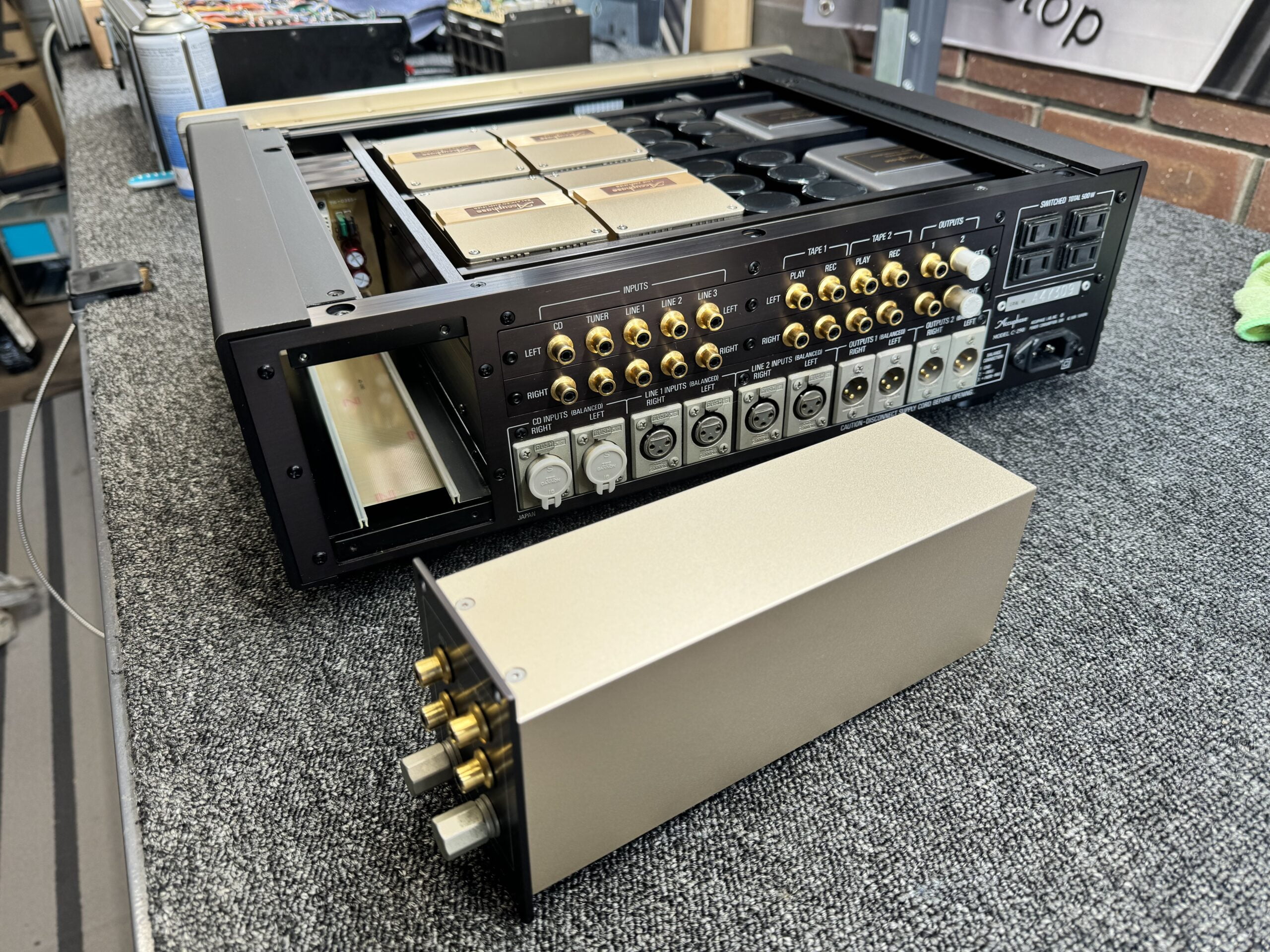
Features
An Accuphase C-280V is completely unlike any modern hi-fi gear that most consider affordable, but why was the 280 series game-changing? Well the C-280, C-280L and C-280V are dual-mono class A preamplifiers, with the most outrageously over-engineered power supplies and circuit modules you’ll ever see, in mainstream gear anyway.

The highest-level 280 series came after the Accuphase 200 series, lovely preamps, but nothing like these monsters! Everything is over-engineered. All circuits are push-pull class A, all housed in gorgeous little shielded modules, each with its own power supply and filter capacitors. Switches and controls are the heaviest and most beautifully machined I’ve seen, besides those in other Accuphase gear.
In the C-280V, the last two modules are separate left and right-channel phono preamp circuits. In the C-290 onwards, these were moved into an optional module. The C-280V has four separate transformers, two of which power these dual-mono phono preamplifier modules. I kid you not: each phono module has dedicated filter capacitors and a transformer.
Only Accuphase designs and build things this way with such extraordinary engineering attention to detail, and disregard for cost. These pieces are super expensive, for good reason. The power supply contains 120,000uF of capacitance, far more than most power amplifiers, boards are covered in gold, literally, and almost no expense is spared.
Other features include an ultra-premium conductive plastic volume potentiometer, one of the nicest I’ve seen. The preamp is fully balanced end to end and the phono preamp has adjustable gain and loading for just about any cartridge you would wish to use.
For vinyl lovers, the C-280V is a corker, sounding phenomenal, far better than dedicated phono preamps I’ve compared it to, including the $5,000 AUD Manley Chinook and smashing the over-rated Gold Note PH-10 which is a toy by comparison. It kicks butt with line-level sources too.
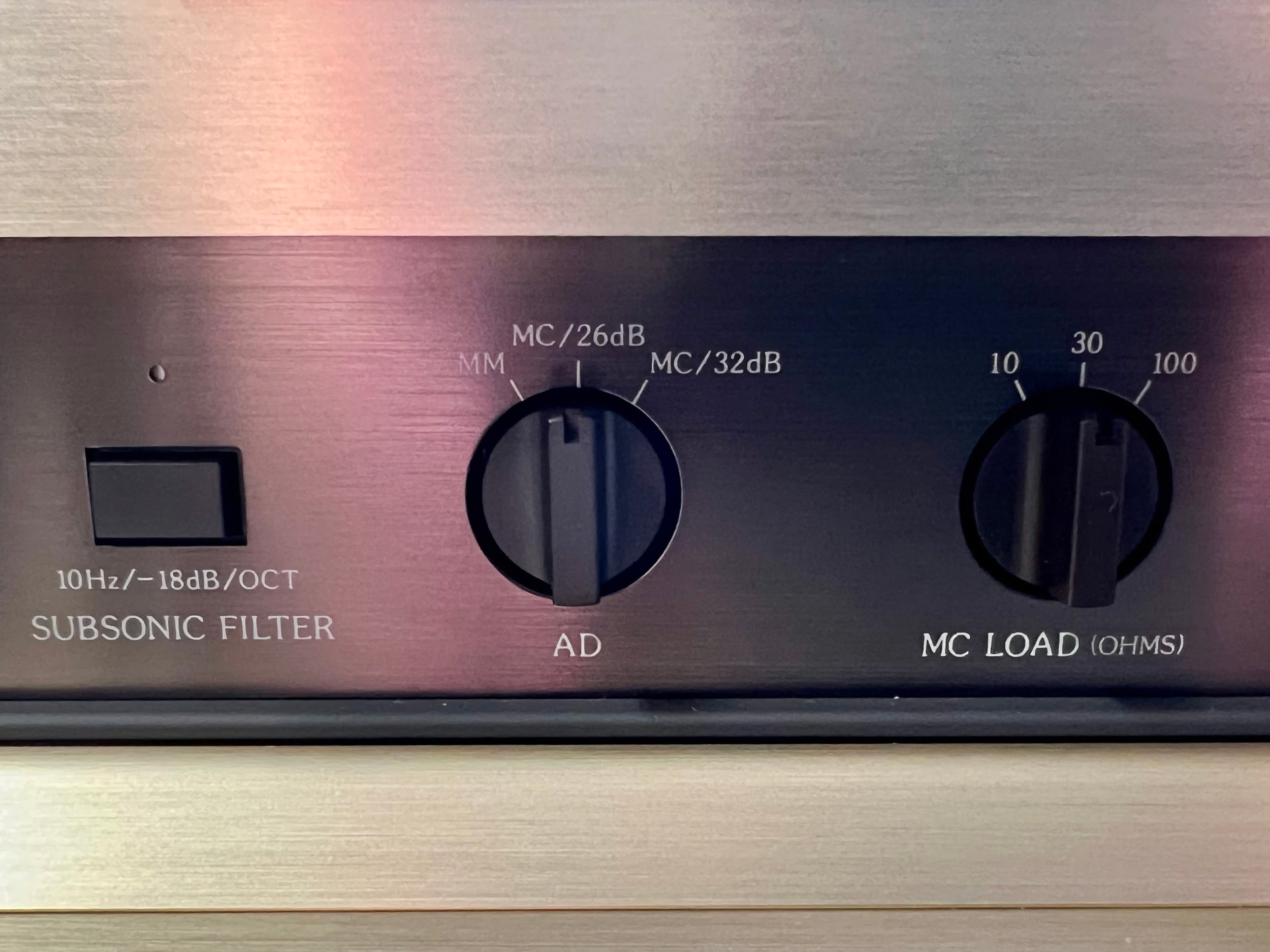
Service
Here are a few pictures of my Accuphase C-280V. This example is in very good, almost perfect condition. She’s received some phono preamp repairs in the previous 30 years, but I’ve made all the necessary service adjustments following the factory service procedure. I’ve also cleaned and lubricated where needed, including that monster potentiometer which can get a little stiff with age, and replaced a couple of capacitors in the phono preamp modules.
I should mention that I have a stock of ultra-premium parts including silver mica and polystyrene capacitors for supercharging the phono preamp and other modules in any of the 280 series preamplifiers including the C-280V, should that work be required. I’ve not made those improvements here but the next owner may choose to have that work done. Let’s go!
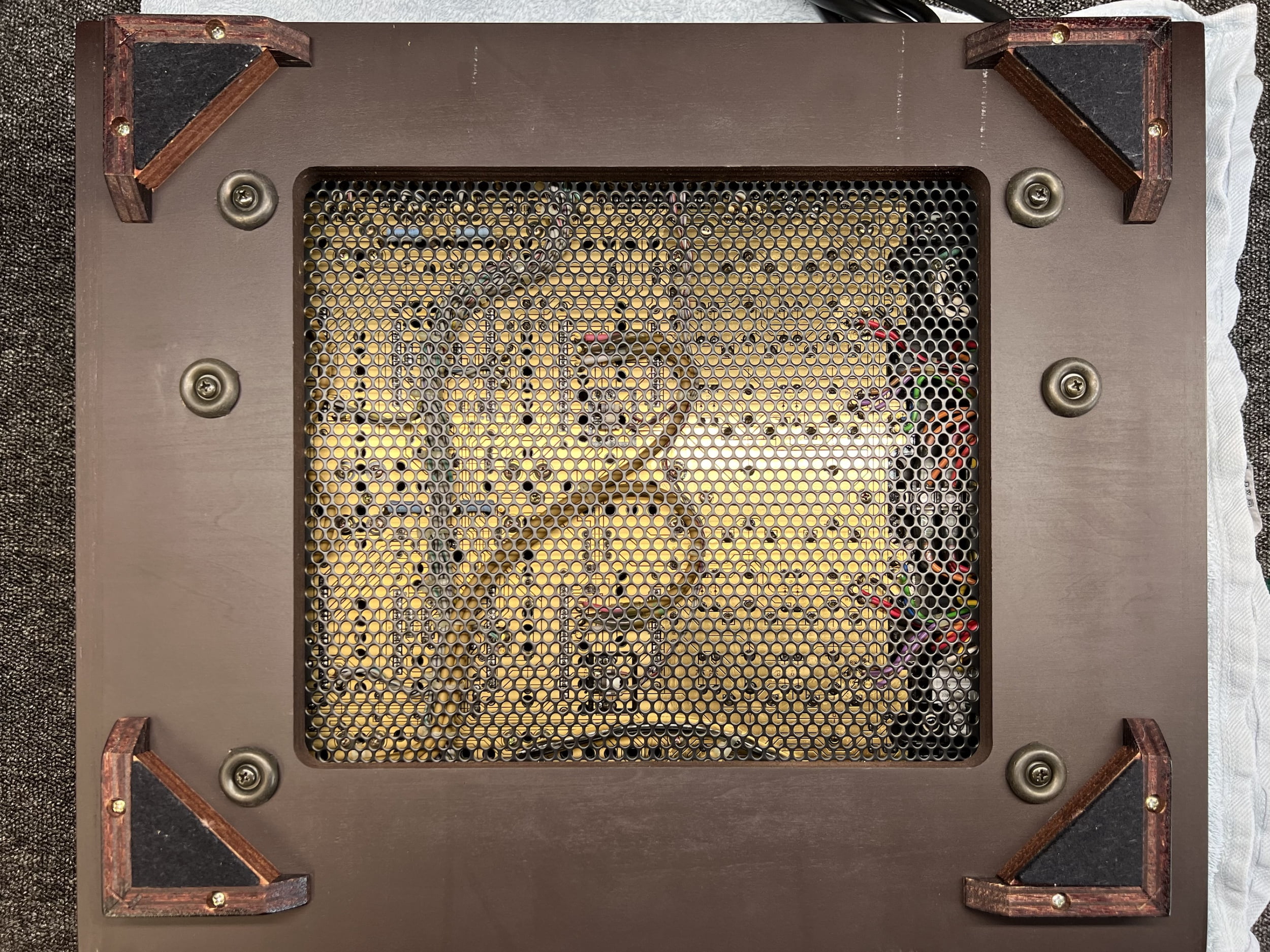
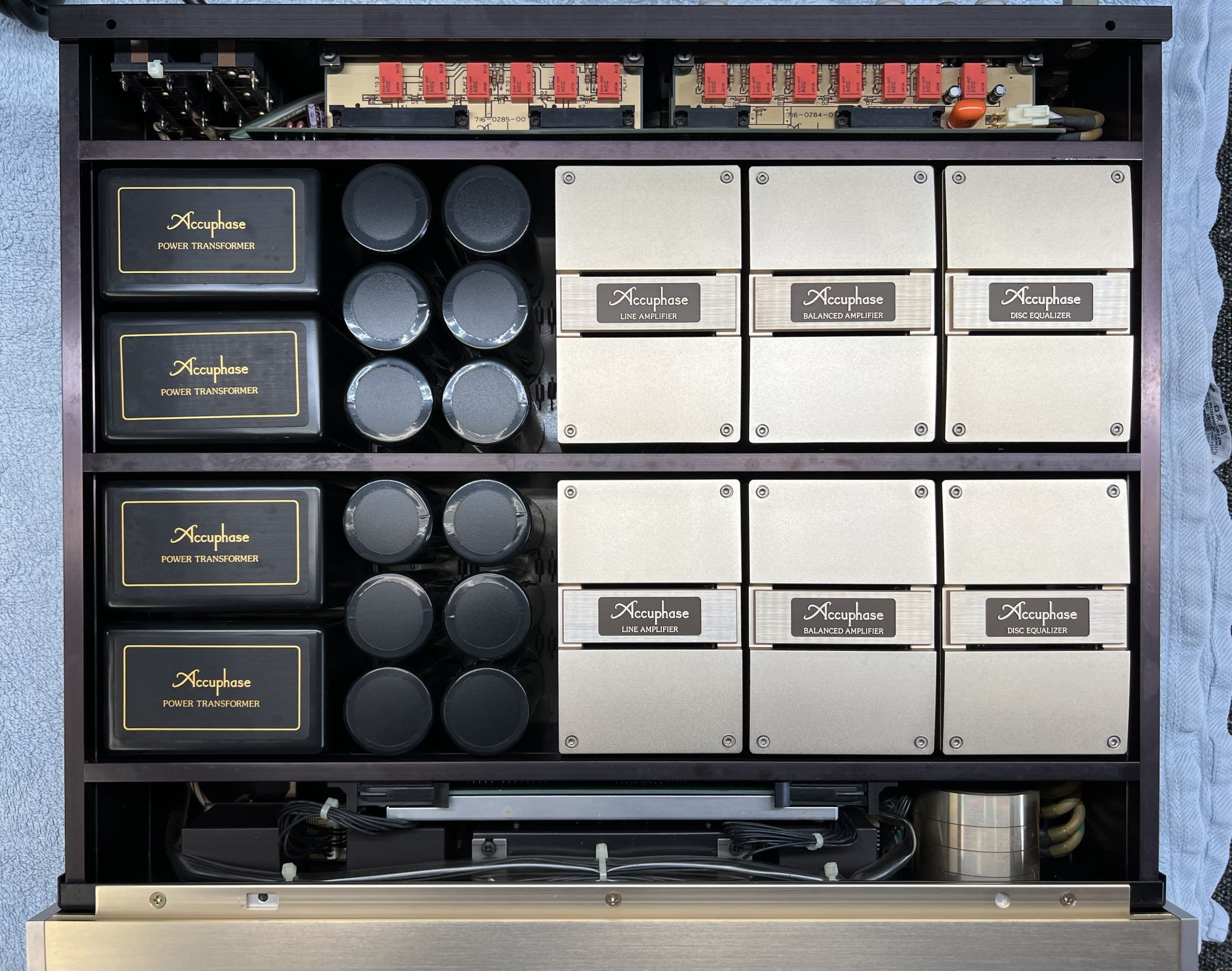
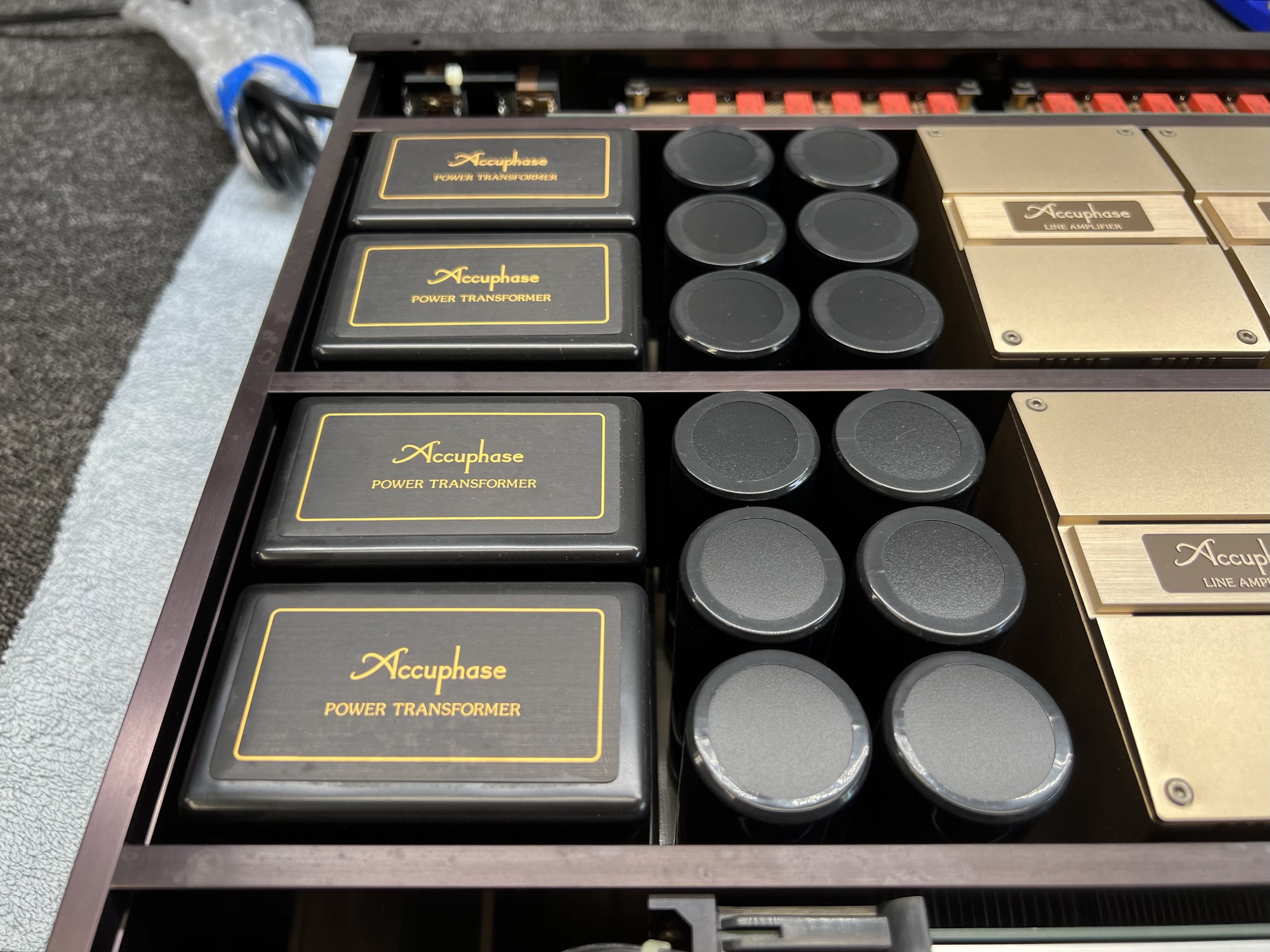
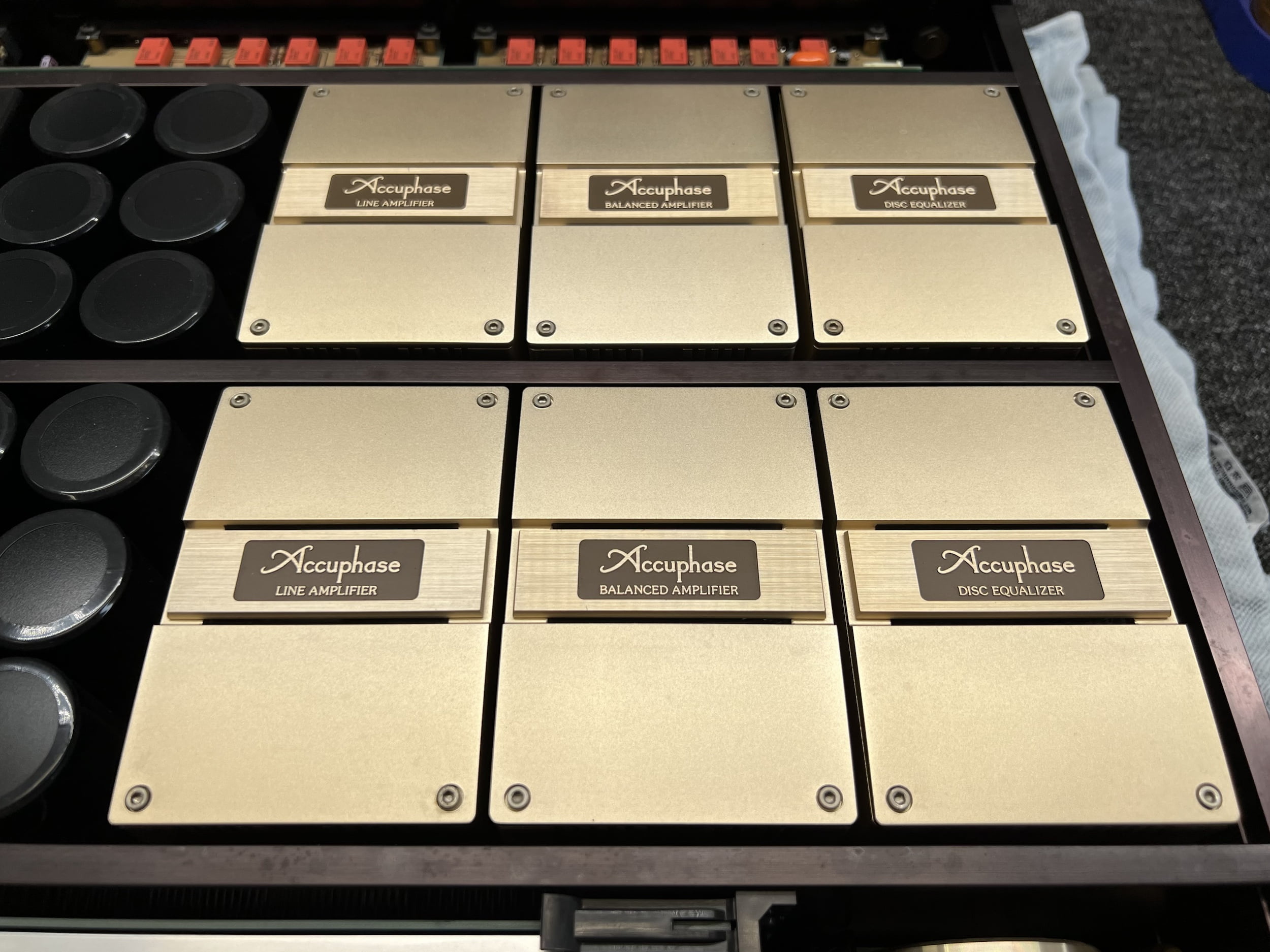
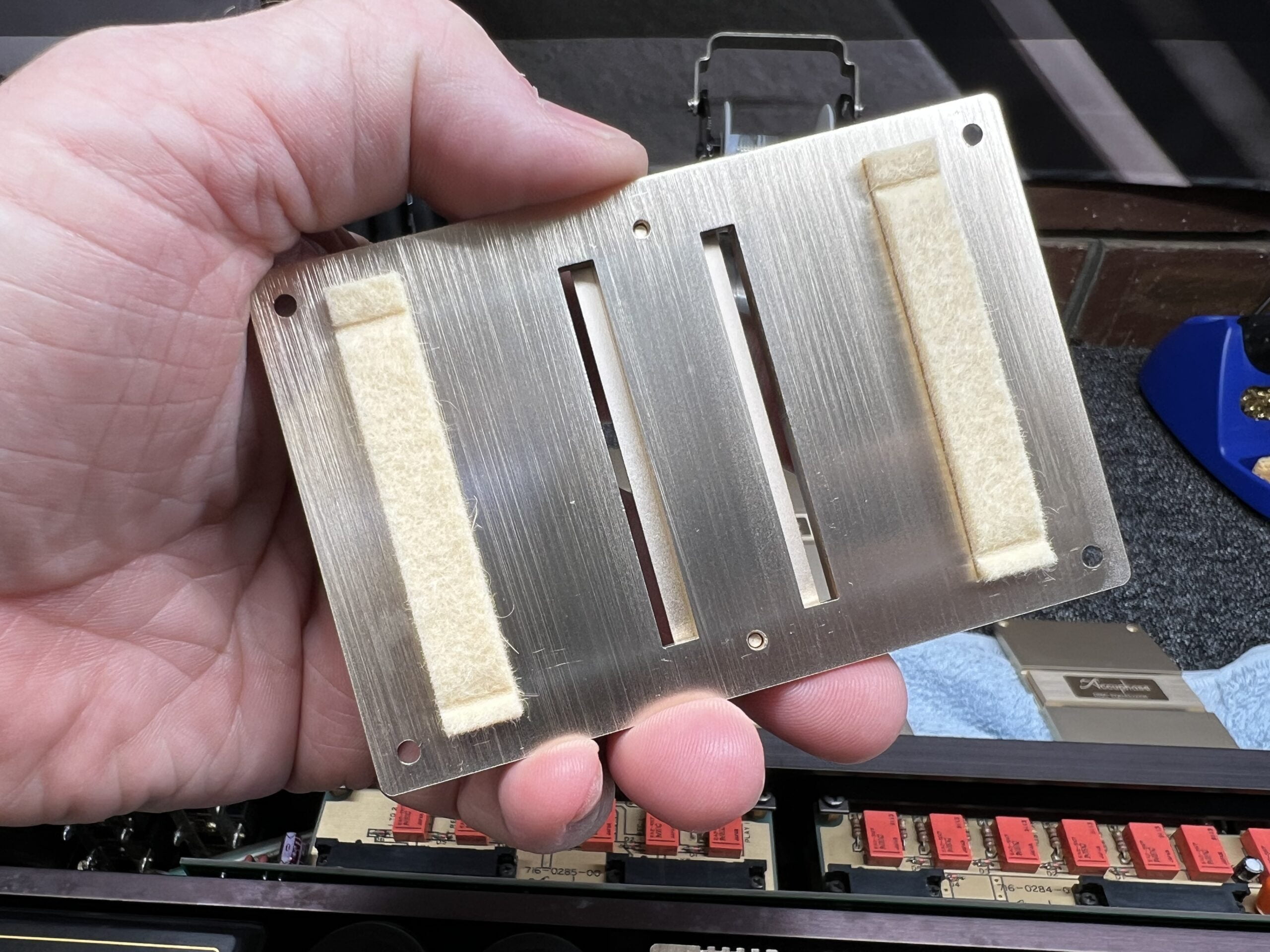

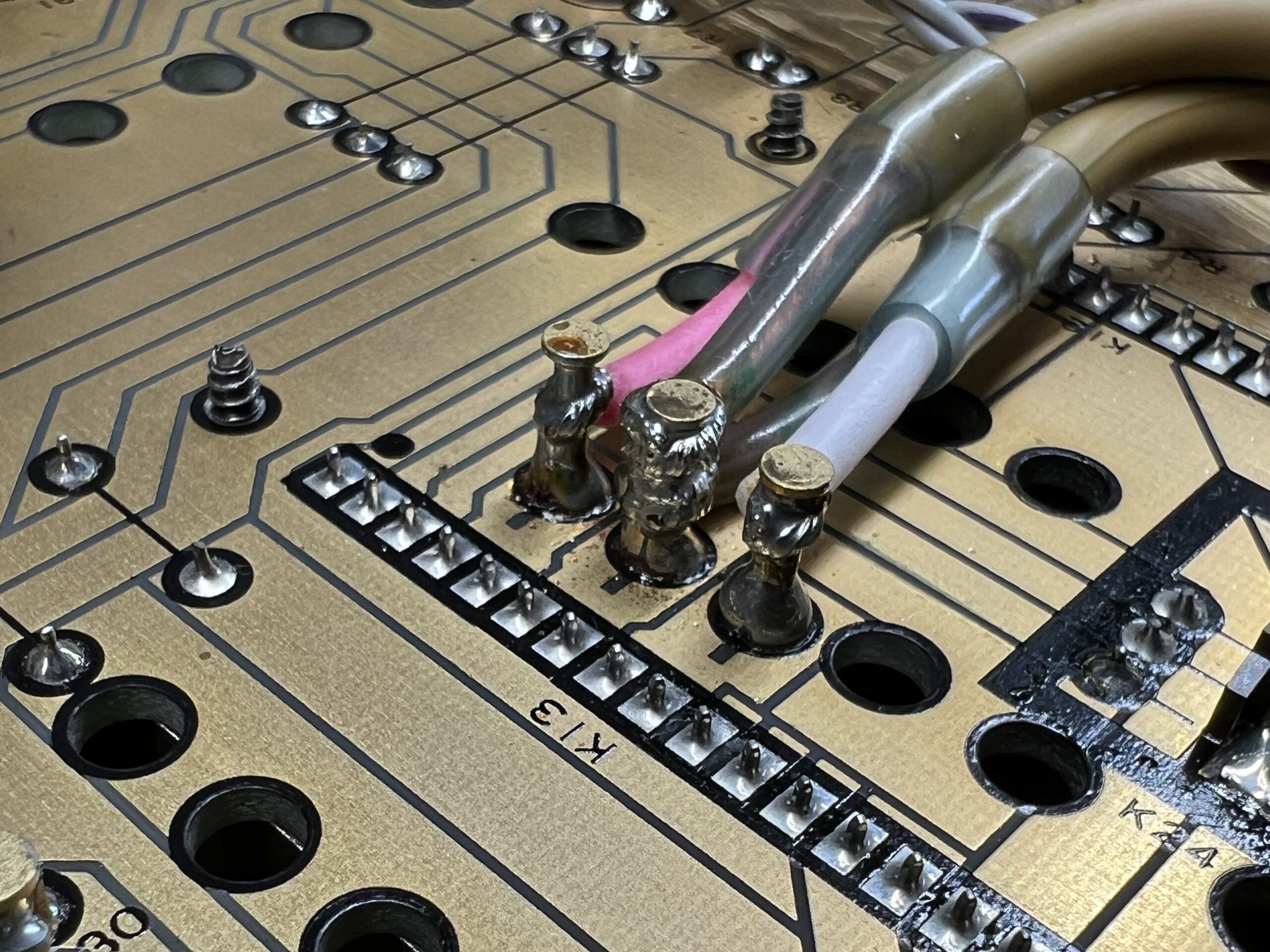
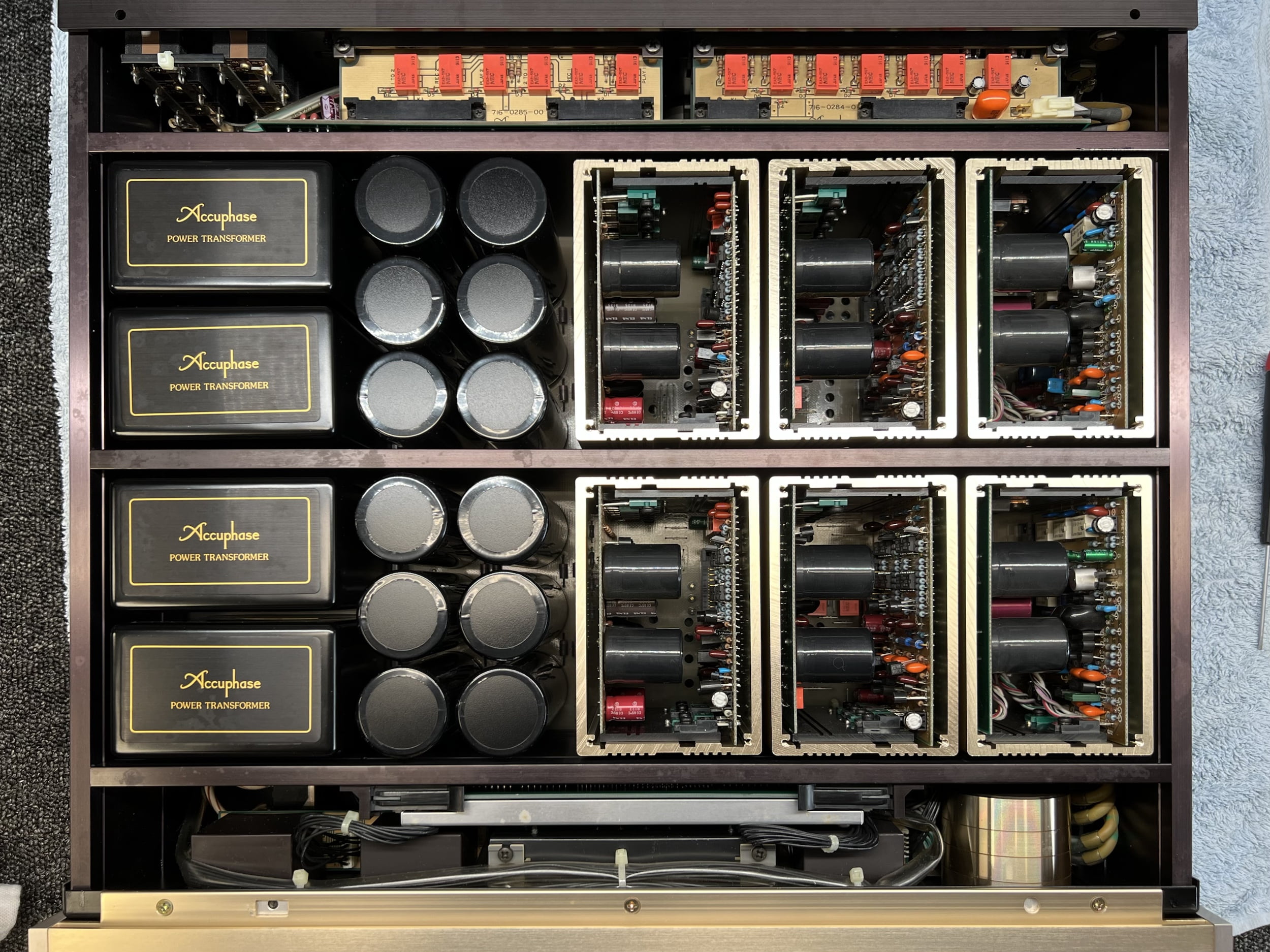
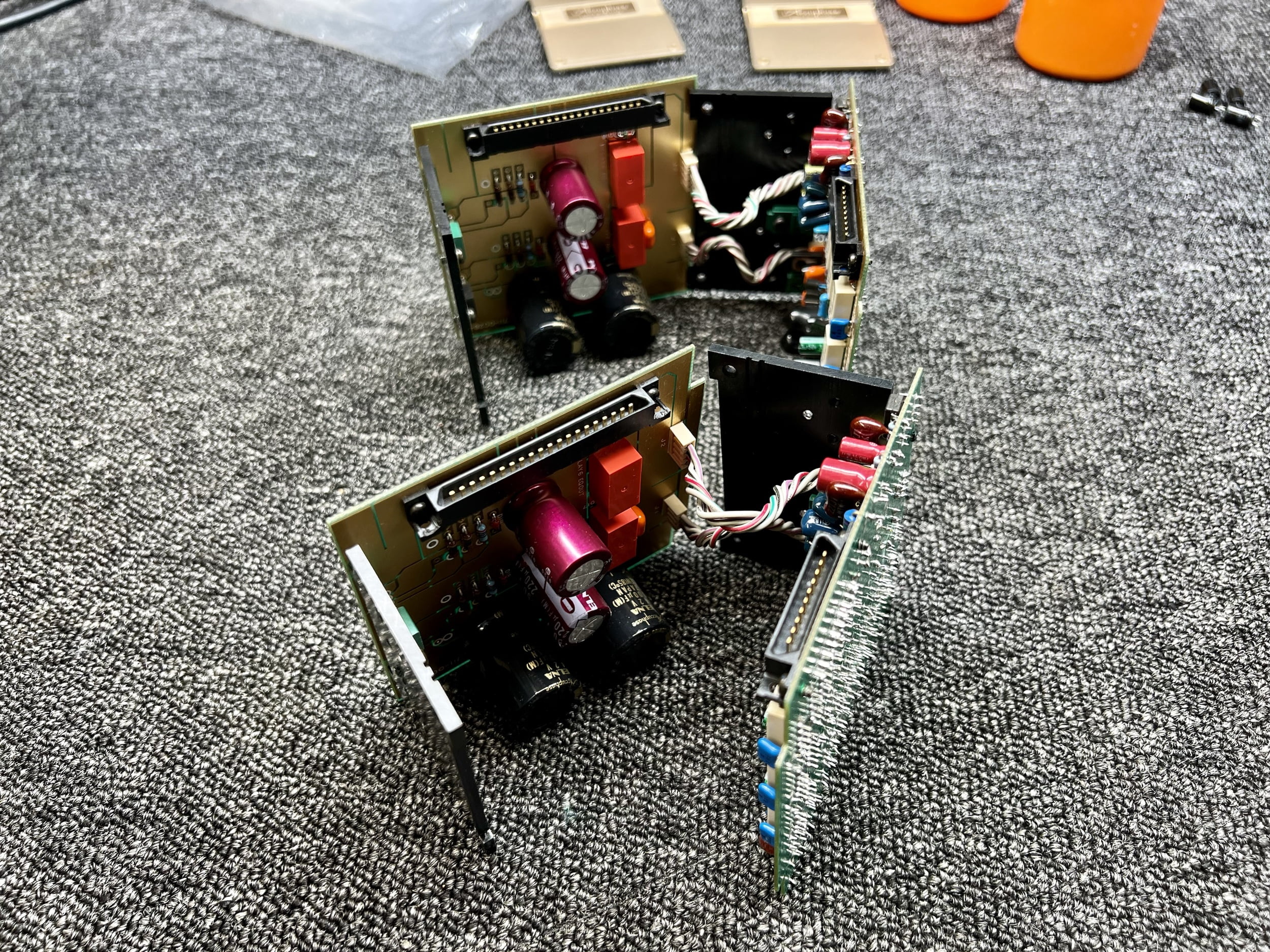
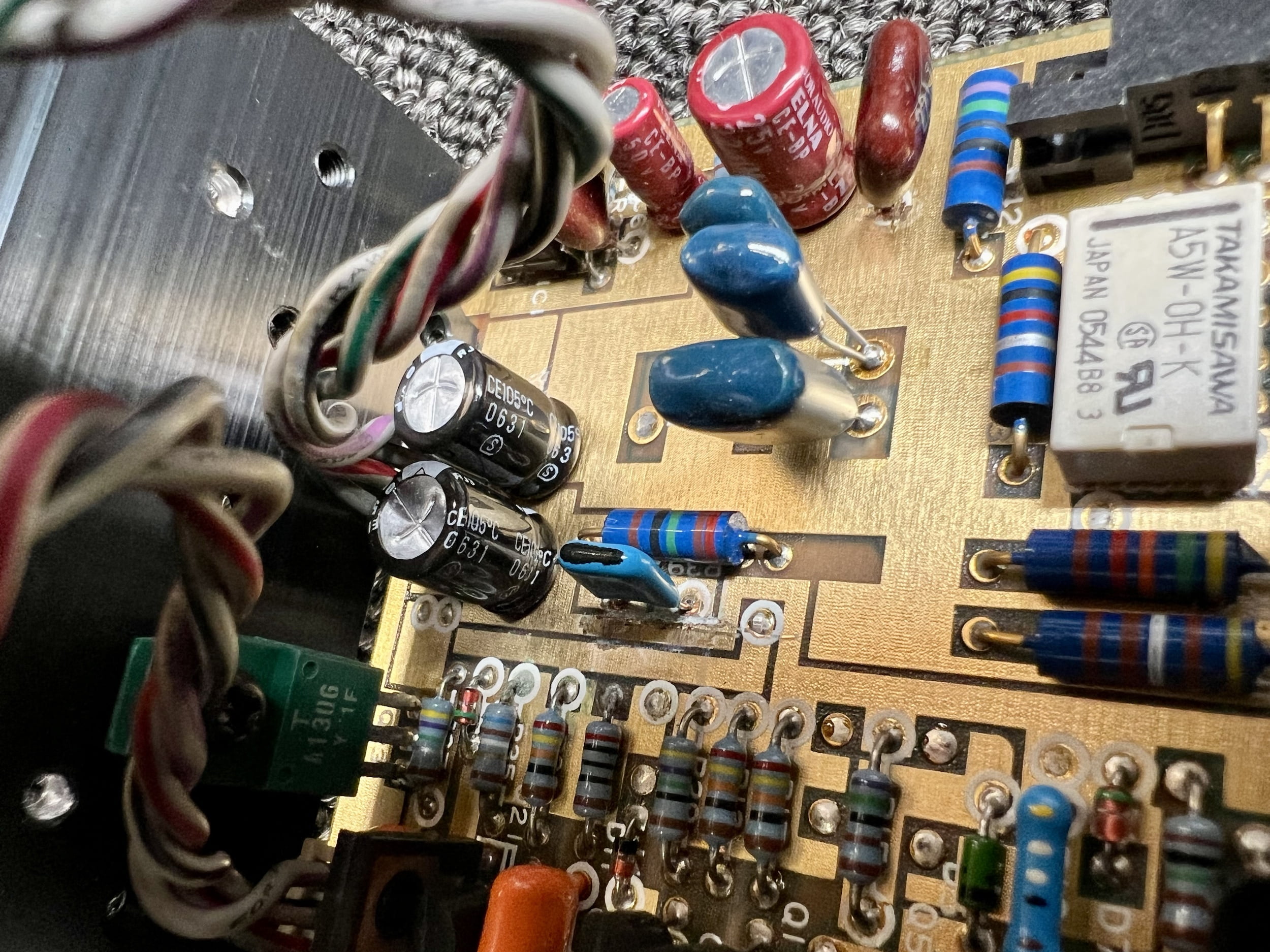
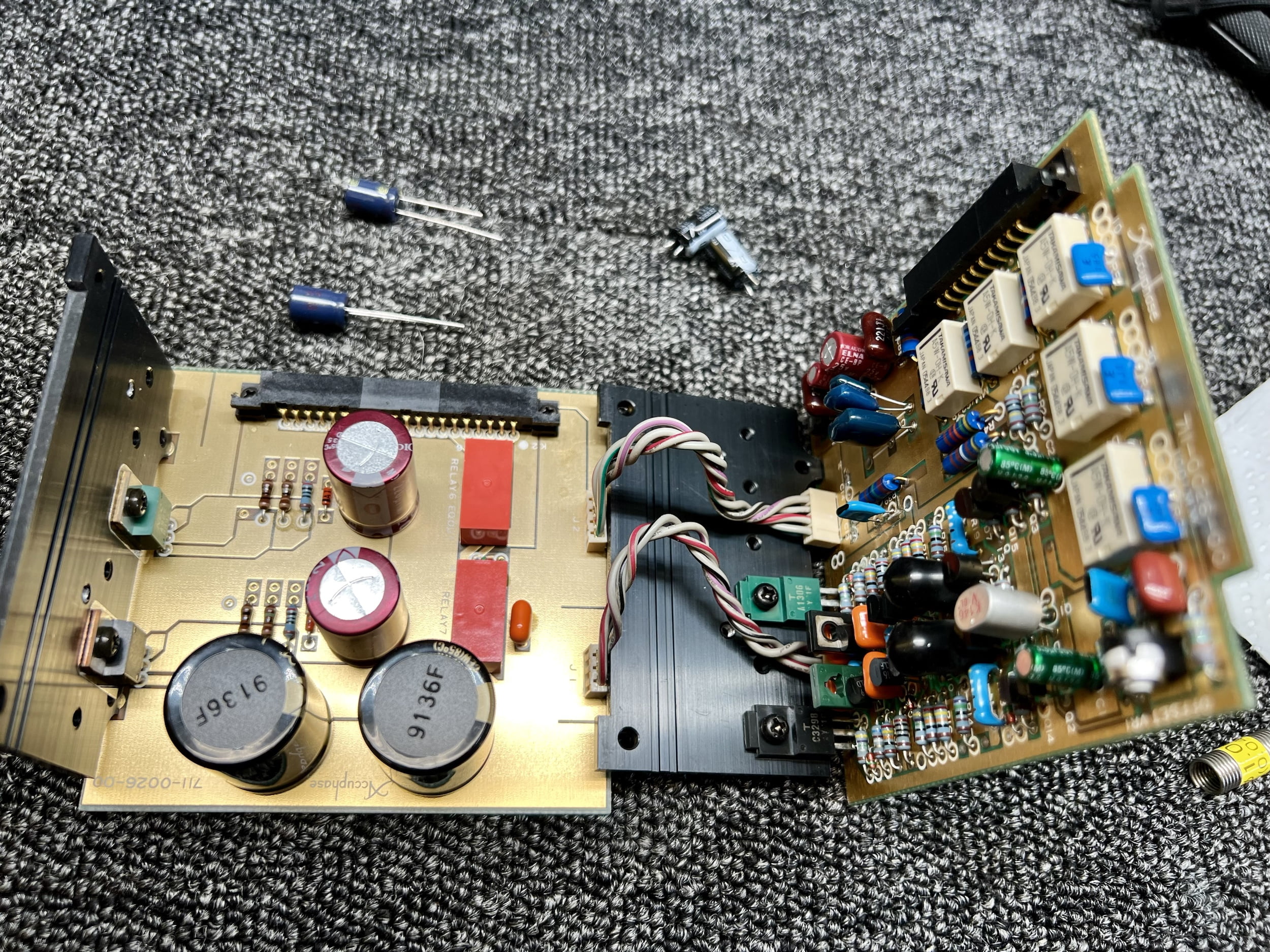
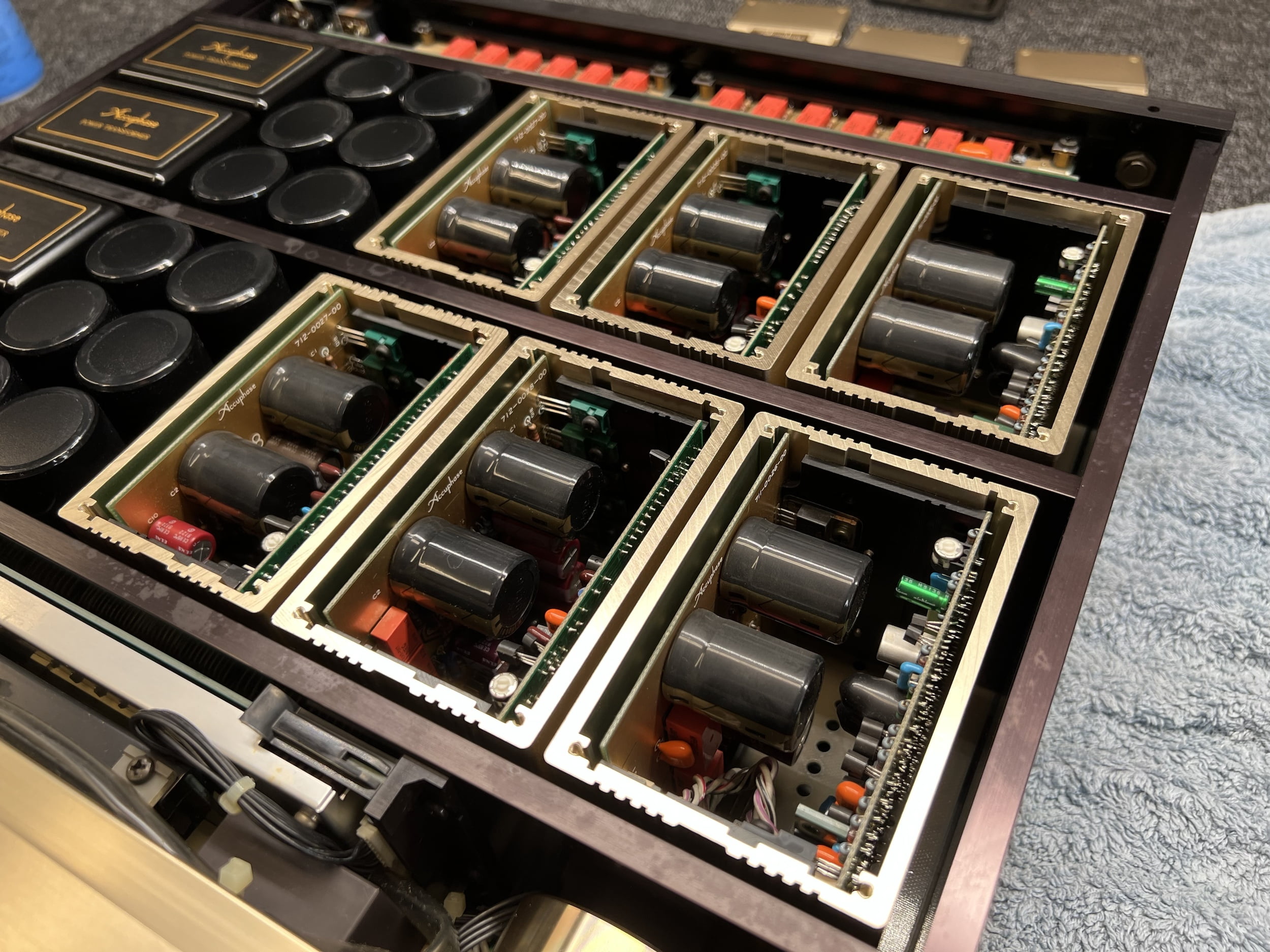
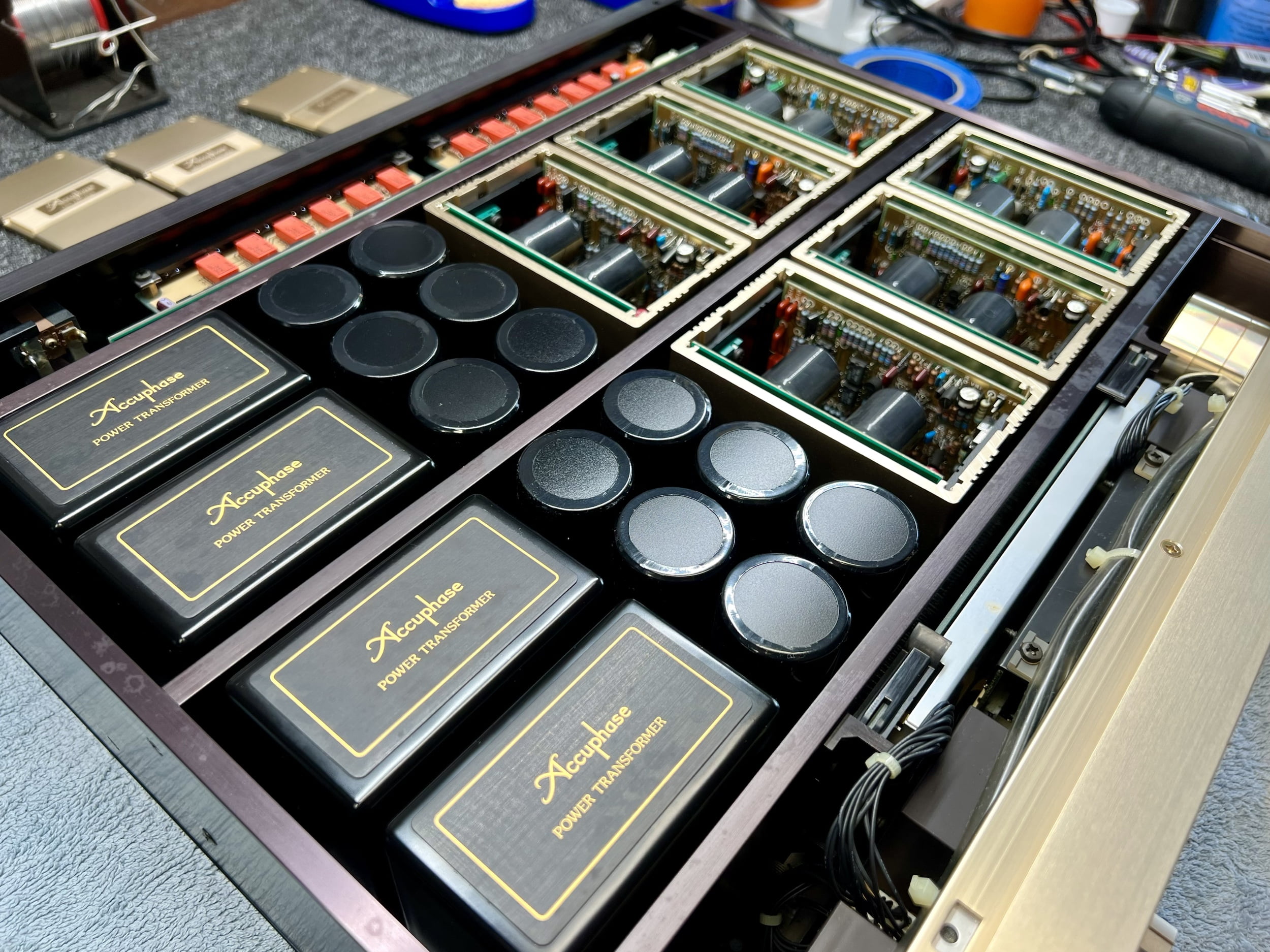
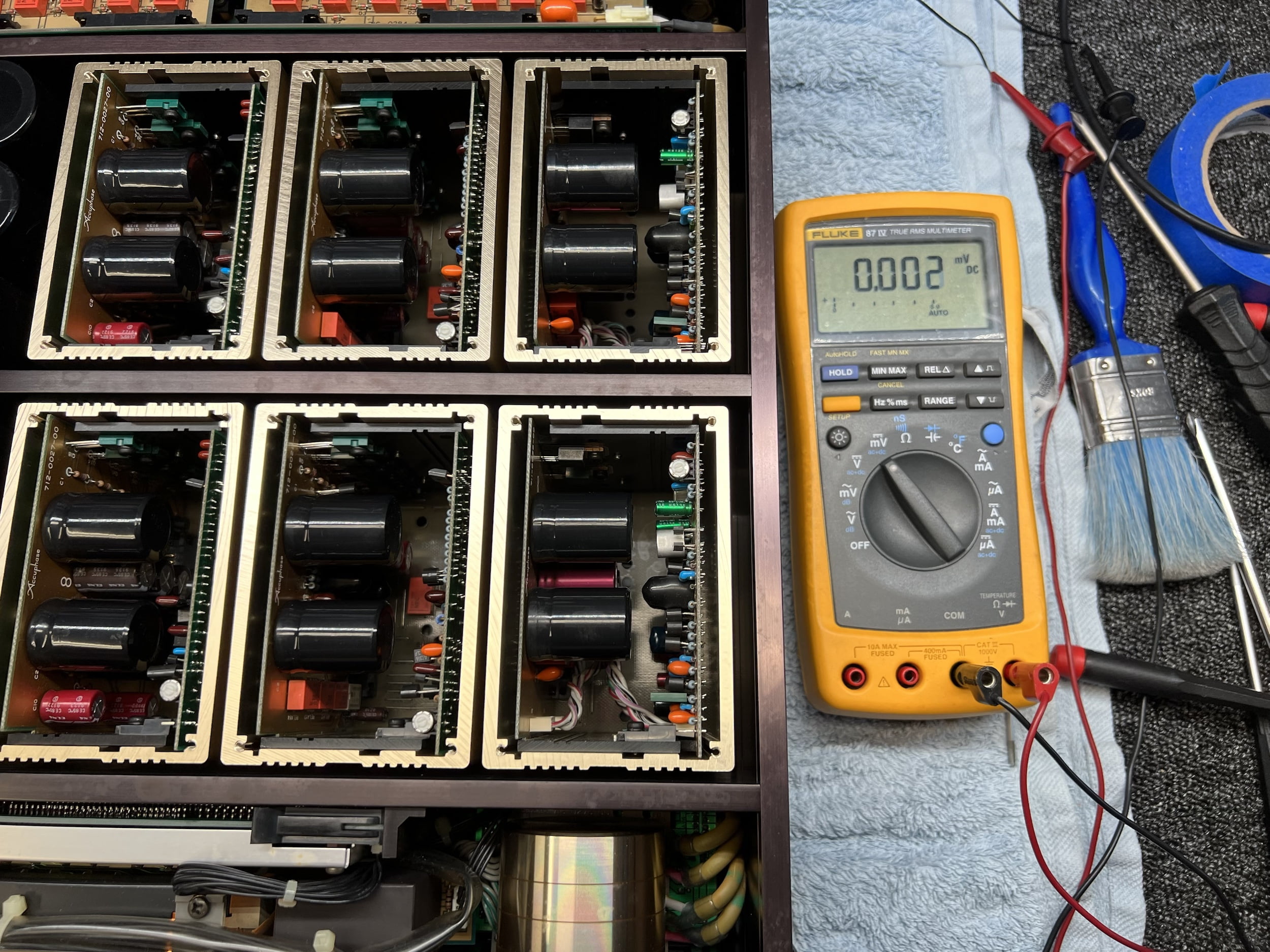

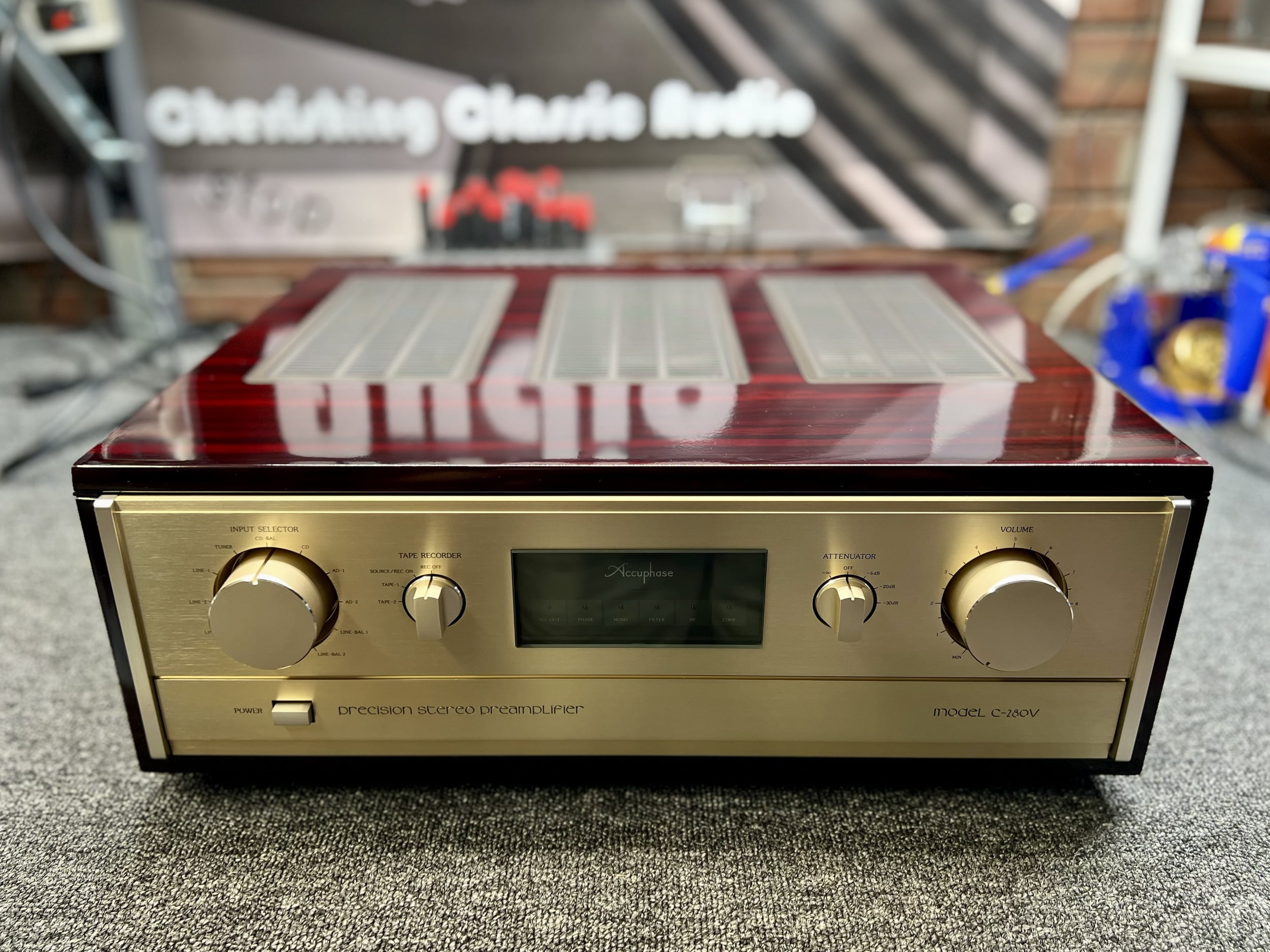
Results
There’s a great scene in The Chronicles Of Riddick where Riddick (Vin Diesel) says:
“Look, I’m not with everyone here.”
This for me encapsulates Accuphase as a brand. They do things completely differently, have a unique design language and aesthetic, eschew flavour-of-the-month nonsense tech and are a through-and-through hi-fi audio company ONLY. Accuphase truly is not with any of the other mainstream audio brands.
In every way, Accuphase equipment is a cut above almost everything else I’ve ever seen, worked on, owned or listened to, and that’s thousands of pieces of gear, some of them serious high-end stuff, over decades. I’m not messing around here, you guys have seen what I’ve worked on and I’ve been saying this for years. I’m planning on showing it more frequently.
Let me make this easy and tell you that the Accuphase C-280V sounds astonishingly good, even better after this service work. I’ve been blessed to own some lovely sounding preamps and phono preamplifiers over the years but none of them match the performance of the C-280V, except for my new C-290/AD-290 combo.
Compared to my previous Accuphase C-202 and Perreaux SM-2, I heard noticeably more bass, more textural details in bass notes and leading edges, a wider, airier soundstage and a smoother, yet better resolved overall presentation.
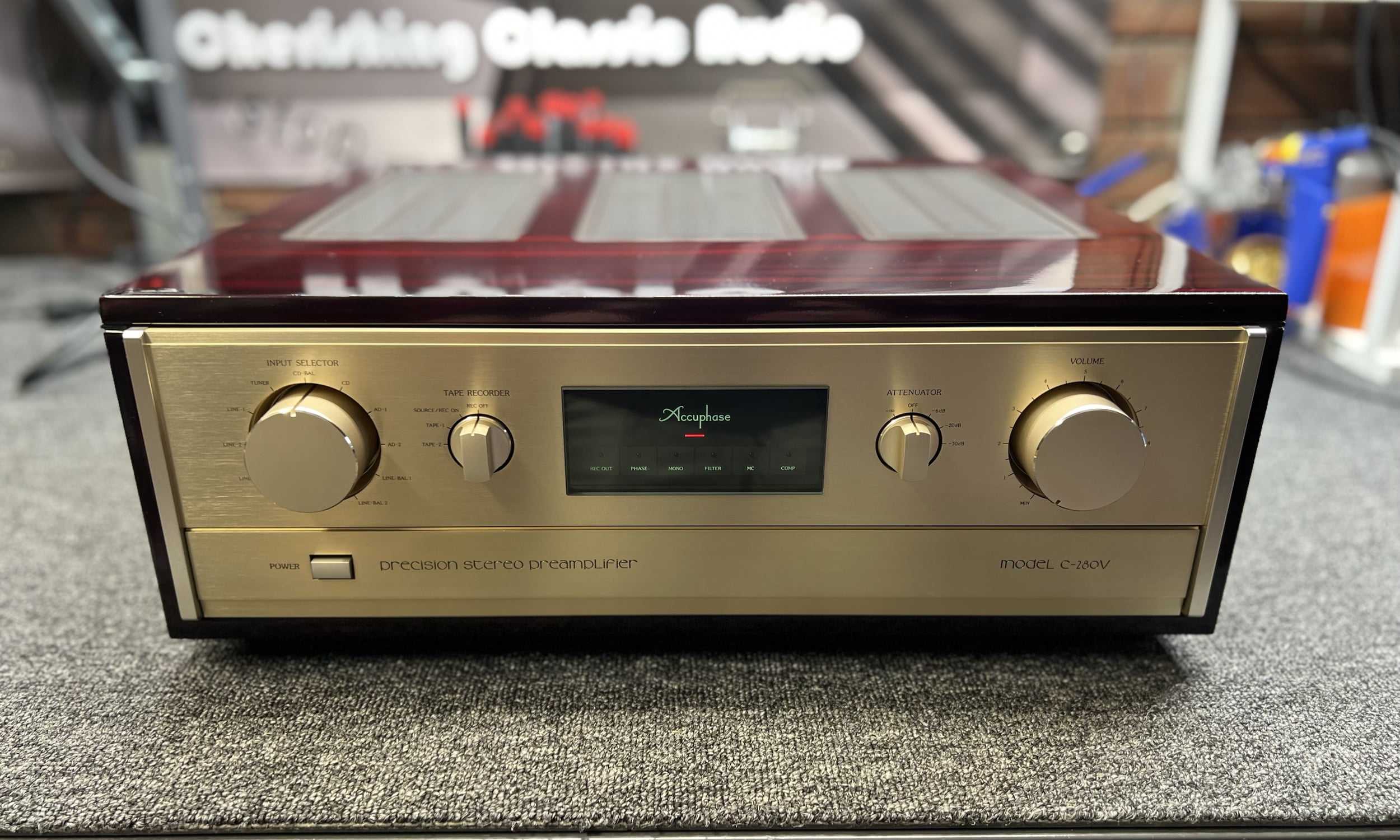
Accuphase C-280V for Sale!As mentioned, I love this stunning, endgame Accuphase C-280V, but my C-290 is better, as I predicted, based on an analysis of the various design elements. For this reason alone, I am selling this almost pristine piece of equipment.
I can assure any potential new owner that one never regrets a purchase like this. Pieces like this C-280V seriously advance any system capable of revealing the improvements available. I was staggered at how much better this C-280V was than my previous C-202, a great-sounding pre. It brought out the best in all the elements of my system, sources especially. It even made me put away my Fidelity Research XF-1 step-up transformers, that’s how good the all-active phono preamp in the C-280V is.

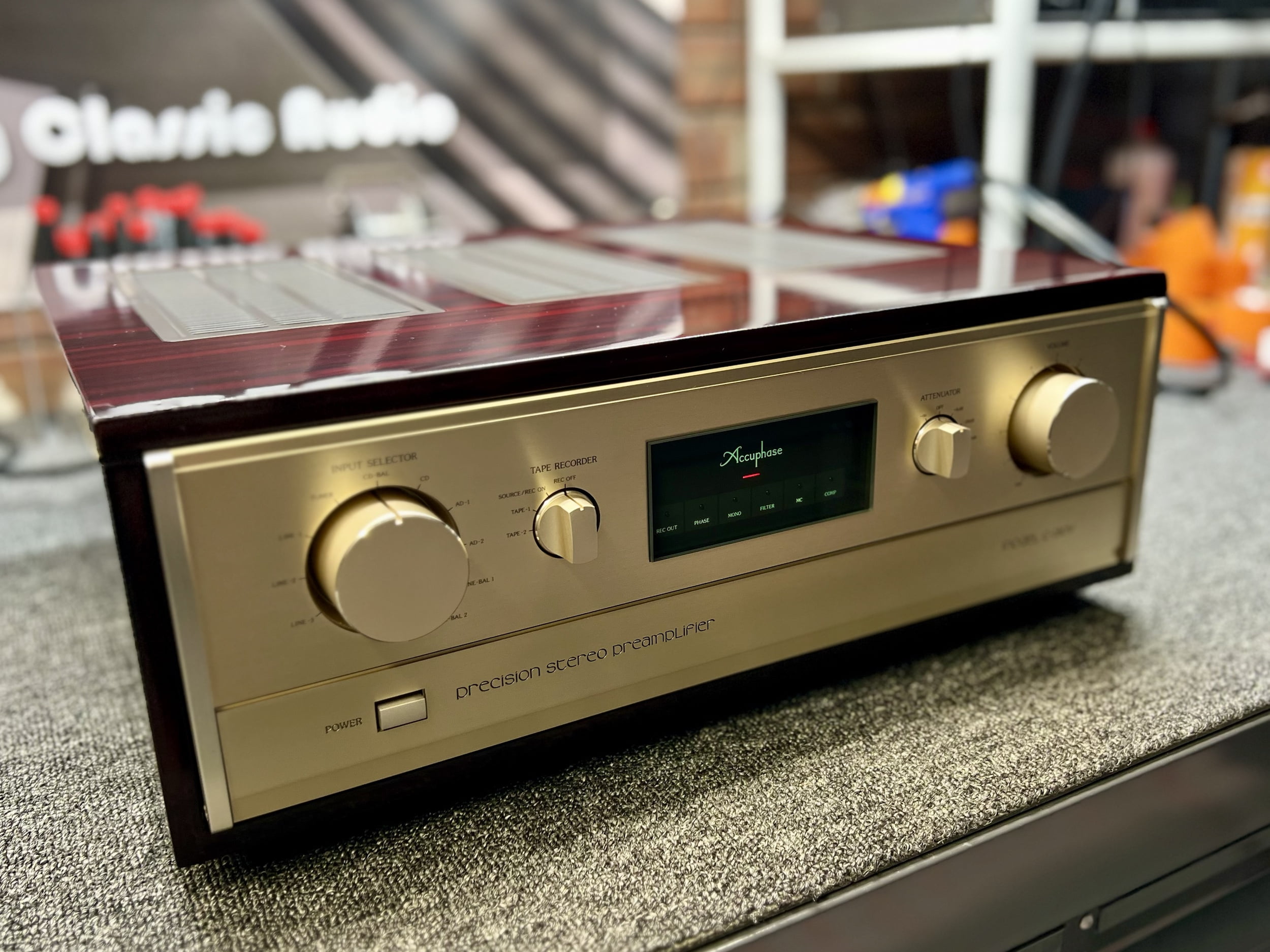


If you would like to own a piece of audio history and one of the finest preamplifiers made, this gorgeous and almost unmarked Accuphase C-280V can be yours for $6,950, serviced and including a 3-month warranty. Local sales only.
If almost seven grand seems like a lot, consider that replacing this C-280V with something equivalent new from Accuphase, like a C-3900, will set you back $50K AUD, plus more for a phono preamp. I reckon that makes older statement pieces like this a bit of a bargain.
Just like the other high-end pieces I’ve sold, I suspect this won’t hang around but let’s see. As always, this is how we do business, no-nonsense, no time-wasting, just straightforward business and exceptional equipment and service for loyal customers who value long-term relationships with those who assist them.
UPDATE: Four purchase offers received within 12 hours, thank you to all interested parties. Sold, thanks, George!
Luxman L-205 Integrated Amplifier
Check out this little beauty, kindly donated by Vlad and ready for a new home!
UPDATE: Sold!
I’ve just completed a service and detail of this great little integrated amplifier and can highly recommend it for smaller systems, second system or first proper system for a youngster.
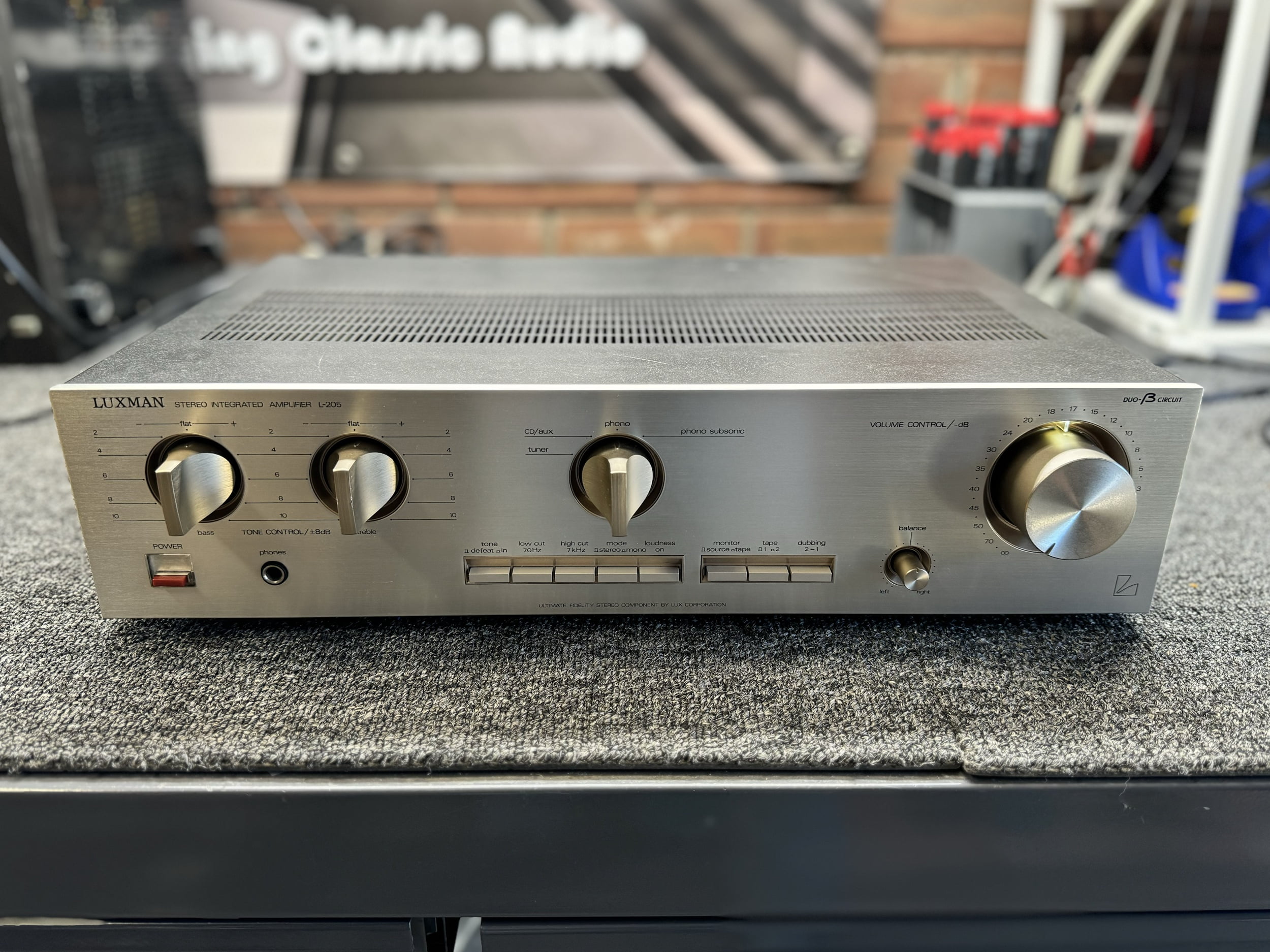
Luxman L-205 Specifications
Power output: 40 watts per channel into 8Ω (stereo)
Frequency response: 10Hz to 100kHz
Total harmonic distortion: 0.02%
Input sensitivity: 1.8mV (MM), 160mV (line)
Signal-to-noise ratio: 90dB (MM), 107dB (line)
Dimensions: 453 x 317 x 111mm
Weight: 5.4kg
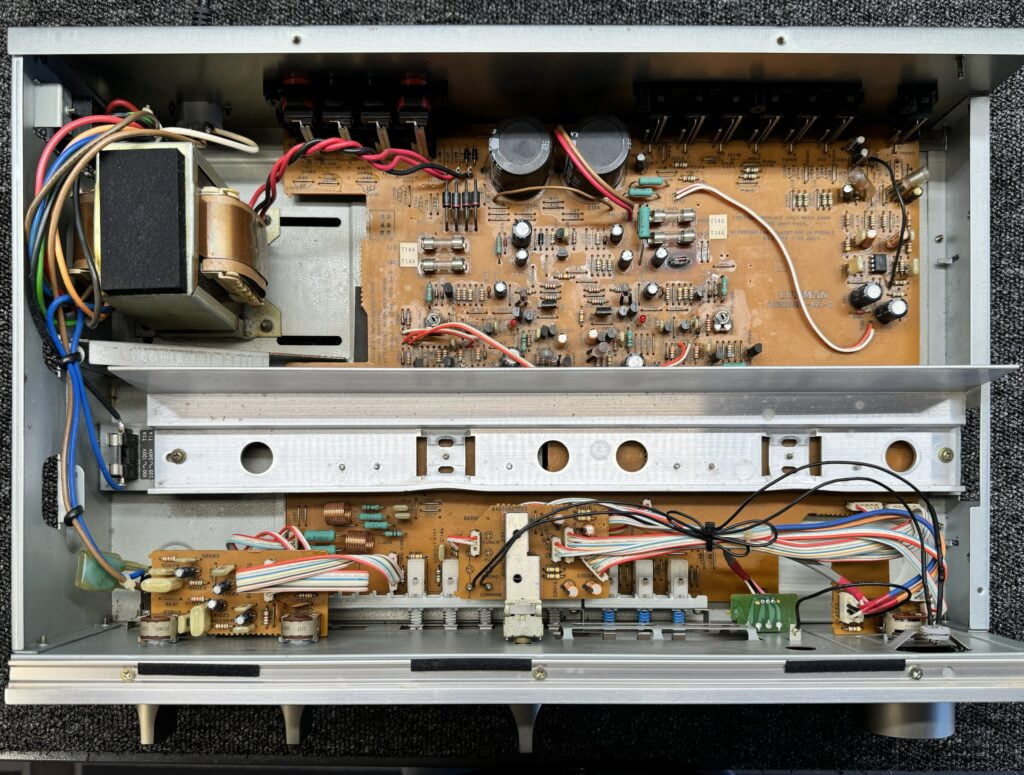
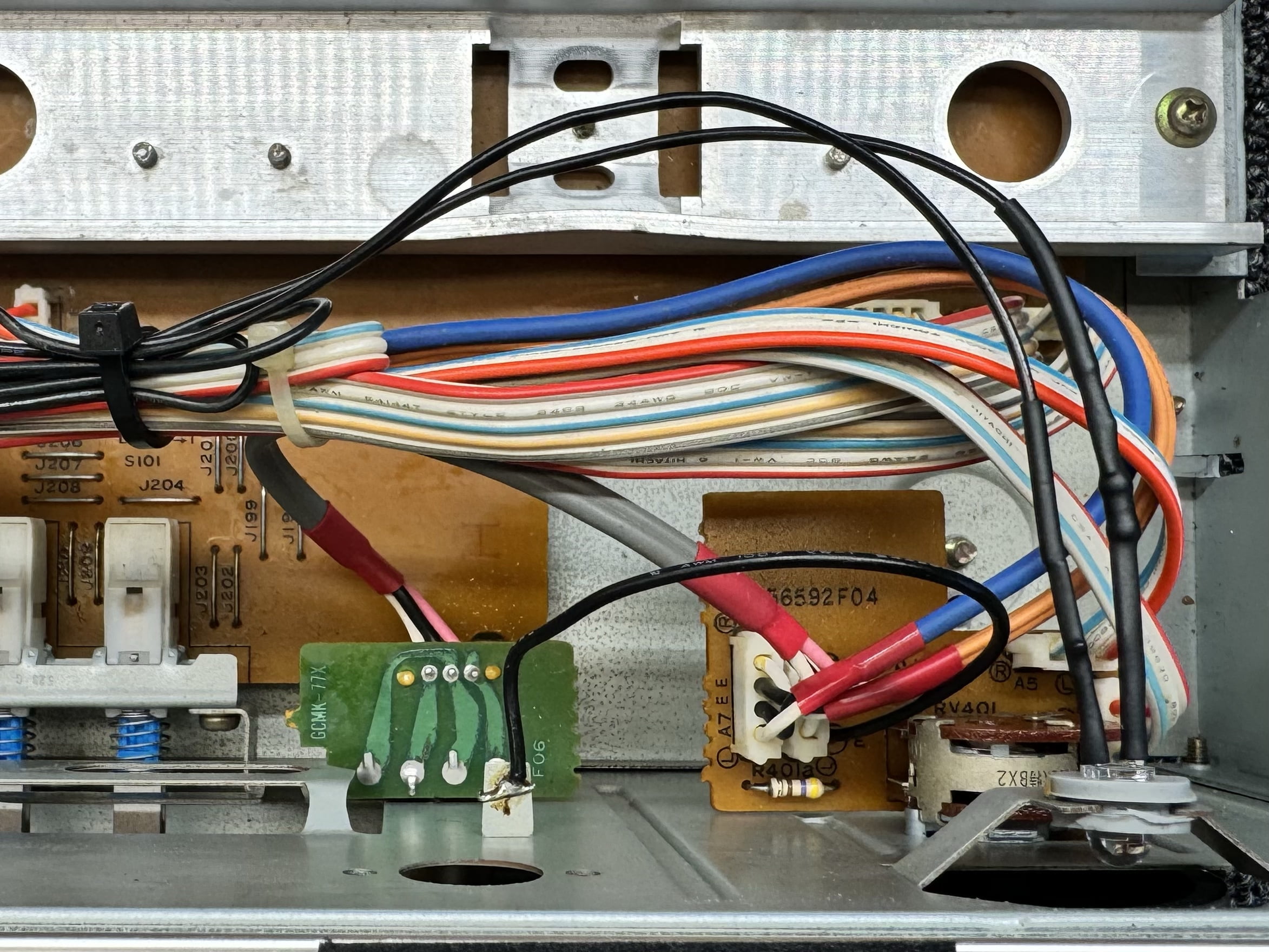
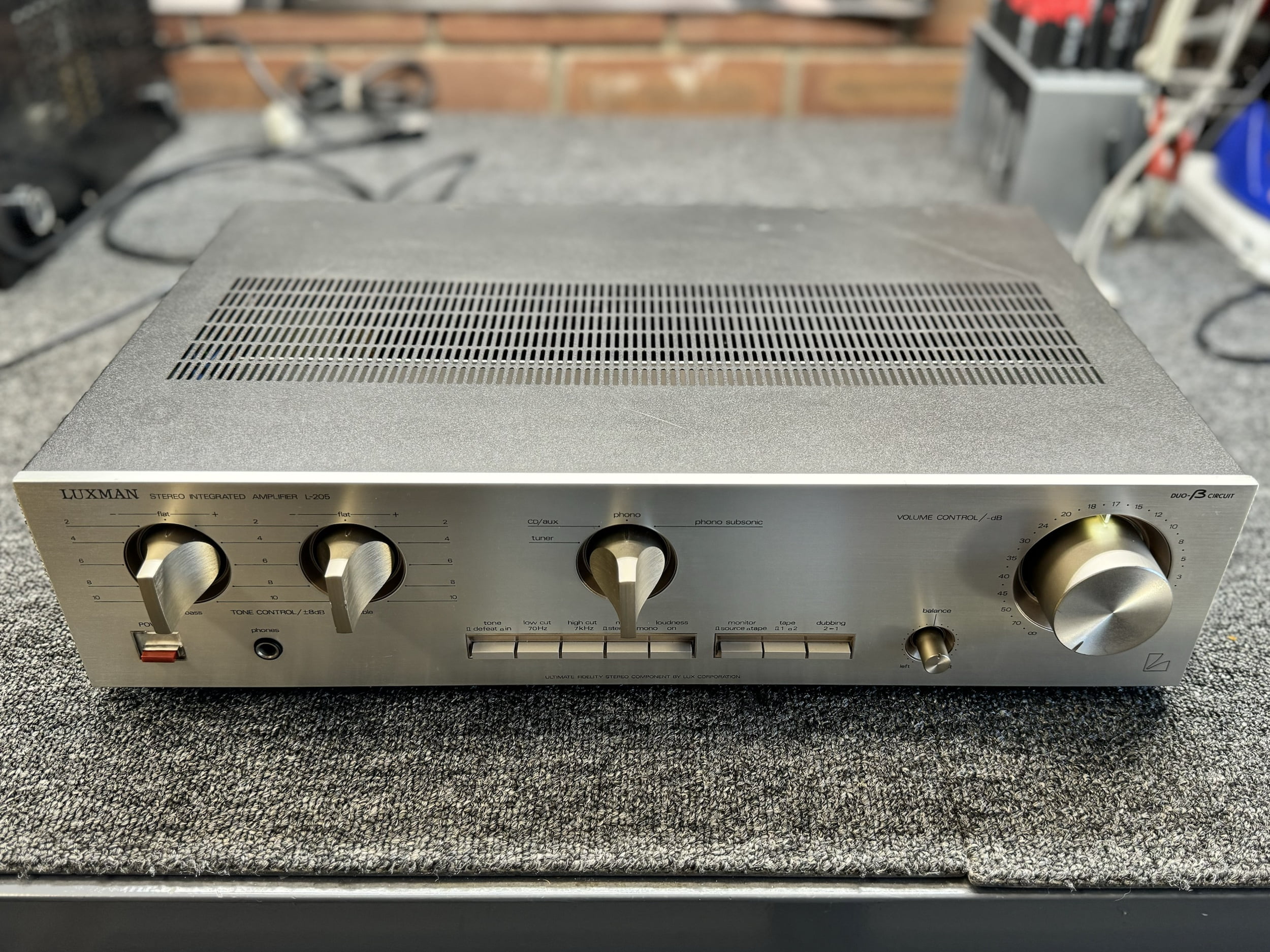
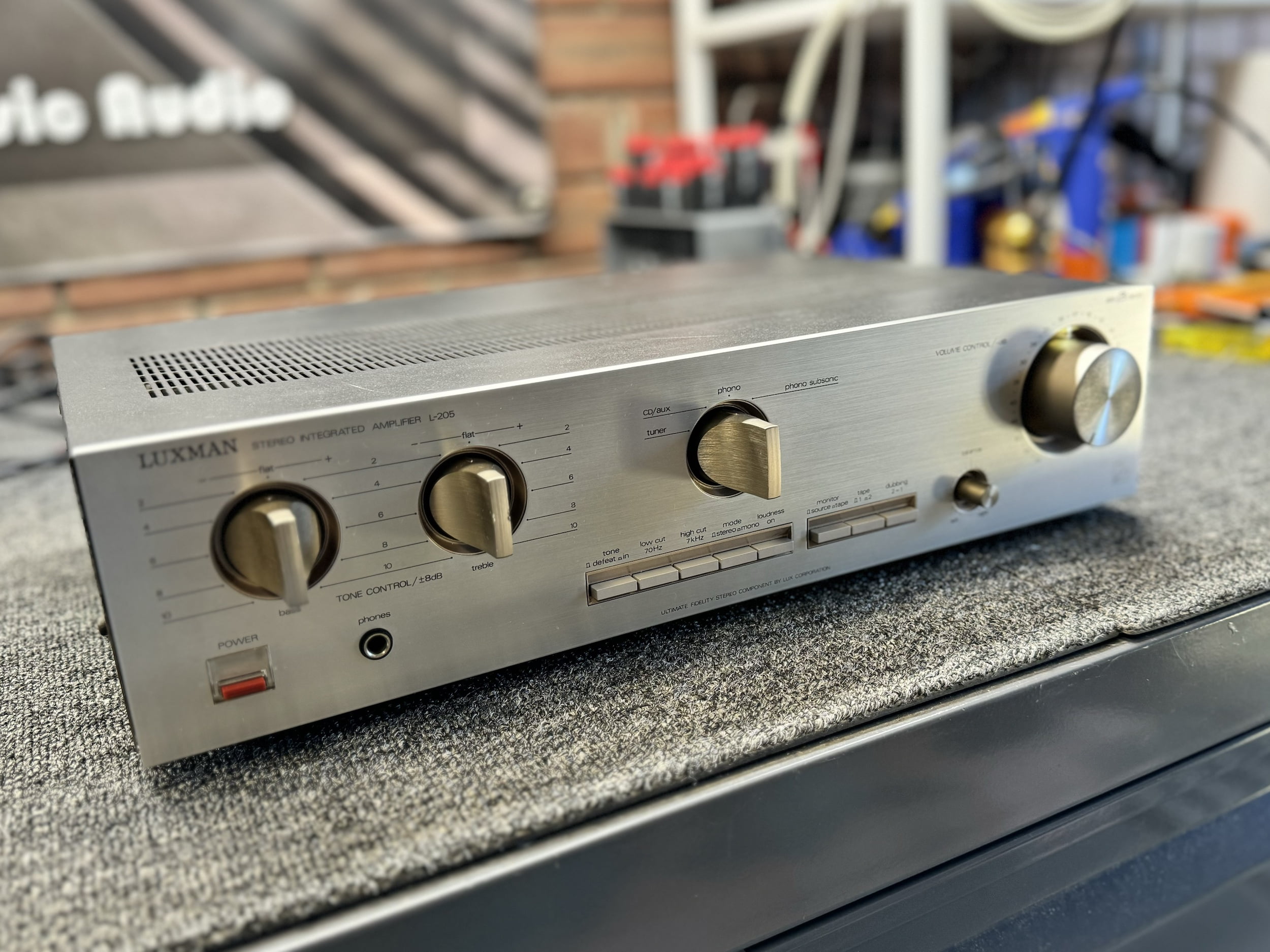

This lovely little Luxman L-205 integrated amplifier can be yours for just $395. Or, you can pay more for Chinese rubbish with no pedigree, Bluetooth and guaranteed to fail within 3 years!
UPDATE: Sold!
Gorgeous Overhauled Accuphase P-360 Power Amplifier
UPDATE: Offers received within an hour of listing and SOLD, for considerably more than the asking price!
As you might have noticed if you’ve been following along, I’ve just purchased something a little bit silly and long overdue. For that reason, I have to move some pieces on and this time it’s my current amplifier reference, my just overhauled Accuphase P-360 power amplifier.
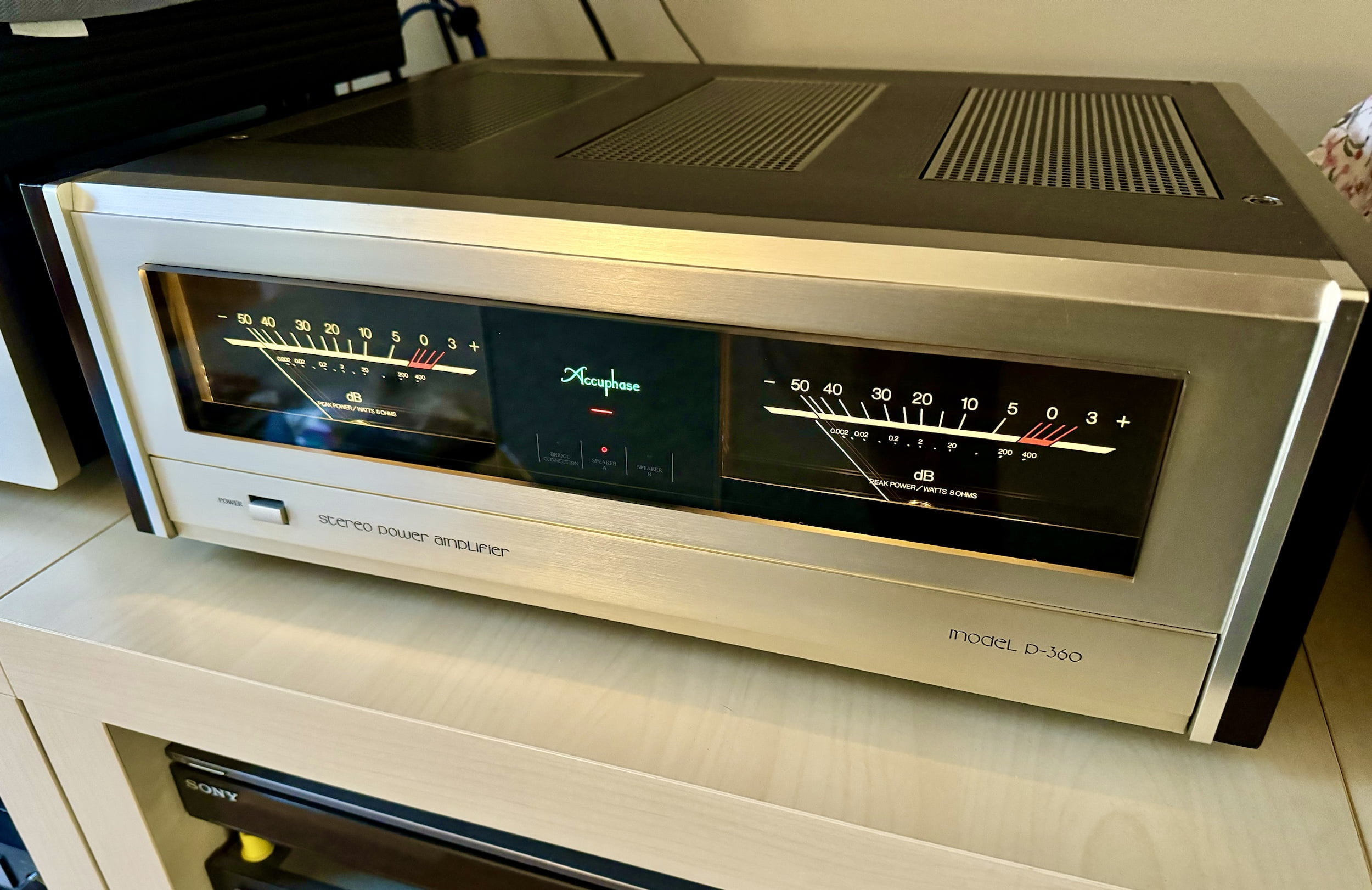
Features
The Accuphase P-30 is a classic class AB bipolar power amplifier, conservatively rated at 200 Watts per channel and boasting some nice features not often seen in premium equipment like this. These include a dedicated headphone amplifier, stepped attenuators, fully balanced and single-ended operation and of course those big, beautiful moving coil power meters.
The P-360 is a more recent design than the P-500 and P-300 series models you see quite a lot of here in Aus, and better too in my opinion. She features the coveted gold power button, indicating that it was part of Accuphases newer, higher-quality tier of equipment. She also features the classic persimmon wood side panels, and they’re perfect by the way!

Top tip for those wanting a super-system: You can bridge these amplifiers so that, if you get a second one, you’ll have 600 Watts per channel and even more authority and grip over any speaker you can connect to them. Madness!
I imported this P-360 last year and have been using and enjoying it immensely since deeply overhauling her immediately after purchase. This thing is a powerhouse, packing a punch and if you read Accuphase’s datasheets, you’ll see that the 200-Watt rating is very conservative. She’ll crank out around 250 Watts per channel before any significant distortion creeps in, but that’s Accuphase for you. They guarantee 200. Cool. I love this approach.
You can read more about the Accuphase P-360 in the product brochure.
Accuphase P-360 Specifications
Courtesy of HiFi Engine
Power output: 200 watts per channel into 8Ω (stereo), 600 watts into 8Ω (mono)
Frequency response: 20Hz to 20kHz
Total harmonic distortion: 0.02%
Damping factor: 300
Gain: 28 dB
Input sensitivity: 1.59V
Signal-to-noise ratio: 120dB
Speaker load impedance: 2Ω to 16Ω
Semiconductors: 10 x IC, 32 x FET, 63 x transistors, 77 x diodes
Dimensions: 475 x 180 x 413mm
Weight: 27.4kg
Year: 1991
Overhaul
I should note that this completely factory-original Accuphase P-360 worked perfectly but sounded dull. She was very dusty and needed a deep clean and some TLC at 30+ years of age. As it turned out and based on some of the parts I tested upon removal, this was a timely overhaul too, because some of the smaller electrolytic capacitors were totally dead.
I replaced all small board-mounted electrolytic capacitors in both amplifier modules and most on the front panel board, added a couple of performance enhancing parts, deep cleaned/washed everything, removed and detailed the front panel and meters, and made all the electronic adjustments. She now looks and sounds a million bucks.
Check the article for all these details!

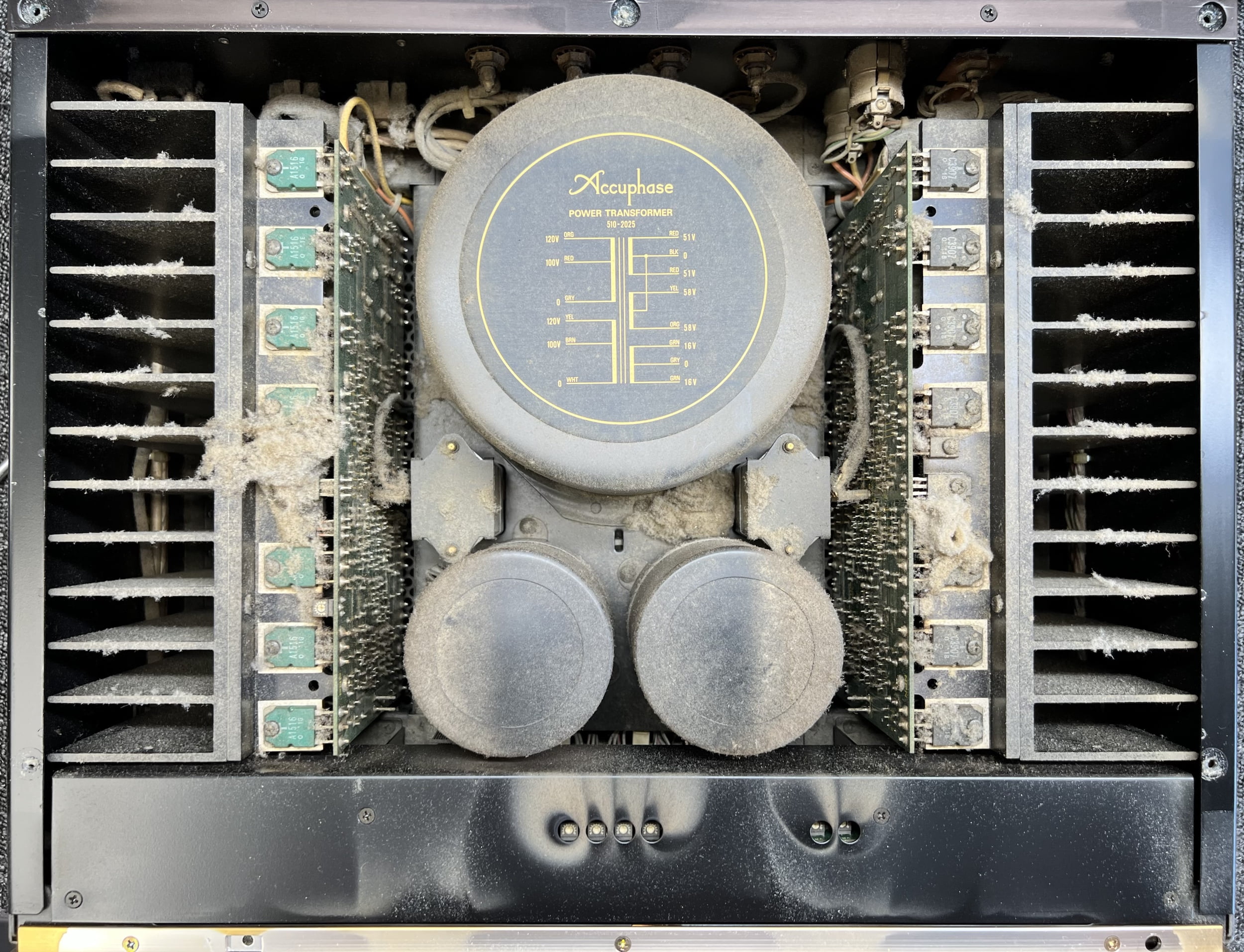
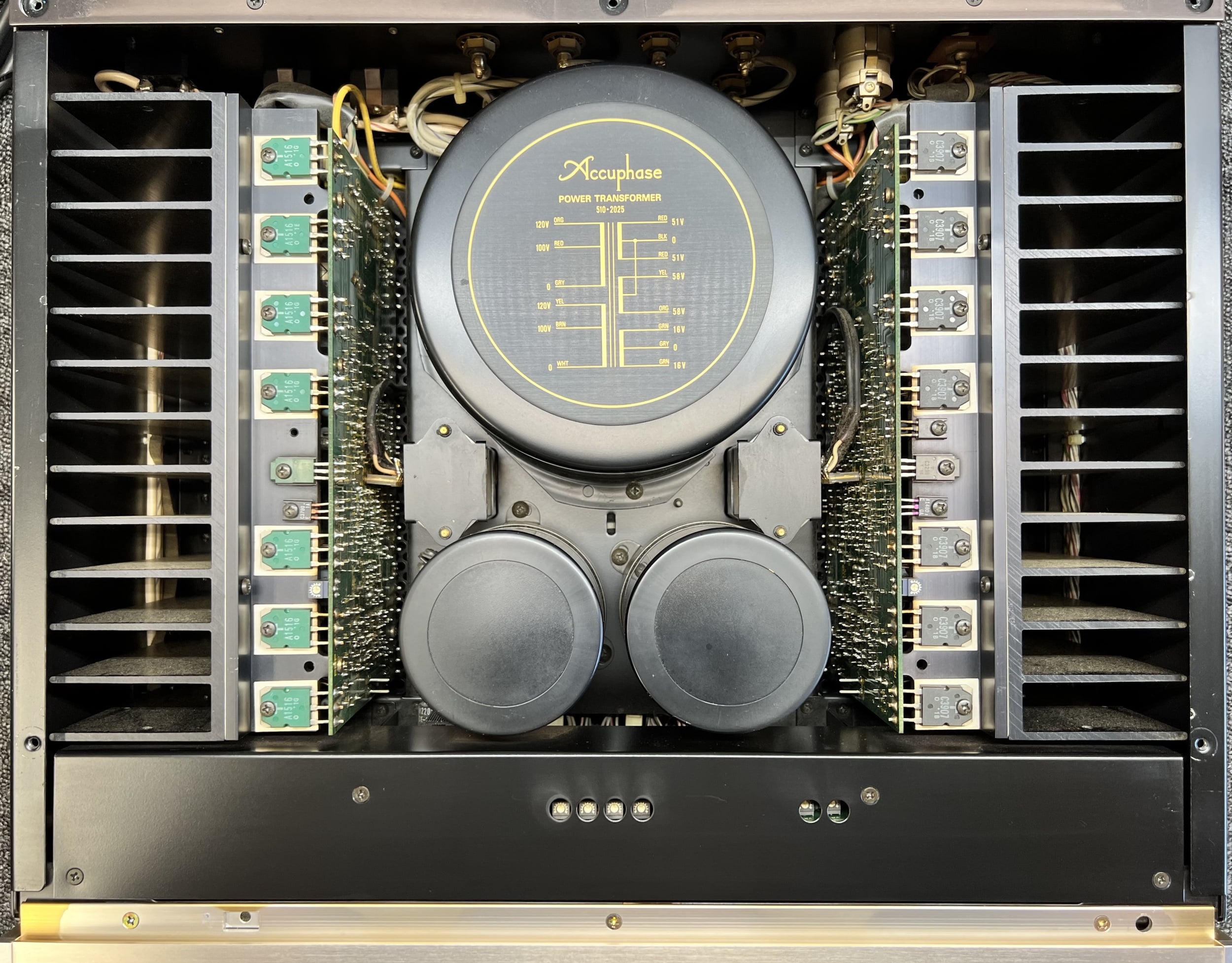
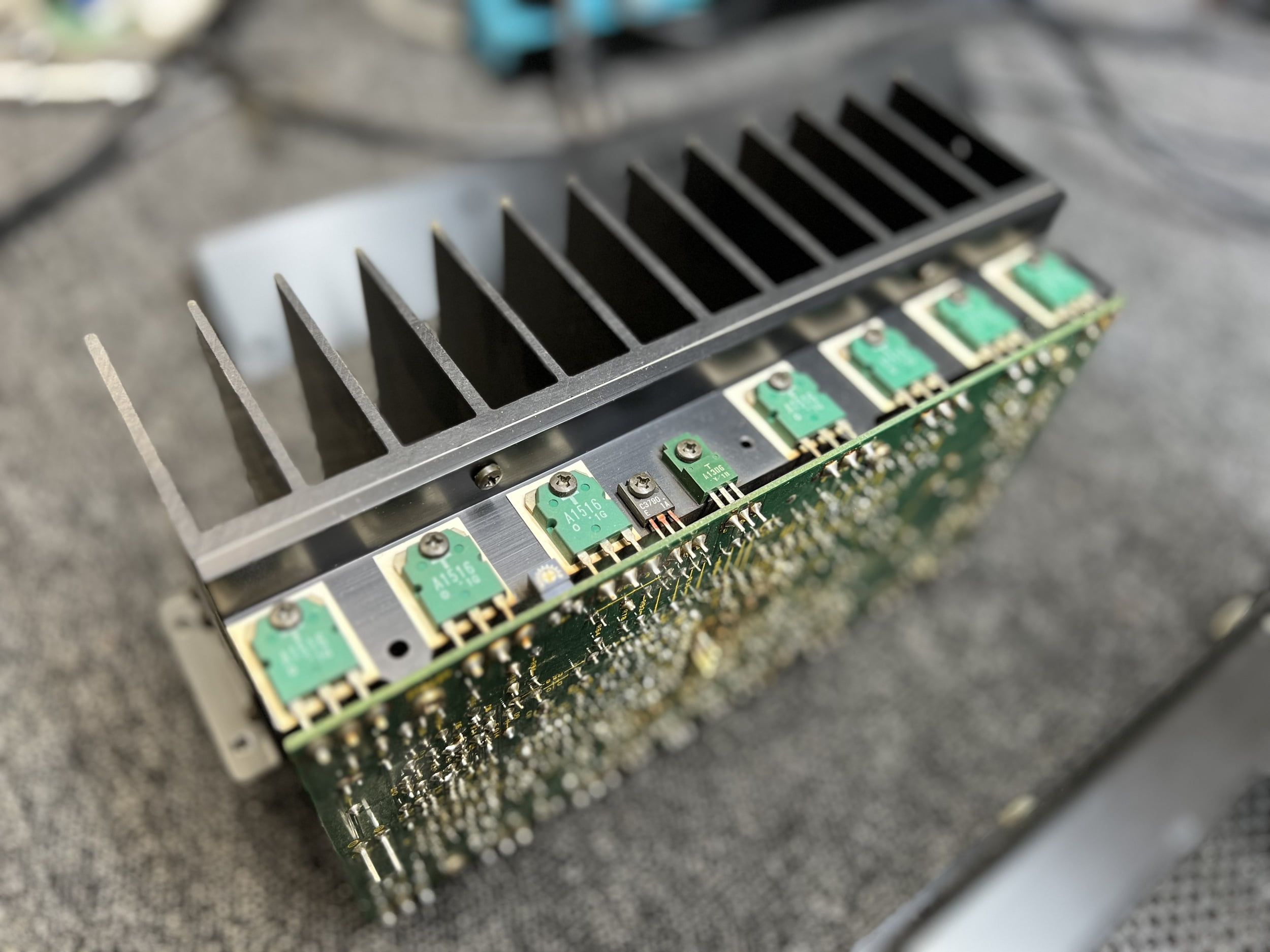
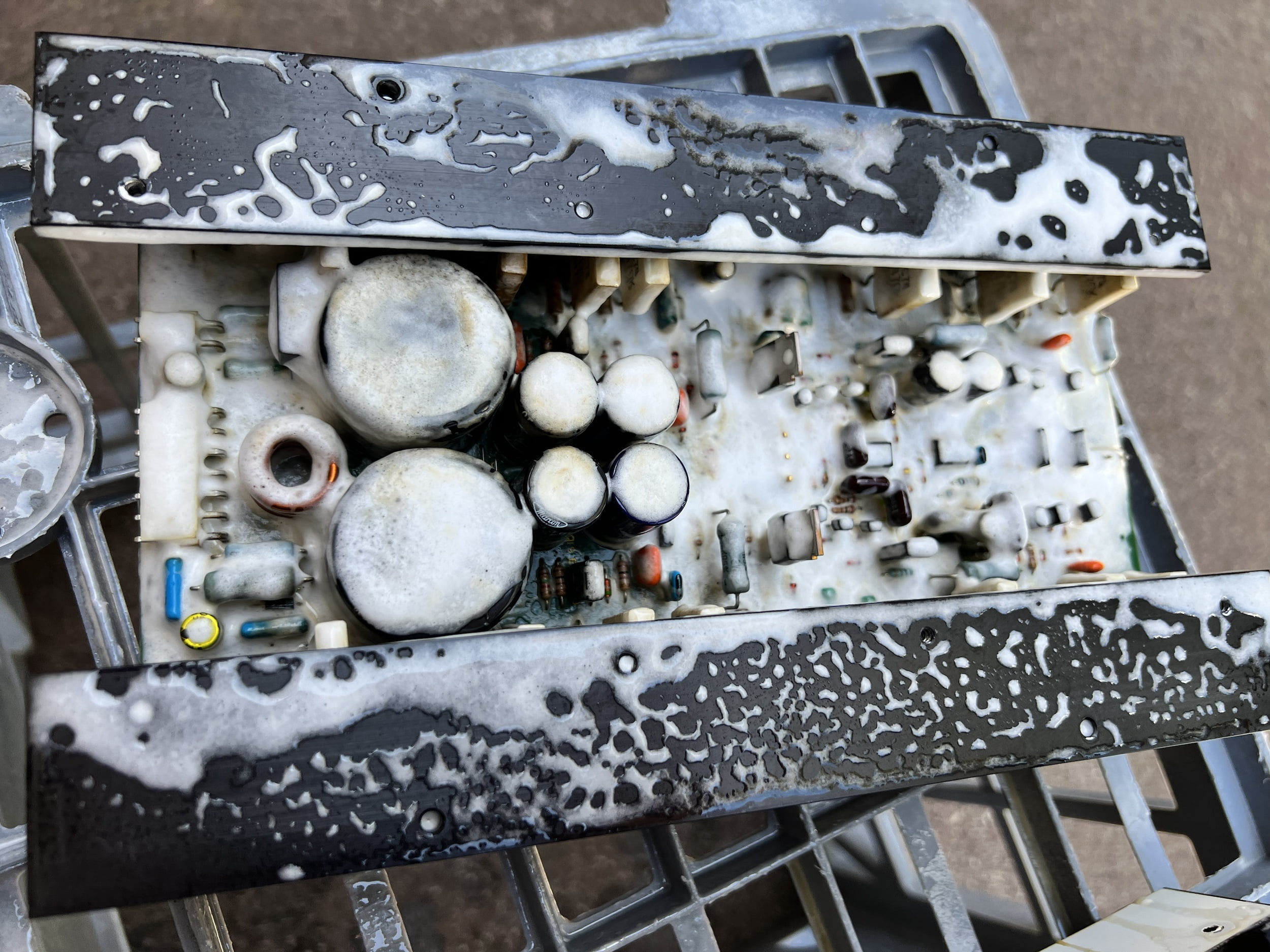
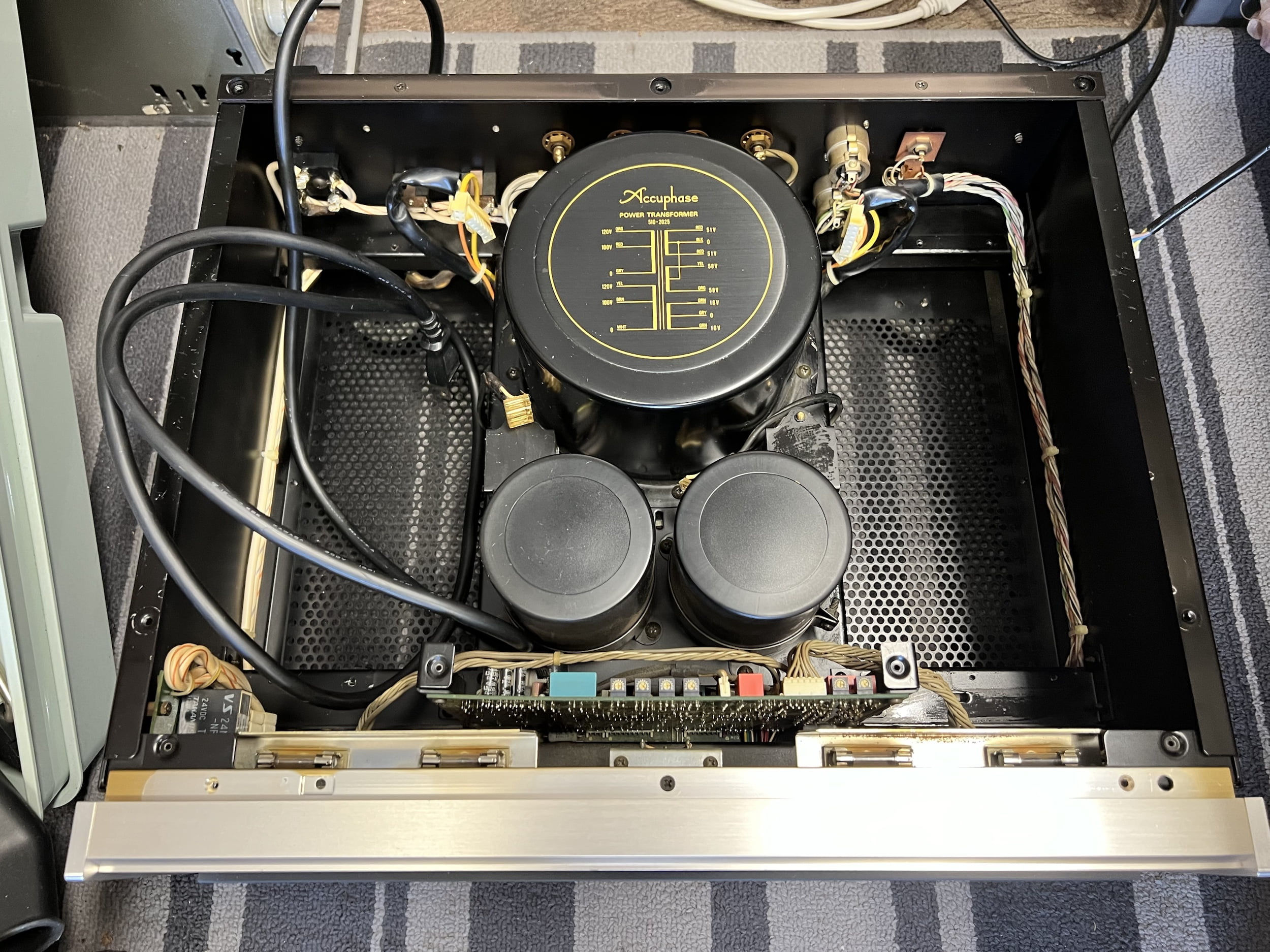
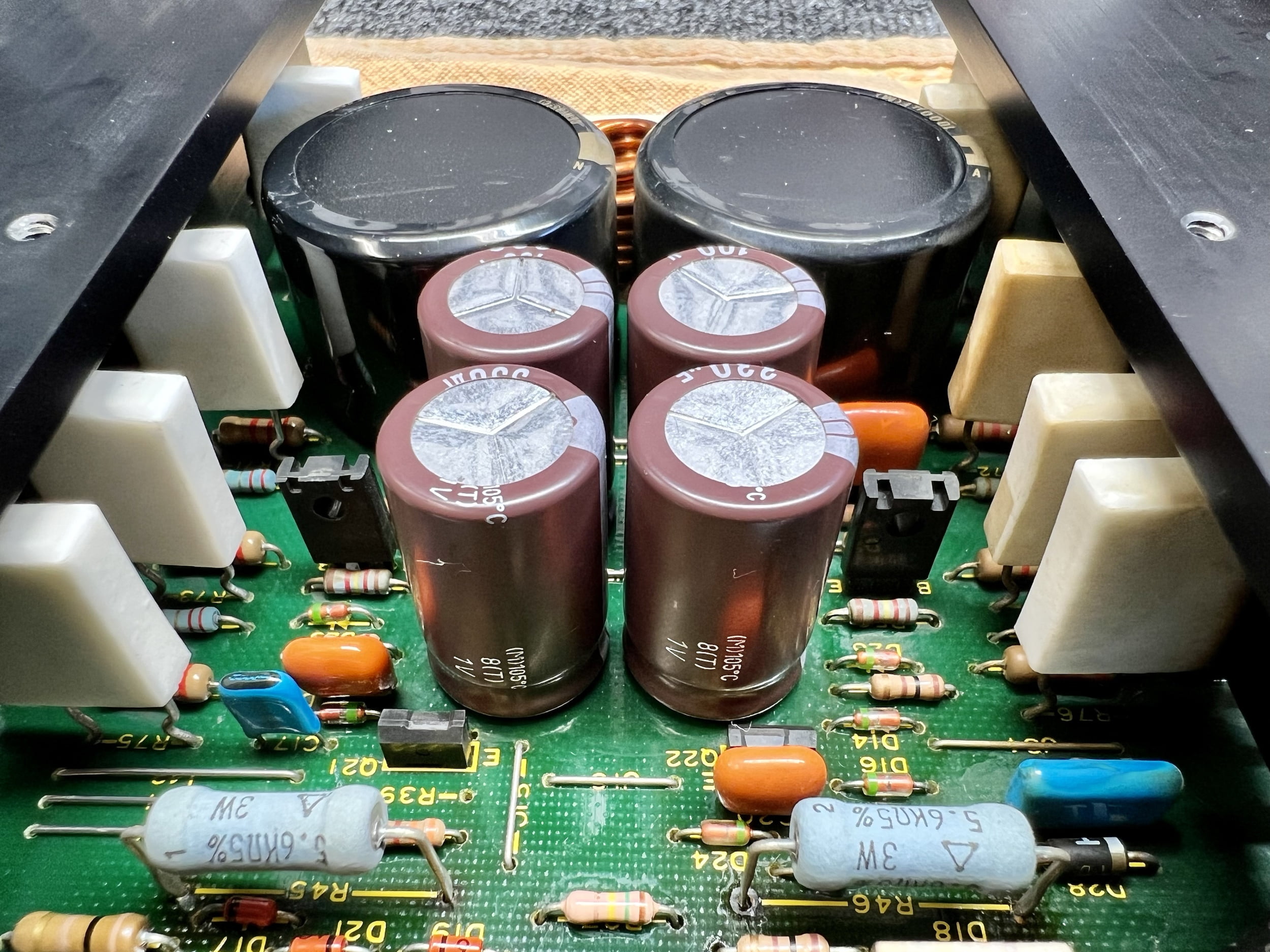
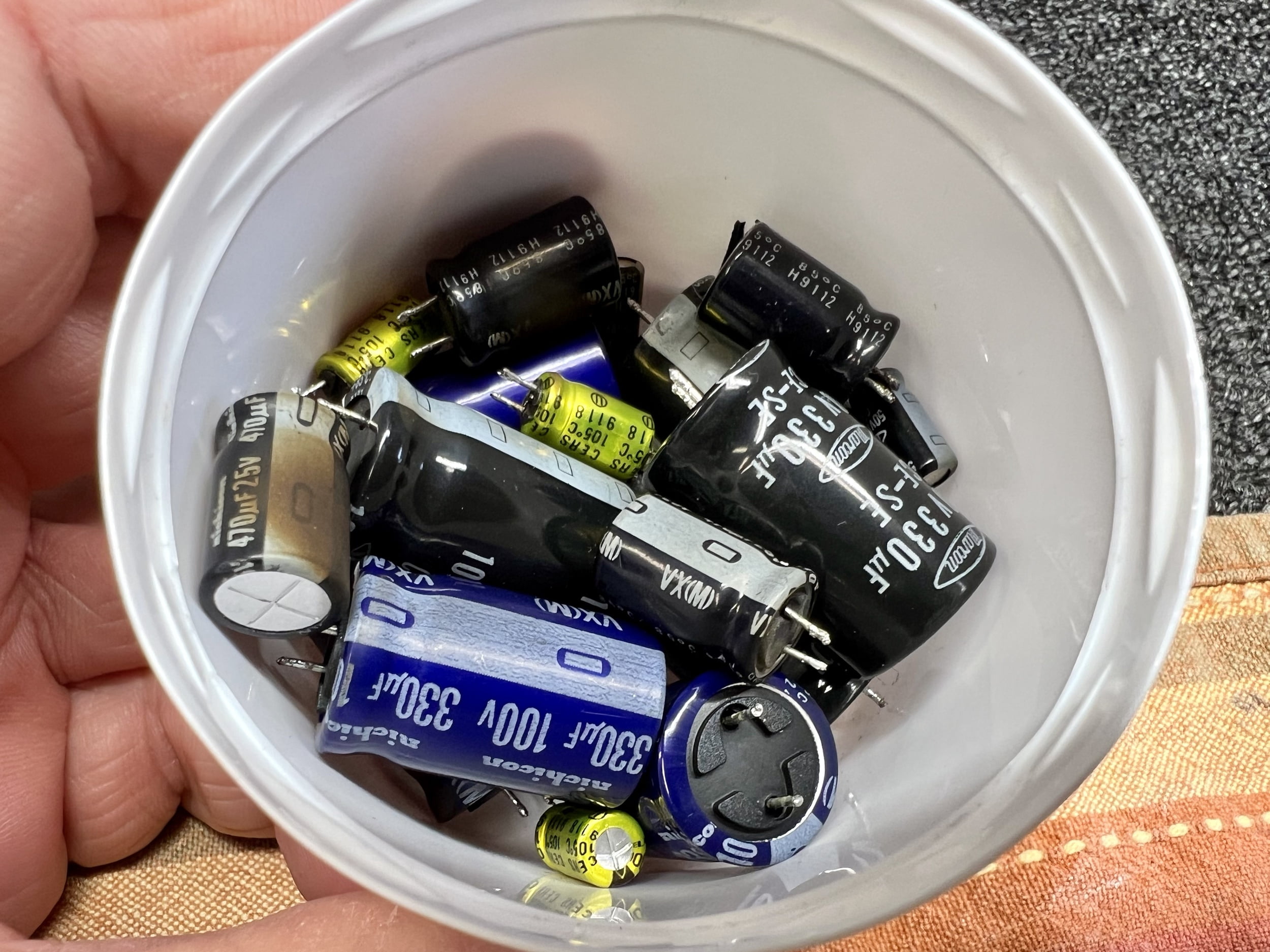

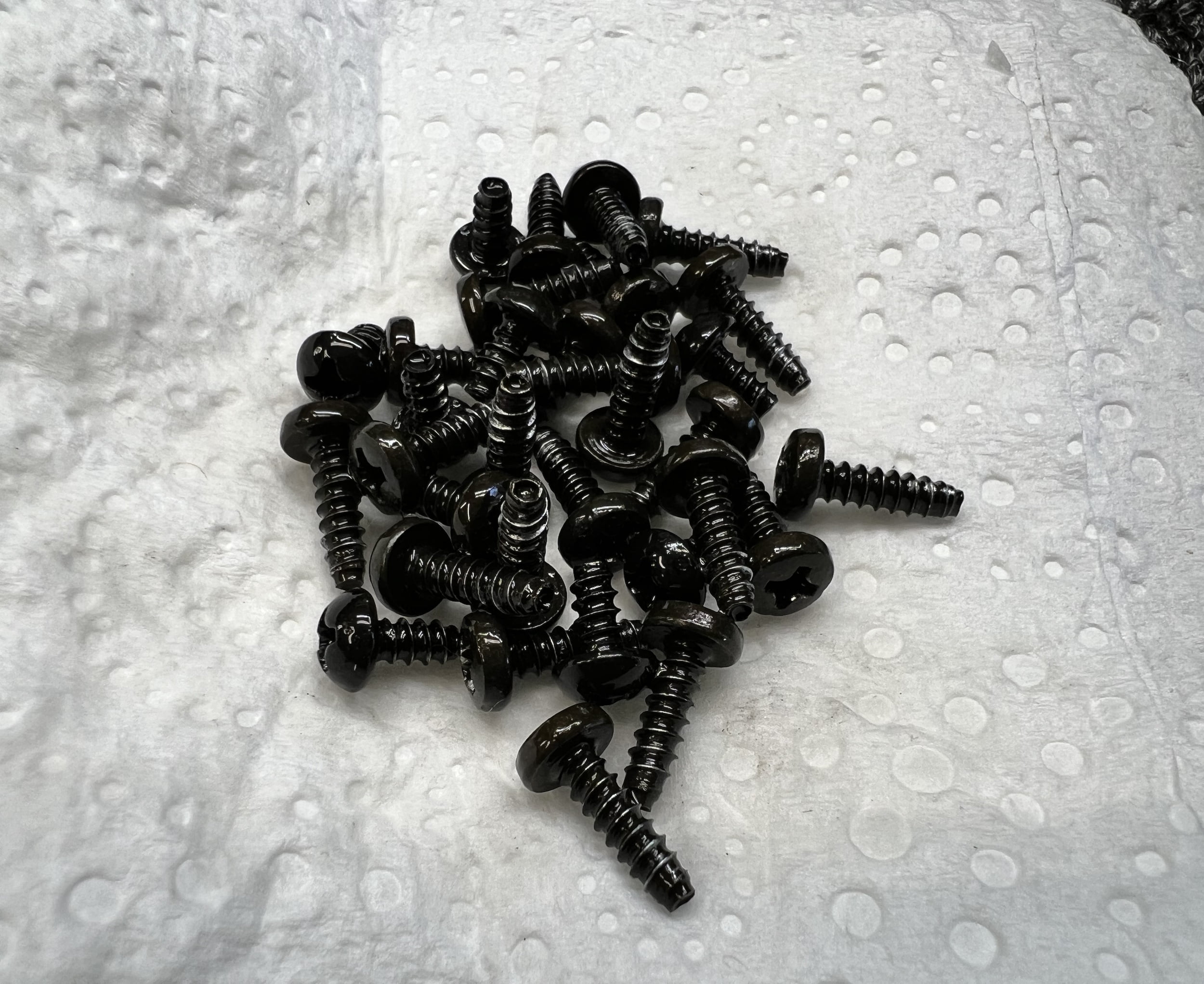

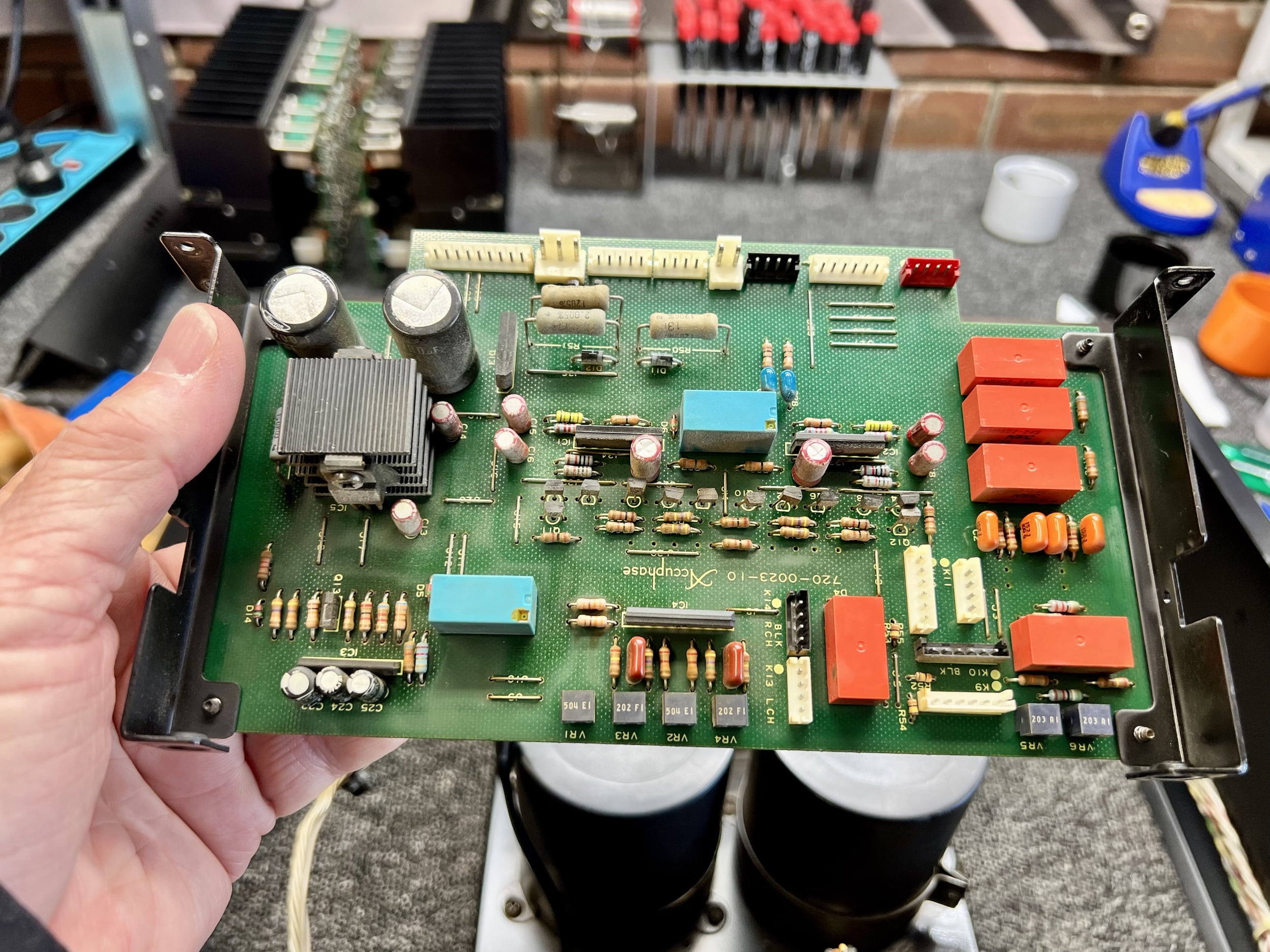


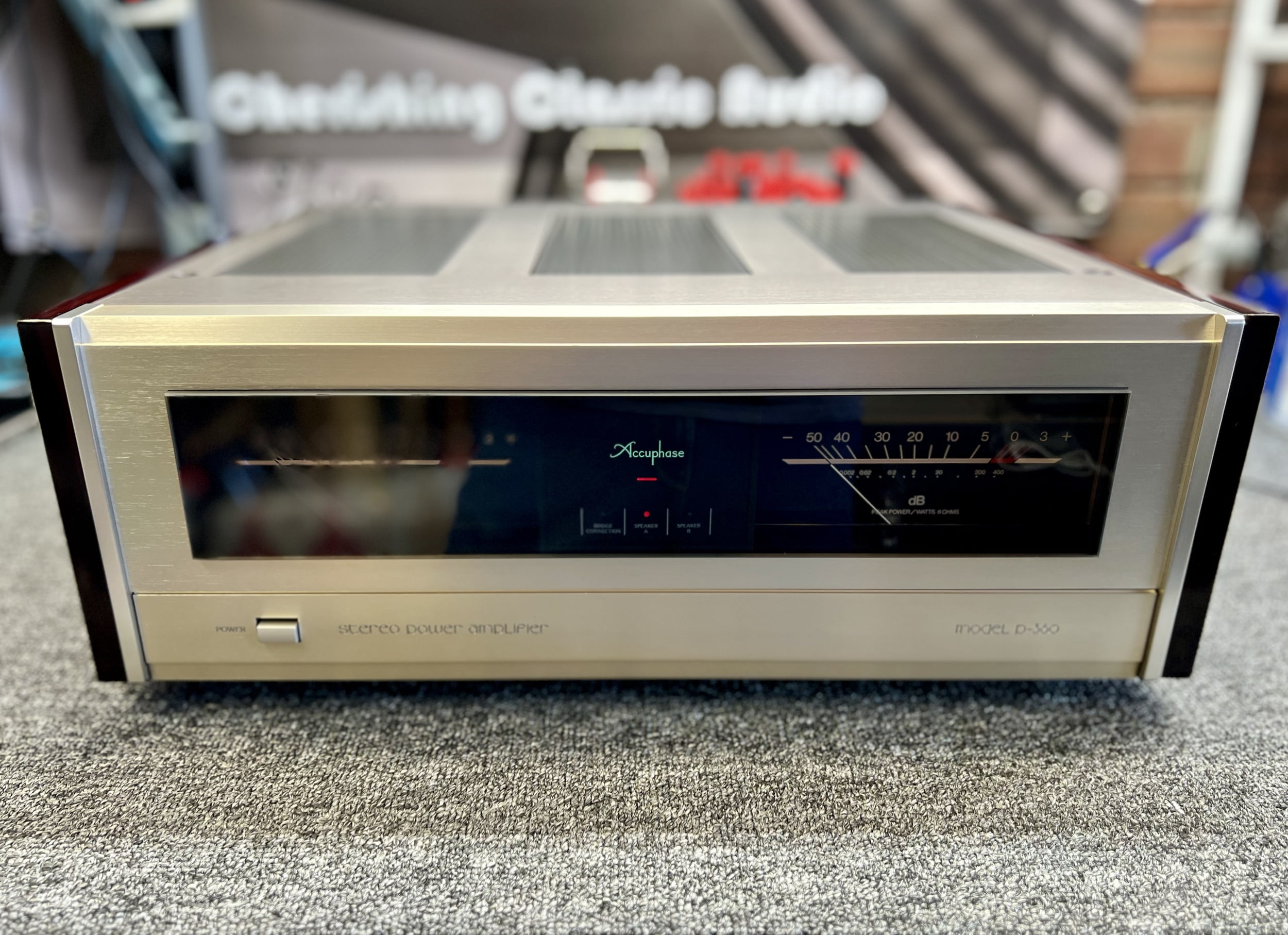
She is For Sale!
This meticulous and quite involved overhaul includes nearly day of labour, plus parts, a little under $1500 worth of work if I were charging for it. If you followed along, you’ll see why jobs like this do usually take the best part of a day. I know that this attention to detail is rare but it’s worth it with equipment of this calibre and where people simply care about those details, and the results.
Owners often neglect to have overhaul work like this done though, because it costs money and finding people who will really care for your equipment can be hard. Someone with a clue has to do the work, no escaping that, and that will never cost a couple of hundred bucks, as less diligent folks might suggest. If someone tells you this RUN! At least it doesn’t need to be done again for perhaps another 20 or 30 years!
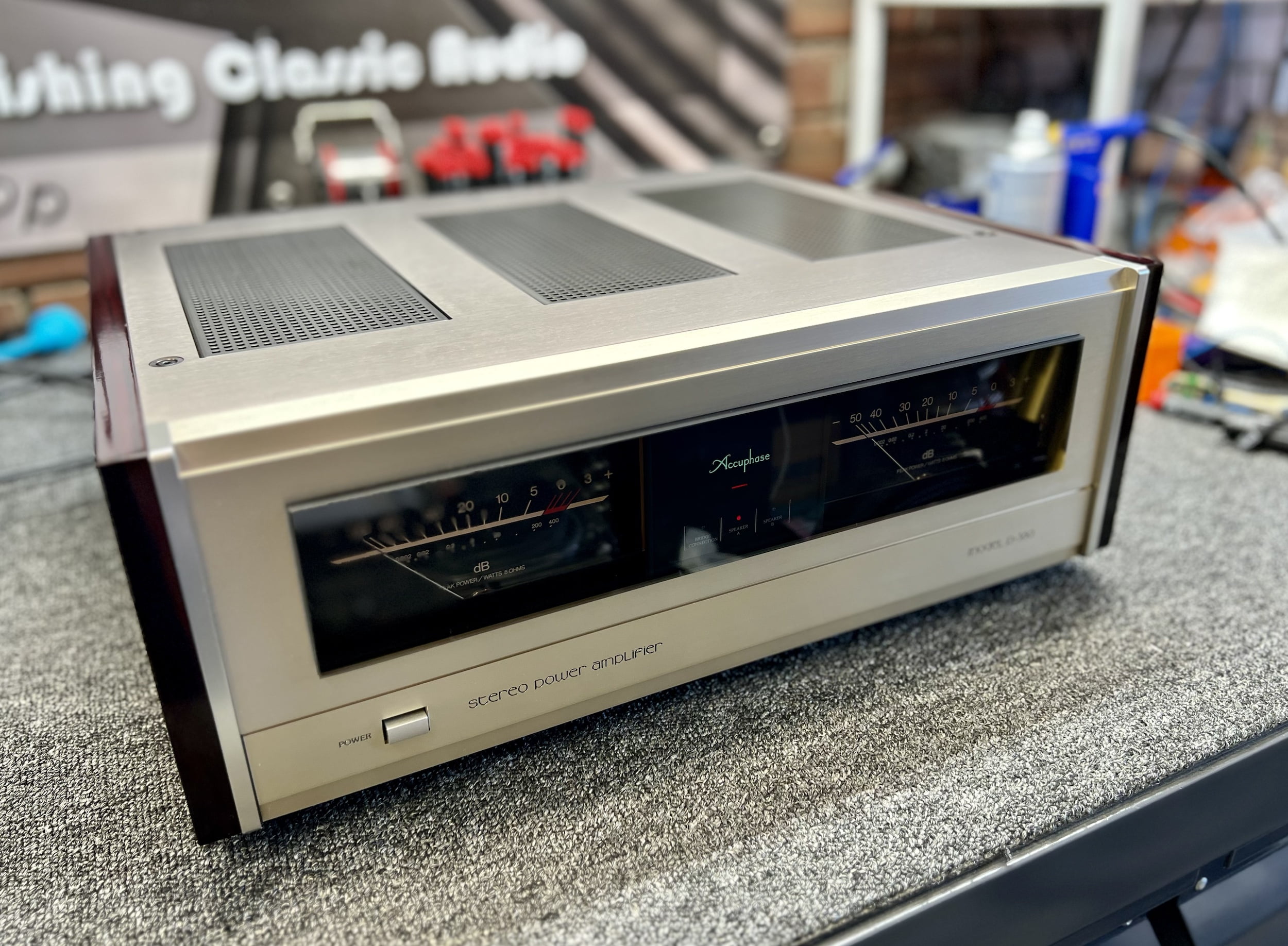
Sonically, the work transformed this P-360, also noted by friends who heard her before and after. She looks and smells a lot cleaner, too. She sounded much sweeter and more open and lively after the overhaul, and the particularly muscular bass this model displays is now even more pronounced. If you love bass texture and detail, you’ll absolutely love this amplifier. Sound staging, resolution and timbre are also fantastic, as you would expect.
A pre/power amplifier combo is the only way to go if you are looking to seriously improve your systems performance and currently use an integrated amplifier. This Accuphase P-360, partnered up with say a C-270 will obliterate any integrated amplifiers I’ve heard, including Accuphase models. There are simply too many compromises in an integrated, mostly related to space and packaging.

As mentioned, I reluctantly need to move her on to make way for my next amplifier, arriving in a couple of days. This end-game piece is another Accuphase model, and details are coming, so stay tuned for that. I will be acquiring more equipment to work on, document and sell as it builds my experience base and makes for great content, so stay tuned for more of this sort of thing.
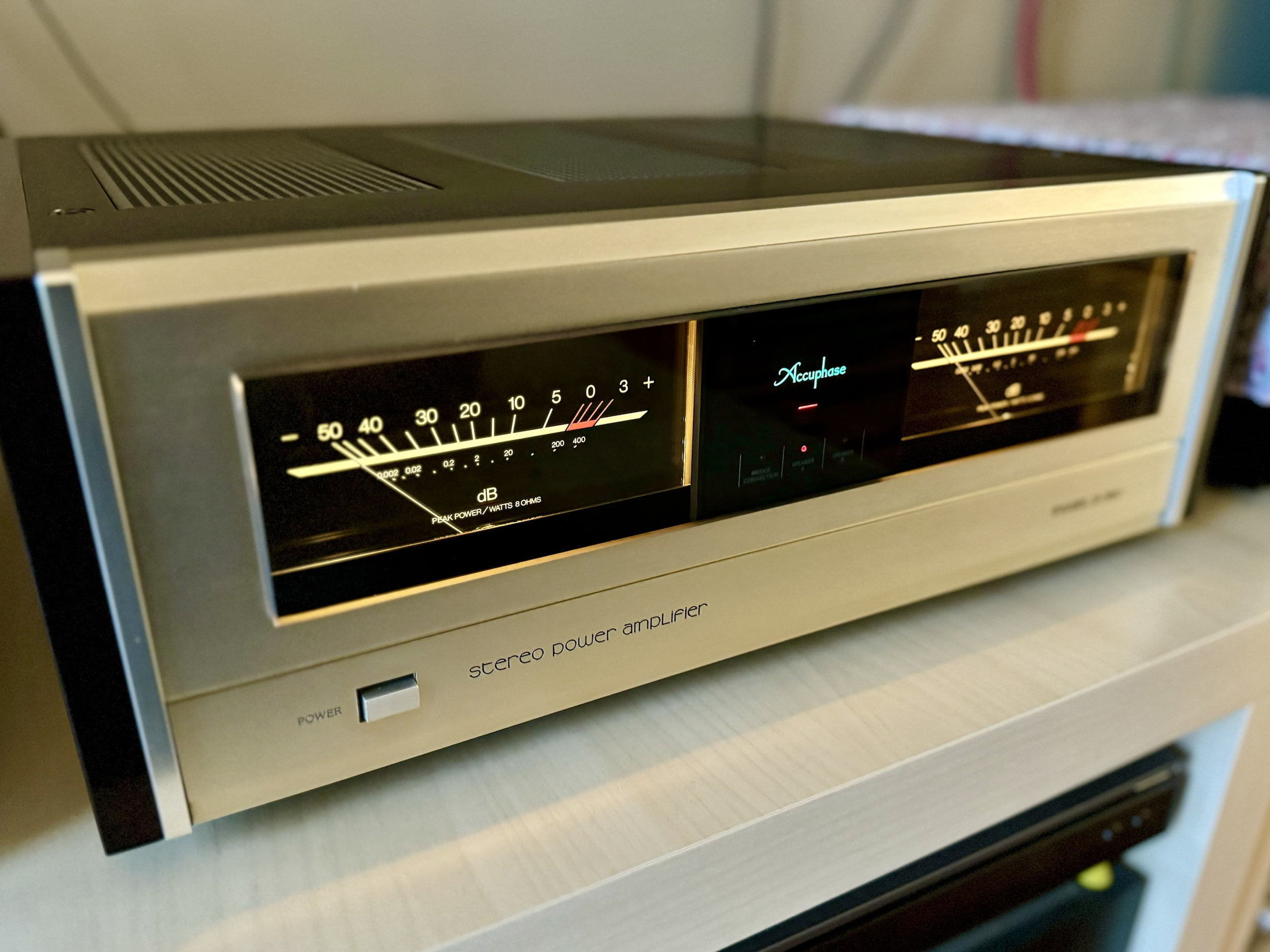
Accuphase P-360s is a premium, compact power amplifier capable of driving any speaker and sells for around $3,000 – $4,000 AUD, when you can find one, and 3,000 – 4000 Euro in Europe where they are more common. These are typically un-overhauled prices. This unit has been converted to 240V operation and comprehensively overhauled and serviced only a few months ago.
I’m offering this Accuphase P-360 for $4,250. That price includes a 3-month warranty, try getting that on another P-360. If you find a better or fairer deal, please let me know. If you’d like it, I’d love to sell it to you, preferably to someone who is already a customer so we can keep her in the family!
As often happens with the equipment I sell, I’ve had some interest prior to listing her, so if you’d like her, let me know as soon as you can. I’ll respect the order in which I receive enquiries, so don’t stress. There is never any pressure to purchase and I always look after people in terms of the order in which they contact me. Local sale preferred.
UPDATE: SOLD, for considerably more than the asking price. Thank you to her generous new owner and long-term customer!
Stunning Sony CDP-X7ESD CD Player
Well friends, the time has come again for me to cull some more of my favourite pieces from my collection, and this time it’s my reference CD player for the last few years, my much-loved Sony CDP-X7ESD.
UPDATE: Sold, within an hour of listing, thanks George!
Many of you will know how much I love these players that were the top of the line for Sony back in 1989 when they still made serious equipment like this. I’ve written about them here for example and worked on many over the years, including the beauty you see here, which I recently serviced and runs perfectly.
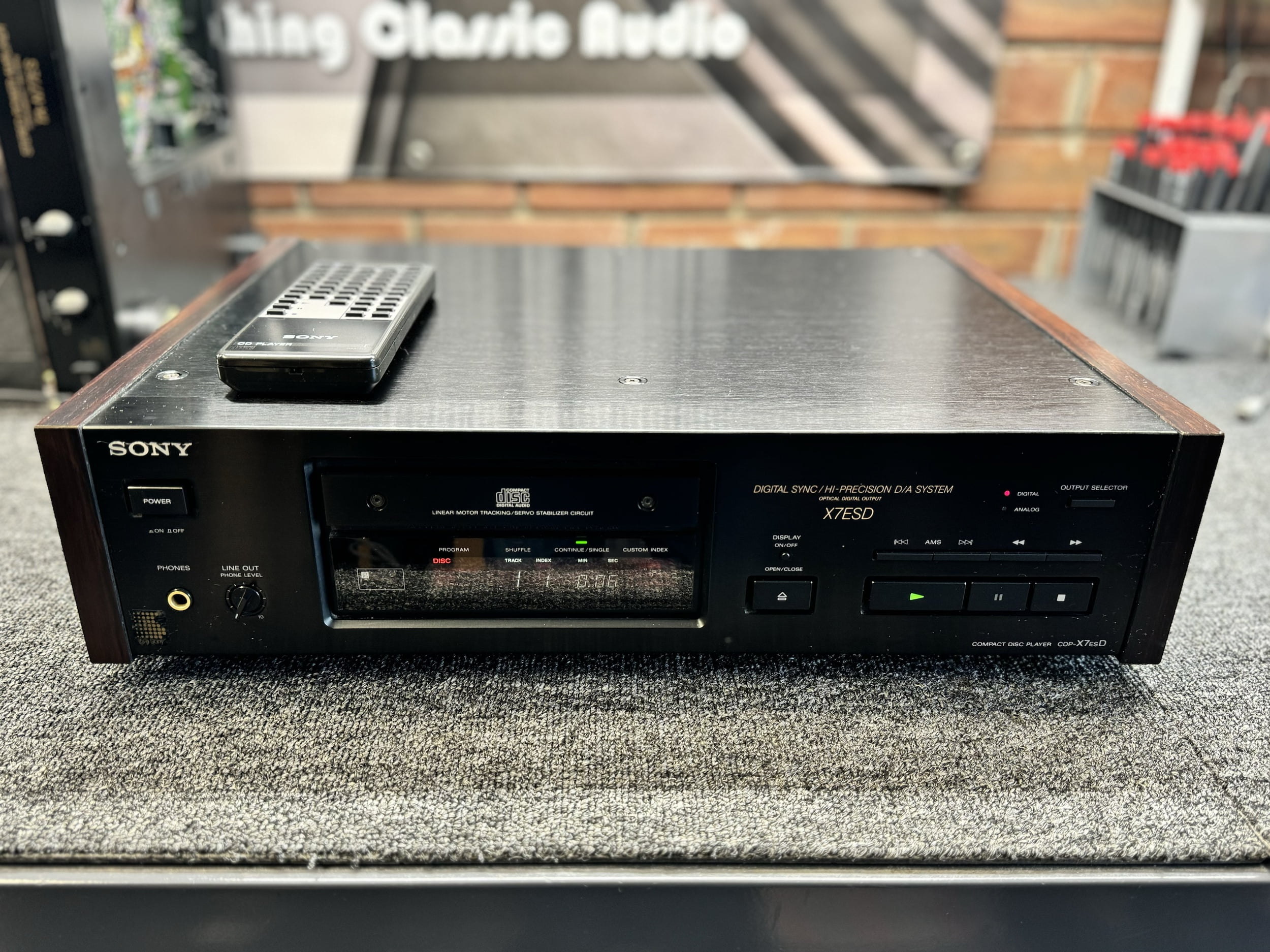
Now, if you’re wondering why I’m selling pieces like this wonderful CD player, that’s easy to answer. This is why:
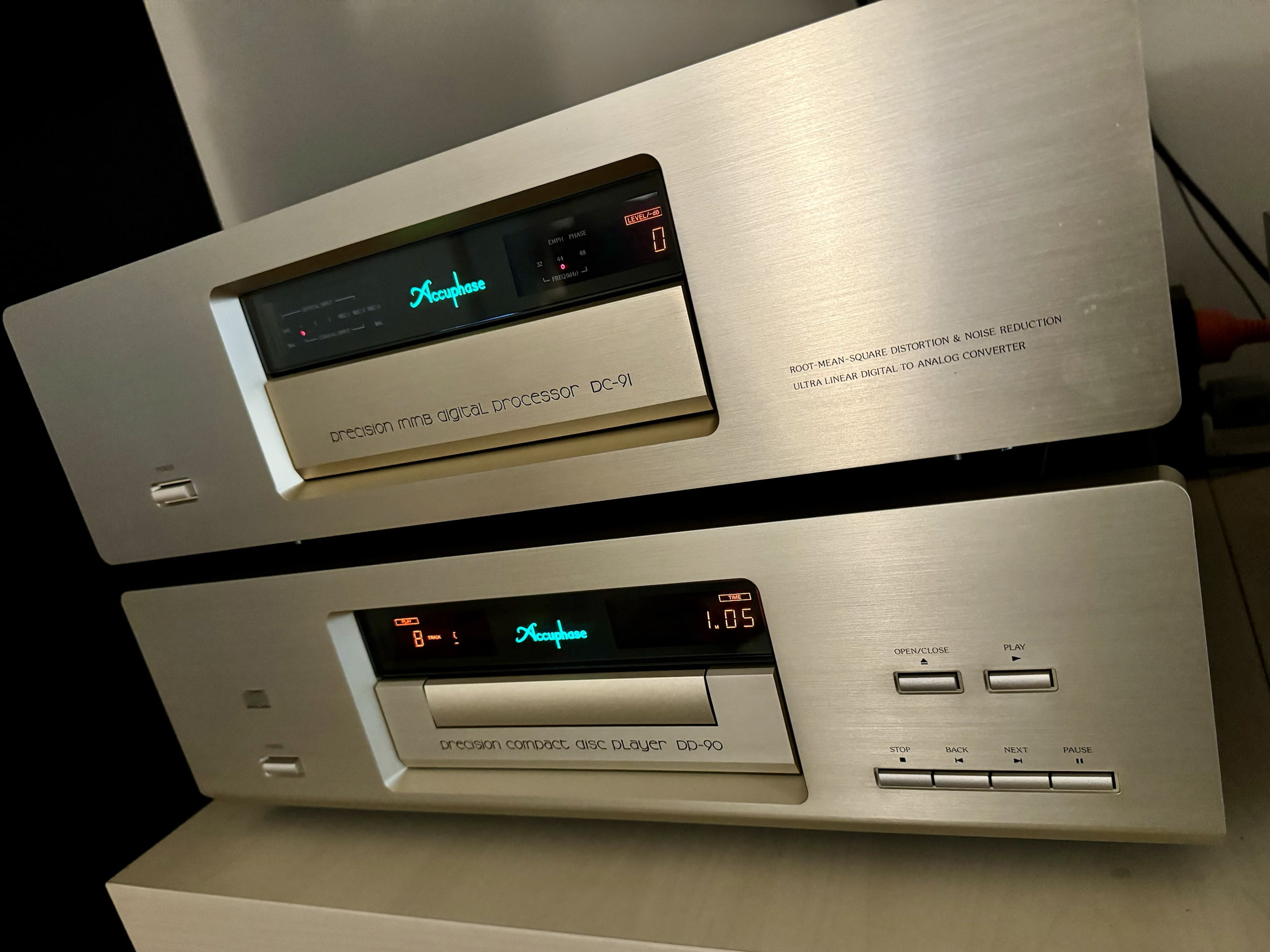
Sony CDP-X7ESD Specifications
Courtesy of HiFi Engine
- Disc format: CD
- Digital converter: PCM58P-S
- CD Mechanism: KSS-190A
- Frequency response: 2Hz to 20kHz
- Dynamic range: 100dB
- Signal to Noise Ratio: 115dB
- Channel separation: 110dB
- Total harmonic distortion: 0.0015%
- Line output: 2V
- Digital connections: coaxial, optical
- Dimensions: 470 x 125 x 375mm
- Weight: 17kg
- Accessories: remote control
- Year: 1989
The Sony CDP-X7ESD uses the legendary and incredibly long lived Sony KSS-190A almost all metal mech and glass optic laser, same as used in the sublime Accuphase DP-81L for example:
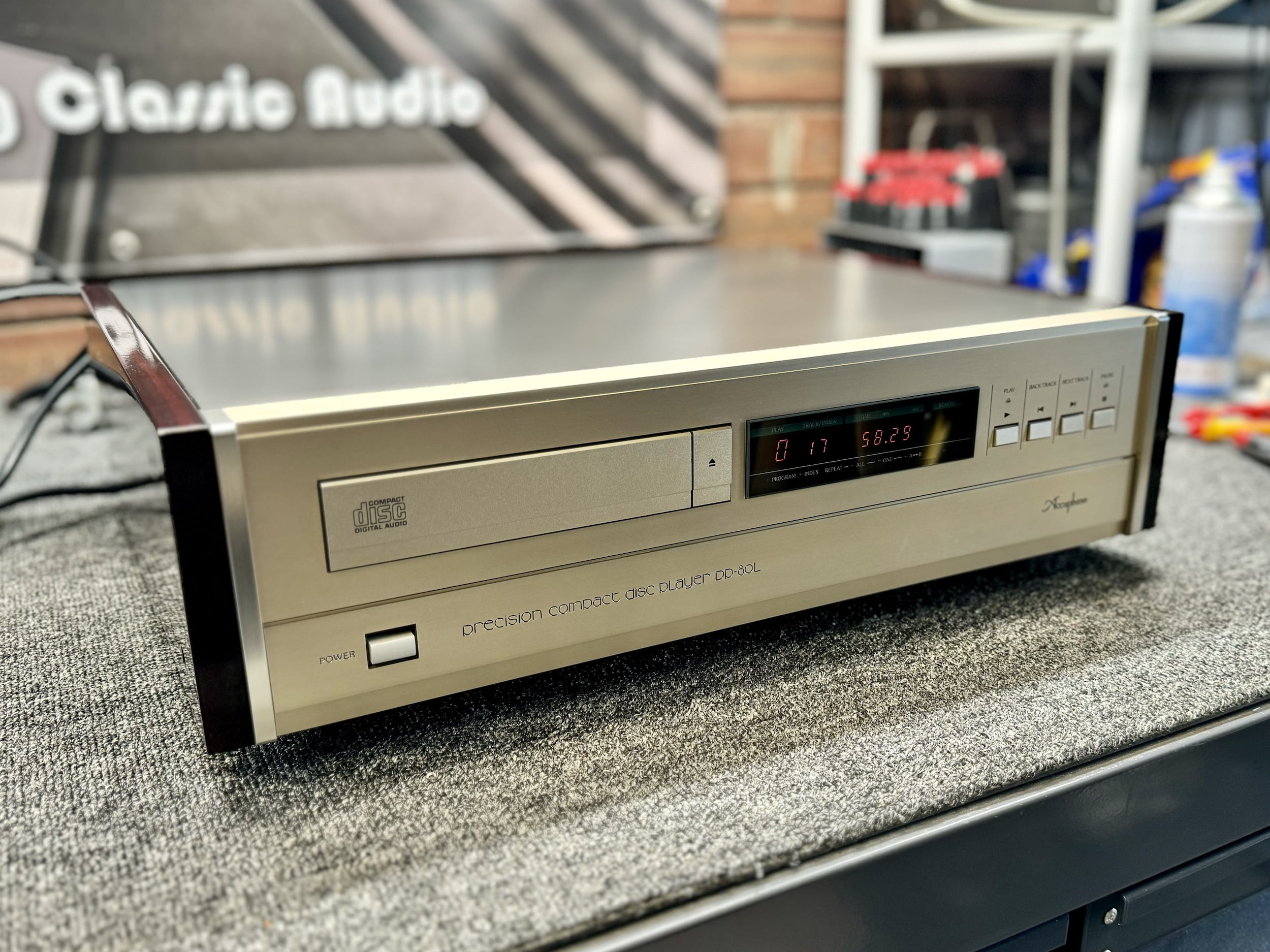
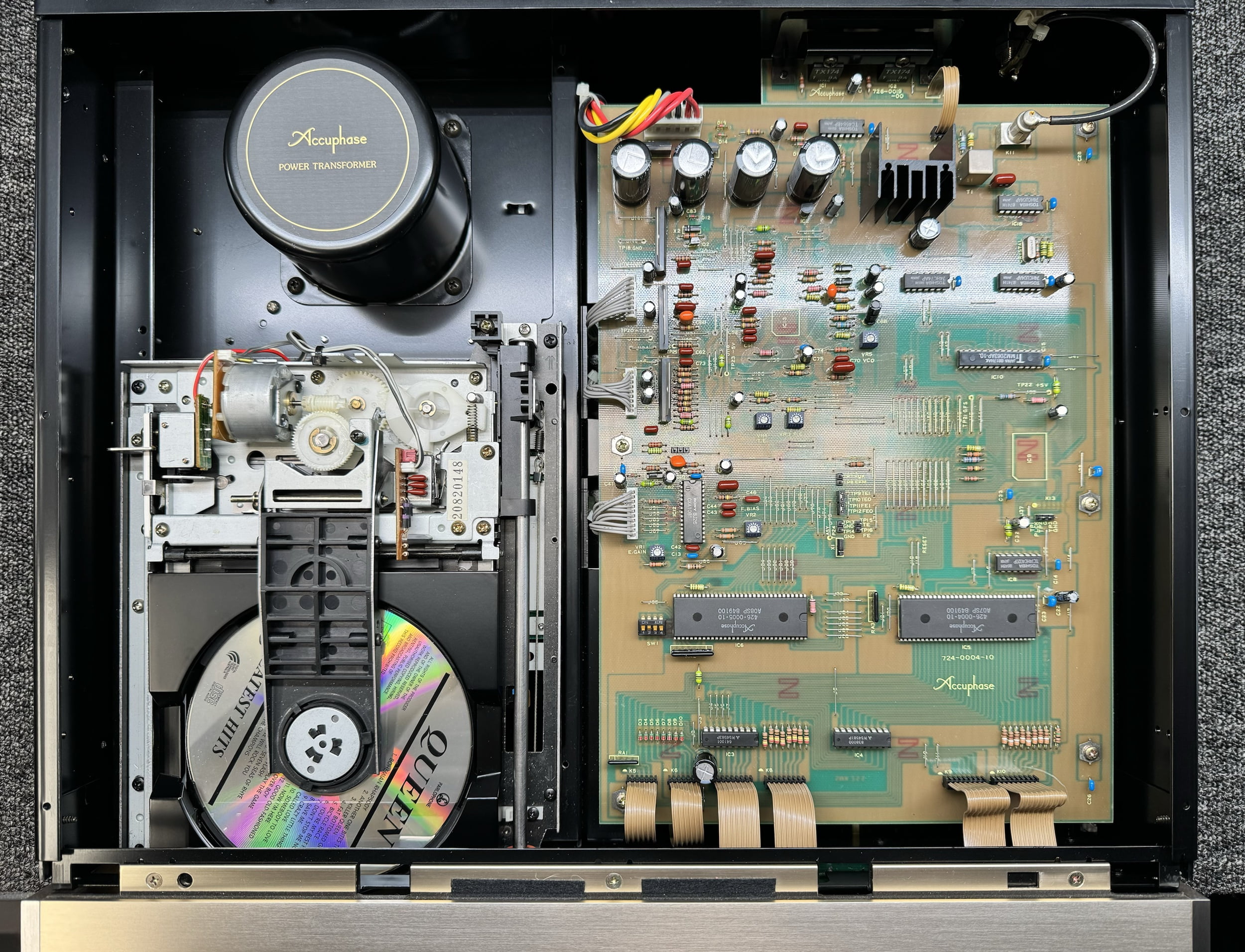
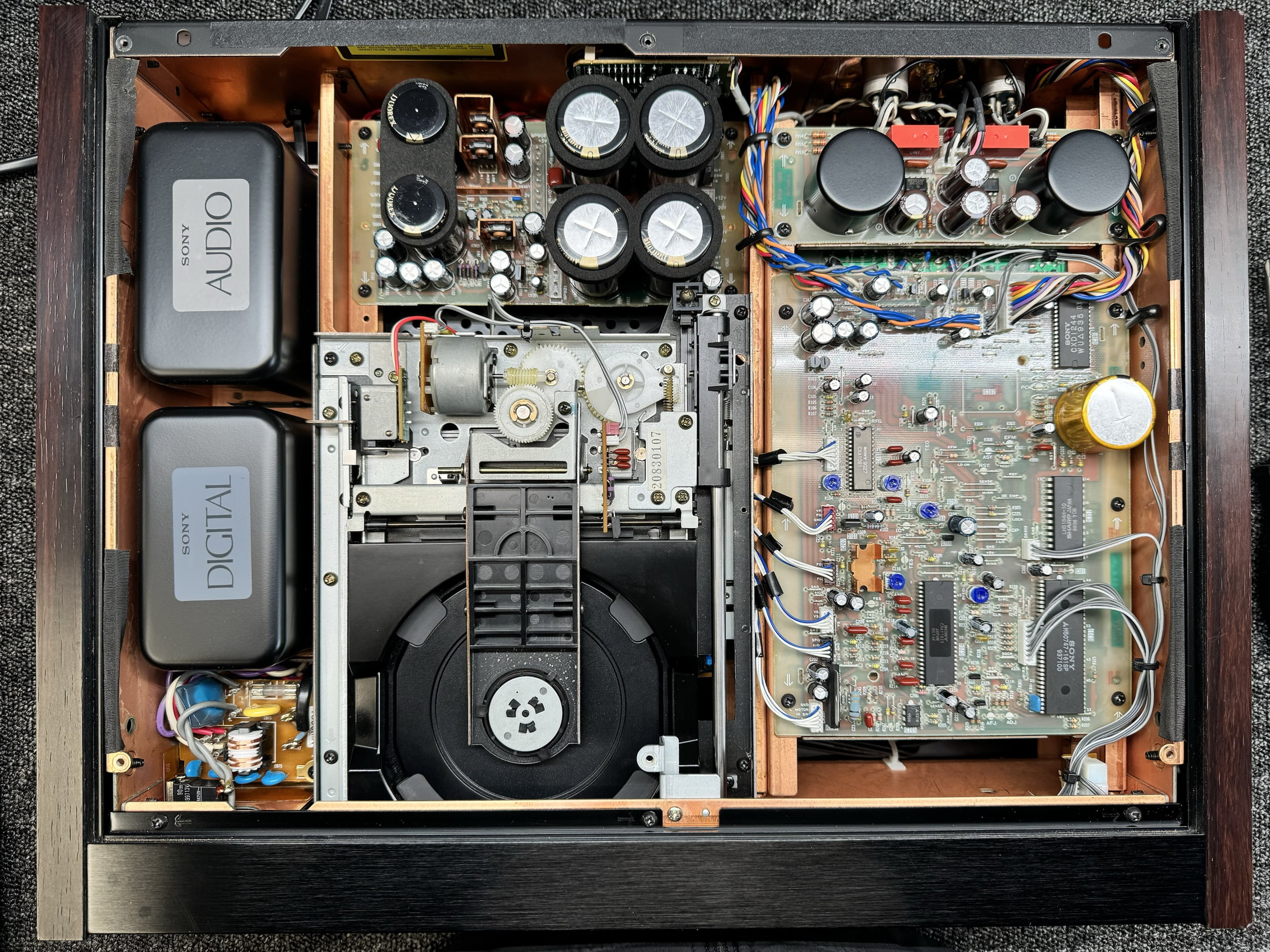
My personal Sony CDP-X7ESD has been very well cared for as you’d expect of anything I own. I’ve serviced this player, it has new drive belts, everything is clean, serviced etc.
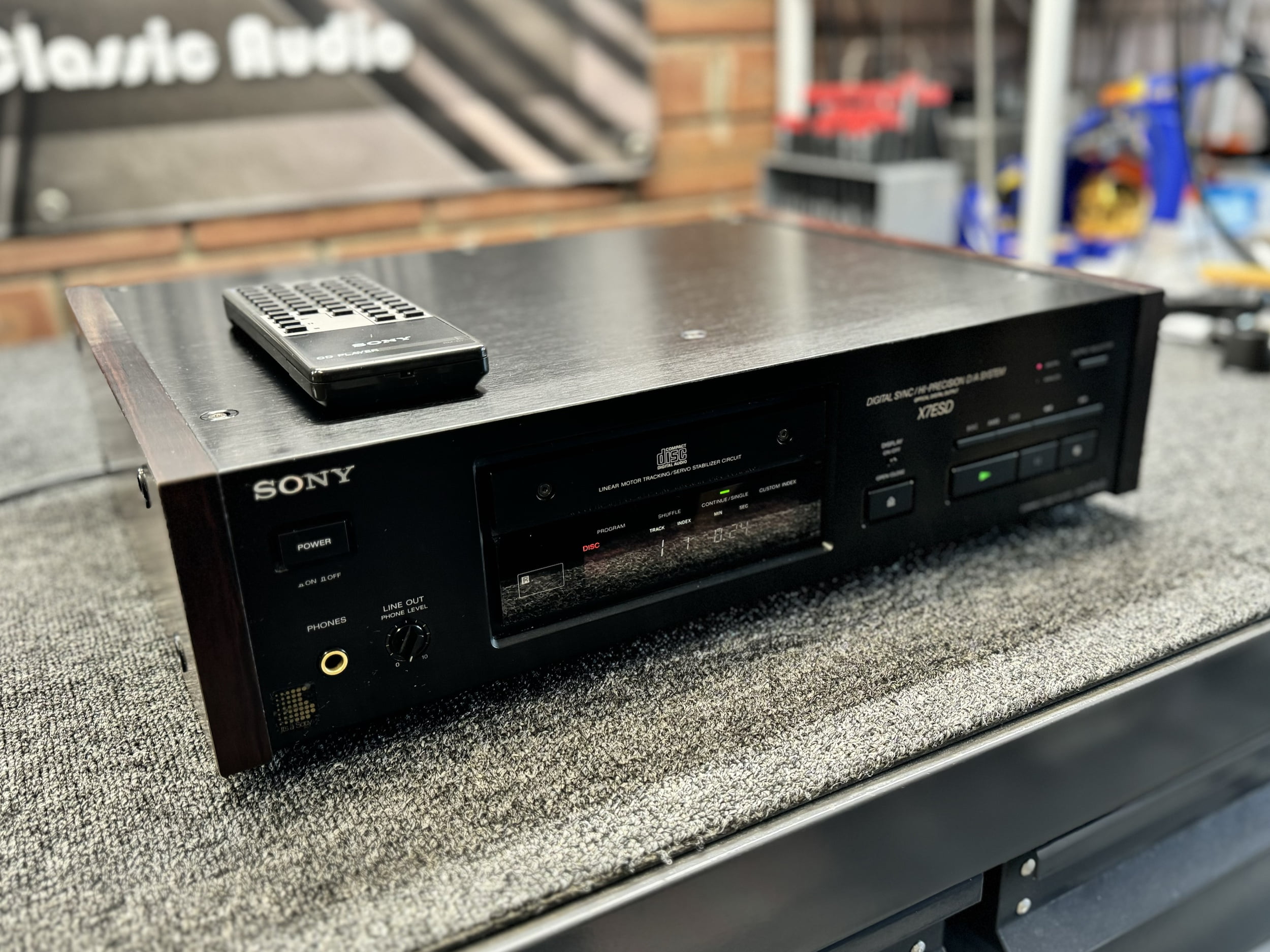
This player is in almost perfect condition, with no dings or damage to the wooden side panels. She has a few light scratches on the top surface, to be expected at this age 35 years old. In most lighting conditions these cannot be seen.

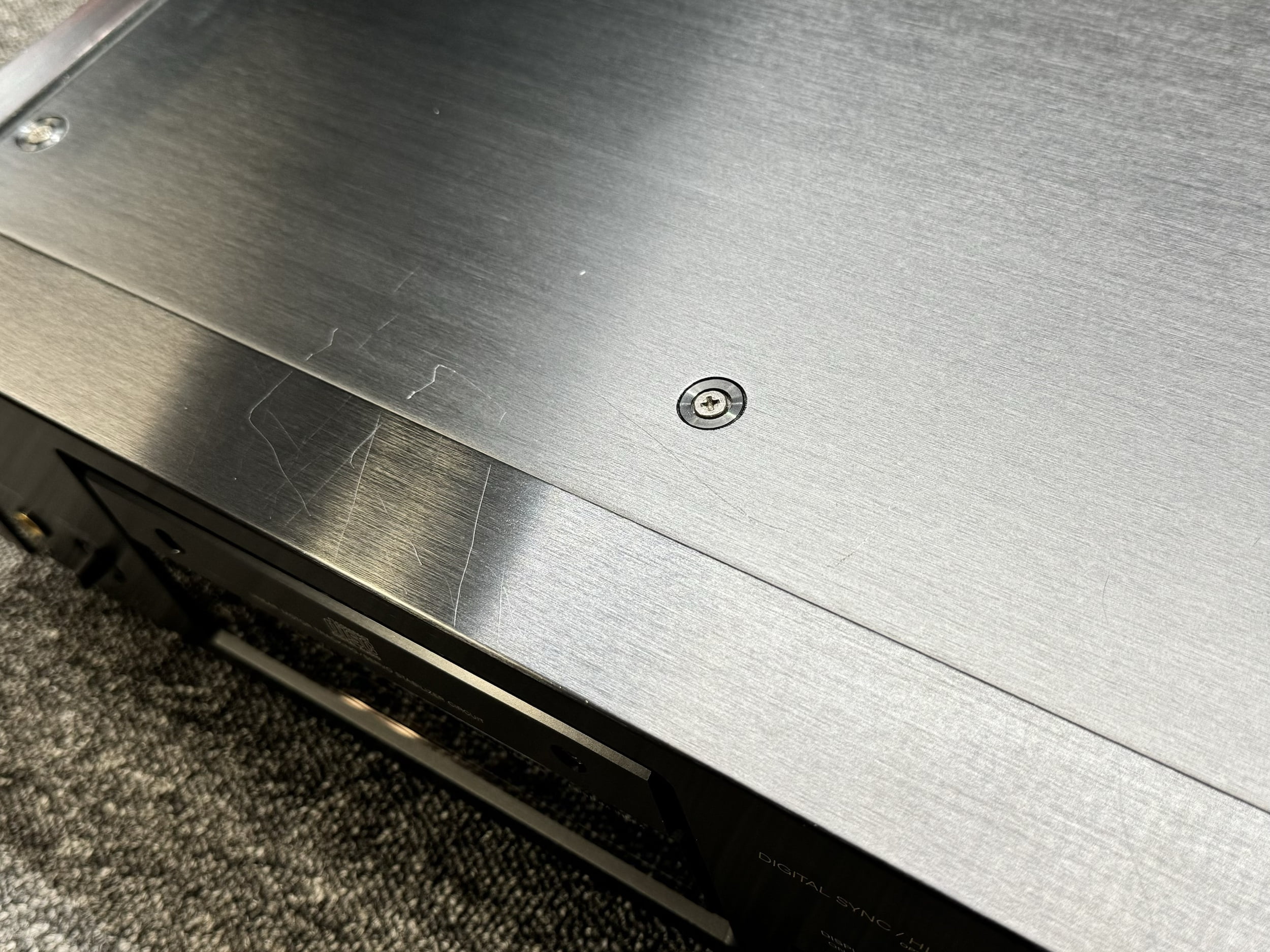
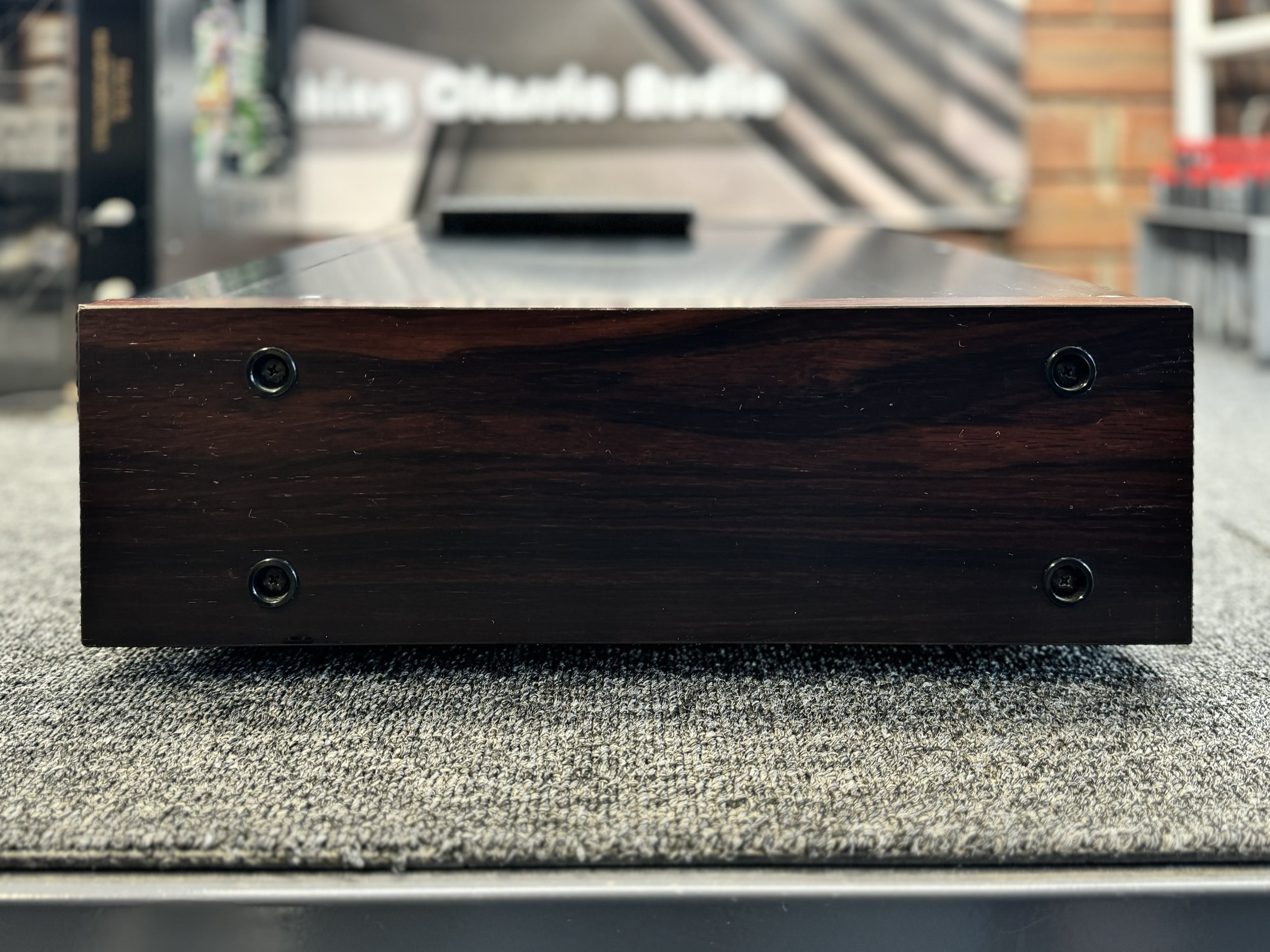
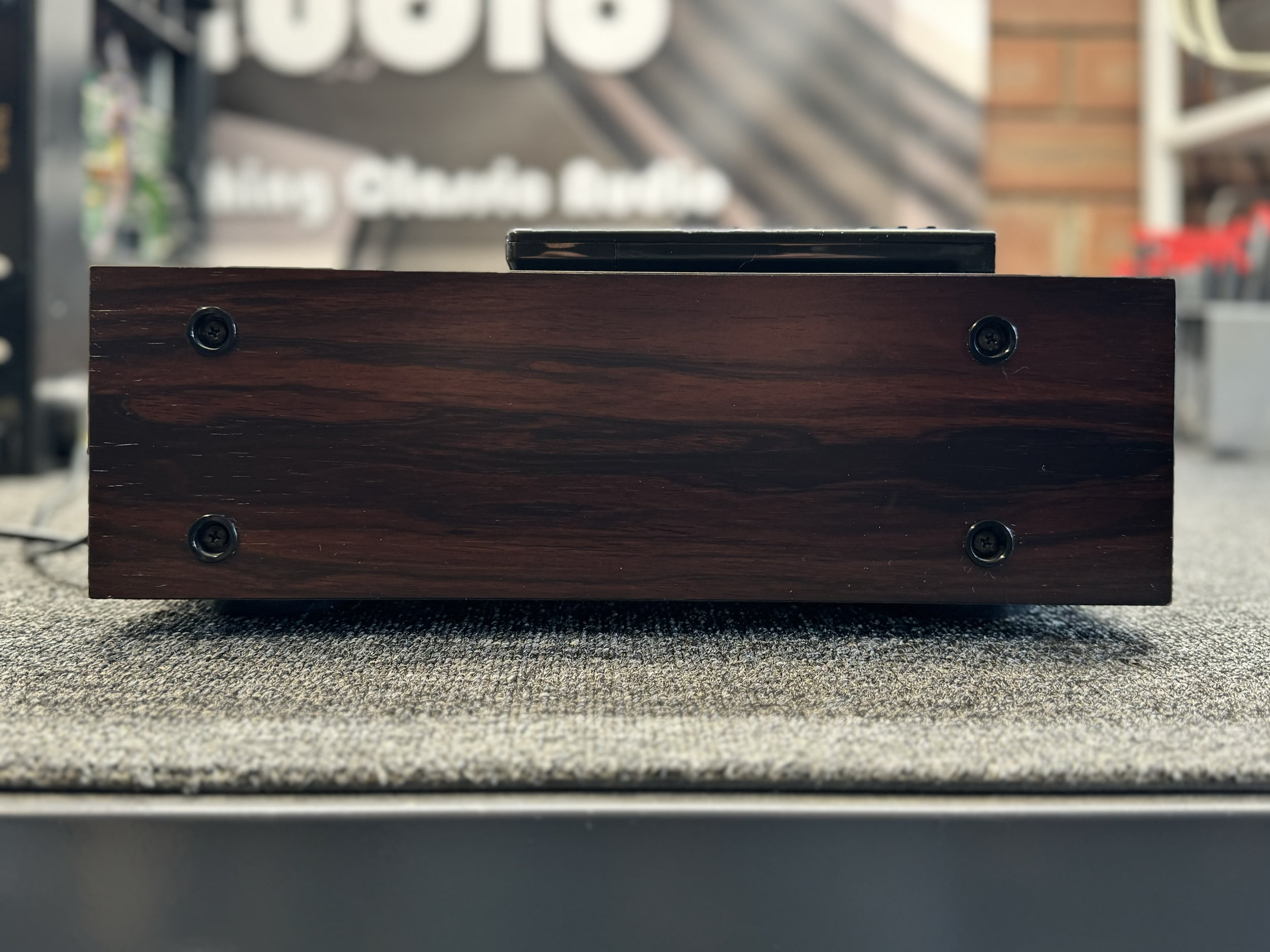
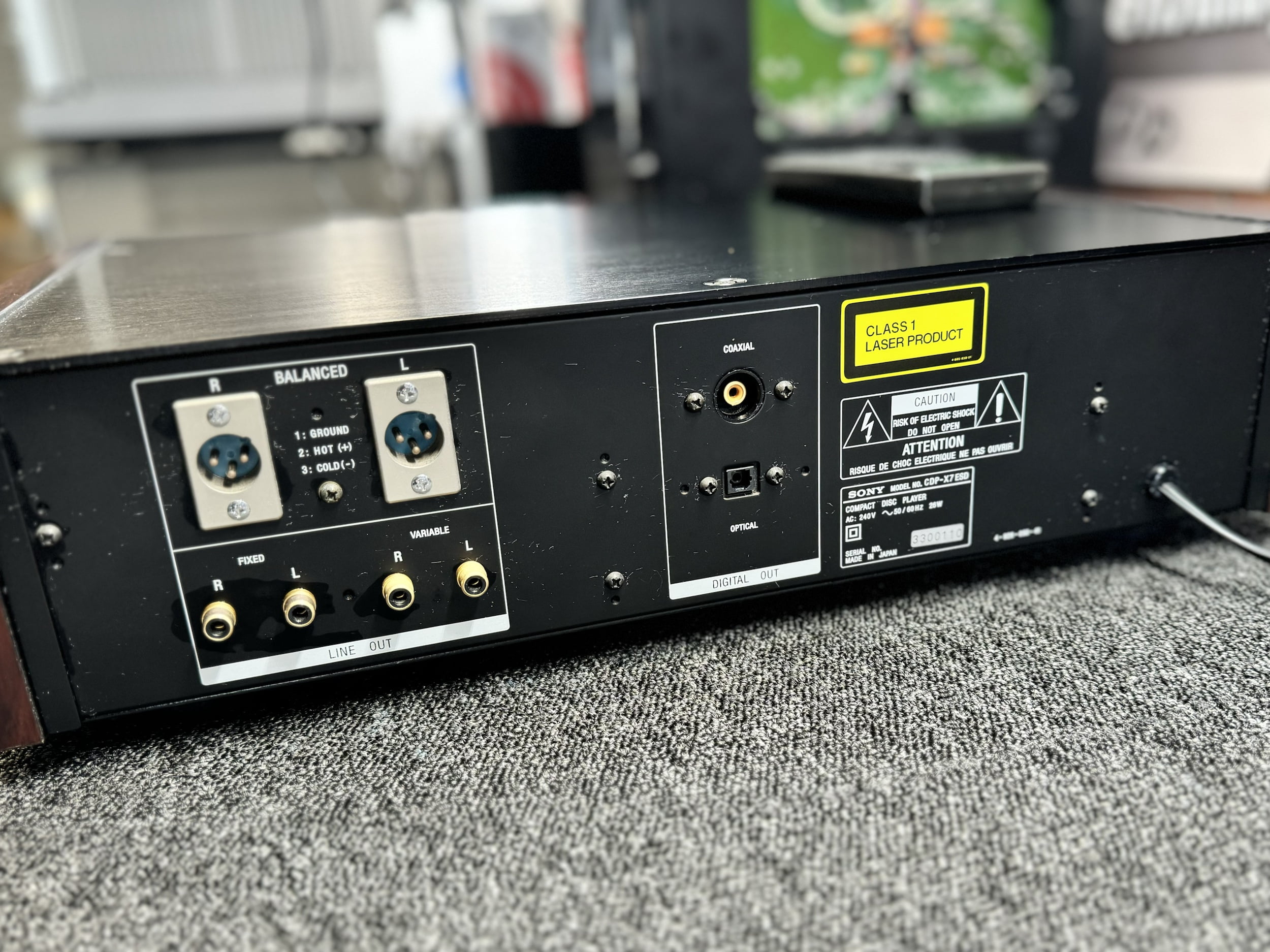
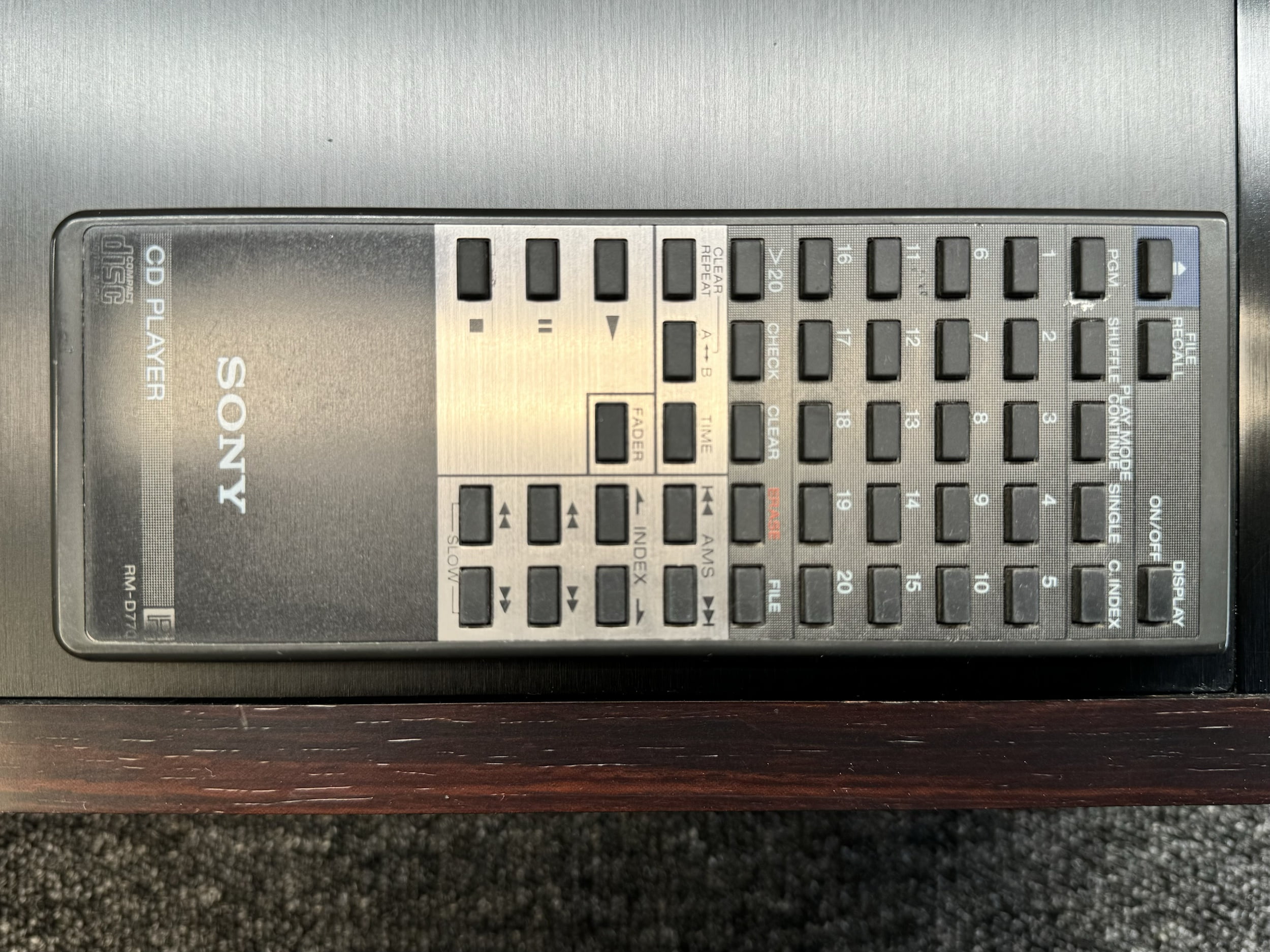
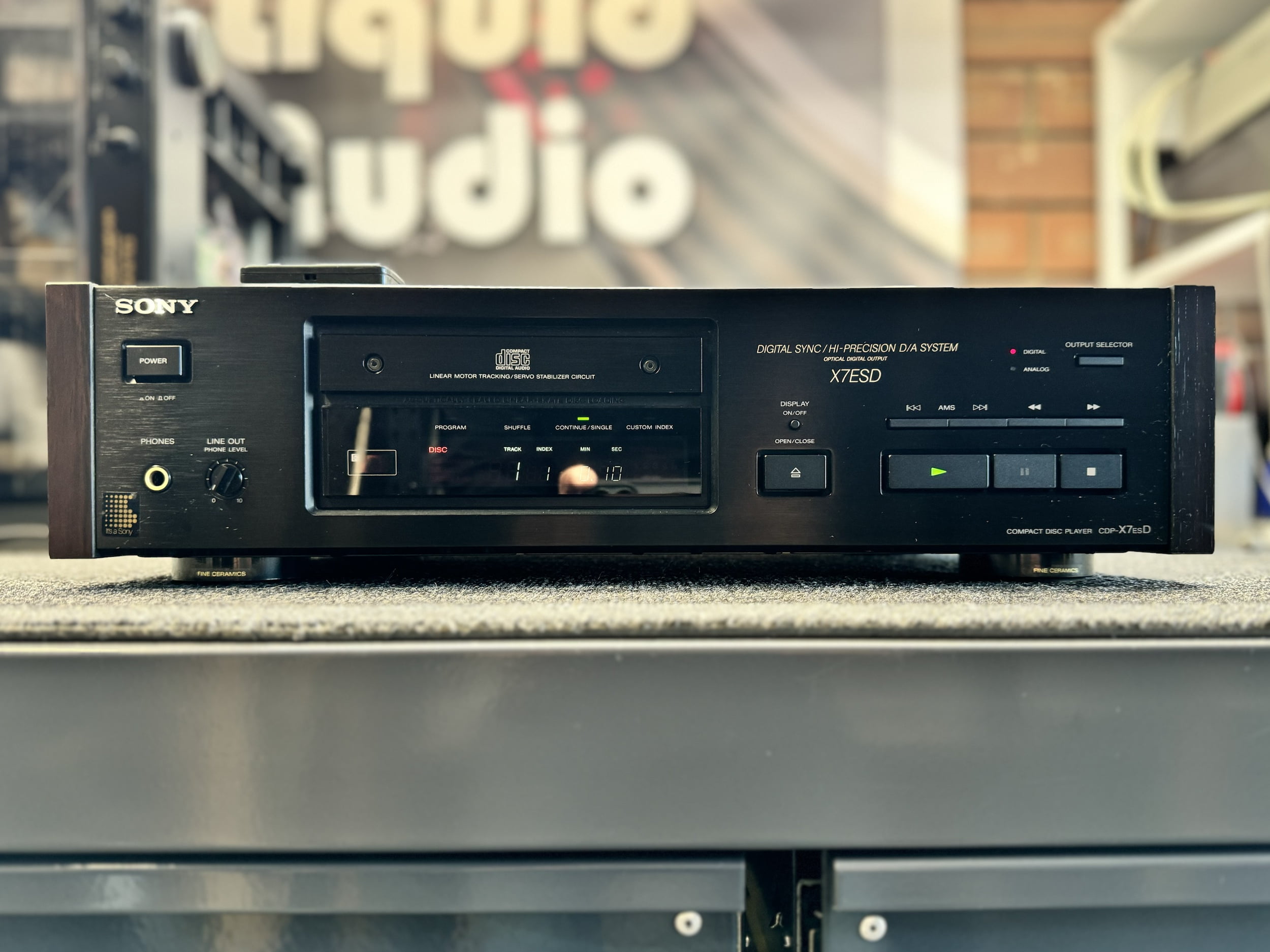
The CDP-X7ESD has single-ended and balanced outputs, plus digital outs for use with a DAC. The balanced outs sounds wonderful, smooth and warm as you’d expect of a player of this calibre. Those wanting the very best performance however might consider using her with a really good external DAC, like my Gustard A-26, Accuphase DC-91, Denafrips Pontus 2, etc.
Keep an eye out also for my Gustard A-26 DAC, an absolute stunner in sonic terms, easily the best stand-alone DAC I’d owned until my DC-91, also available in the store. Naturally, both of these sound better when powered by my IsoTek EVO3 Genesis One Mains Power Conditioner/Regenerator, also available here in the store.
This absolutely gorgeous, copper plated and near entirely metal CD player is a real beauty and is of course built like almost nothing else these days anyway. She comes with a factory remote, recently serviced and can be yours for $2,500 AUD. I’ve had a lot of interest prior to listing this player, so if you’d like it, get in touch as soon as you are able.
UPDATE: Sold!
Gustard A-26 Dual AK4499EX Digital to Analog Convertor (DAC)
It’s not often that I get excited about Chinese hifi gear folks but this is certainly an exception. Those who follow modern DAC production will know that there are a ton of interesting products out there, but very few pique my interest enough to make me want to buy one.
UPDATE: Sold, within an hour of listing!
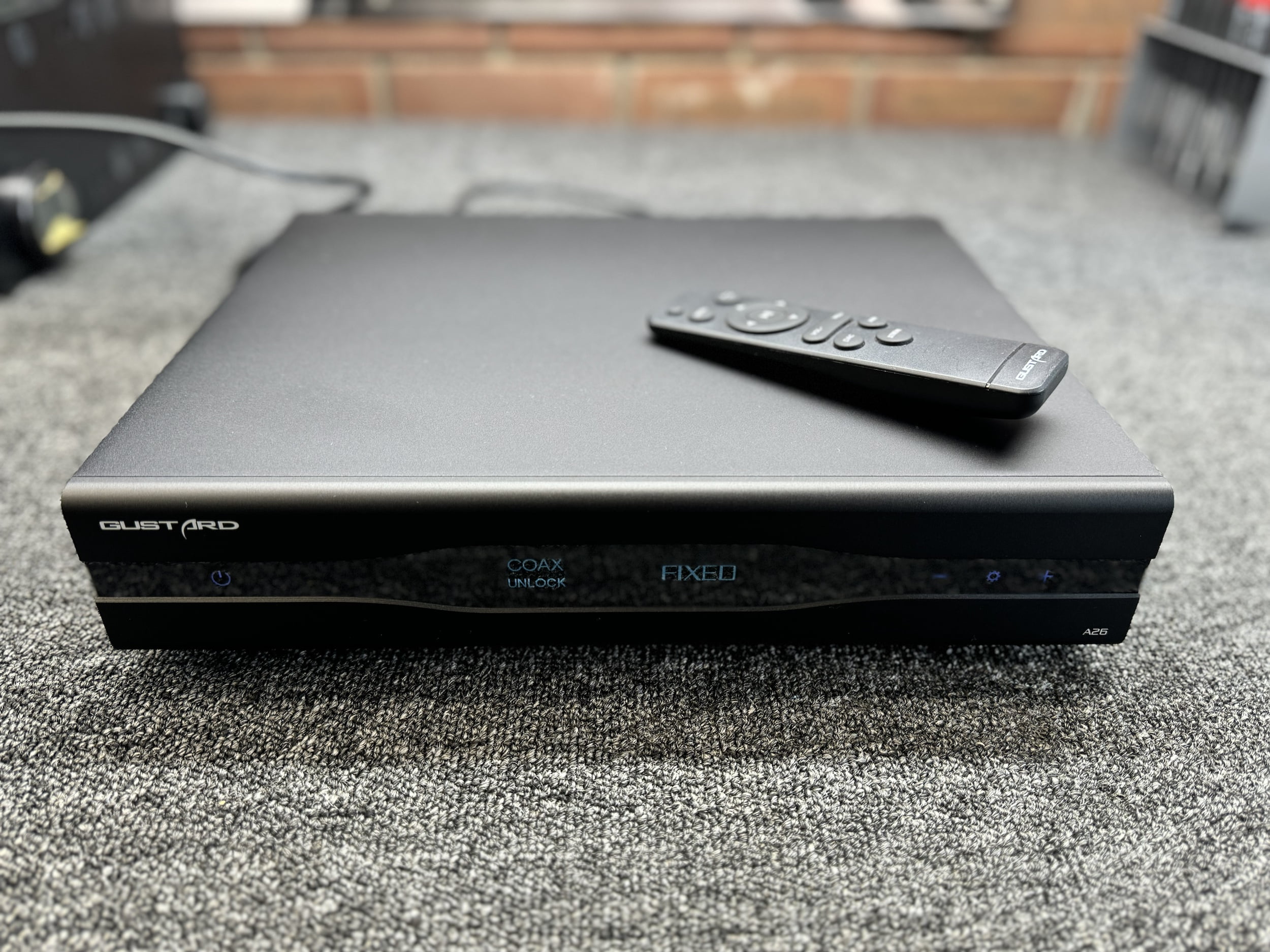
This unit was purchased new, by me, about 1 year ago and has been used an enjoyed. The A-26 is easily the best standalone DAC Ive used in my system until purchasing my current reference, the Accuphase DC-91.
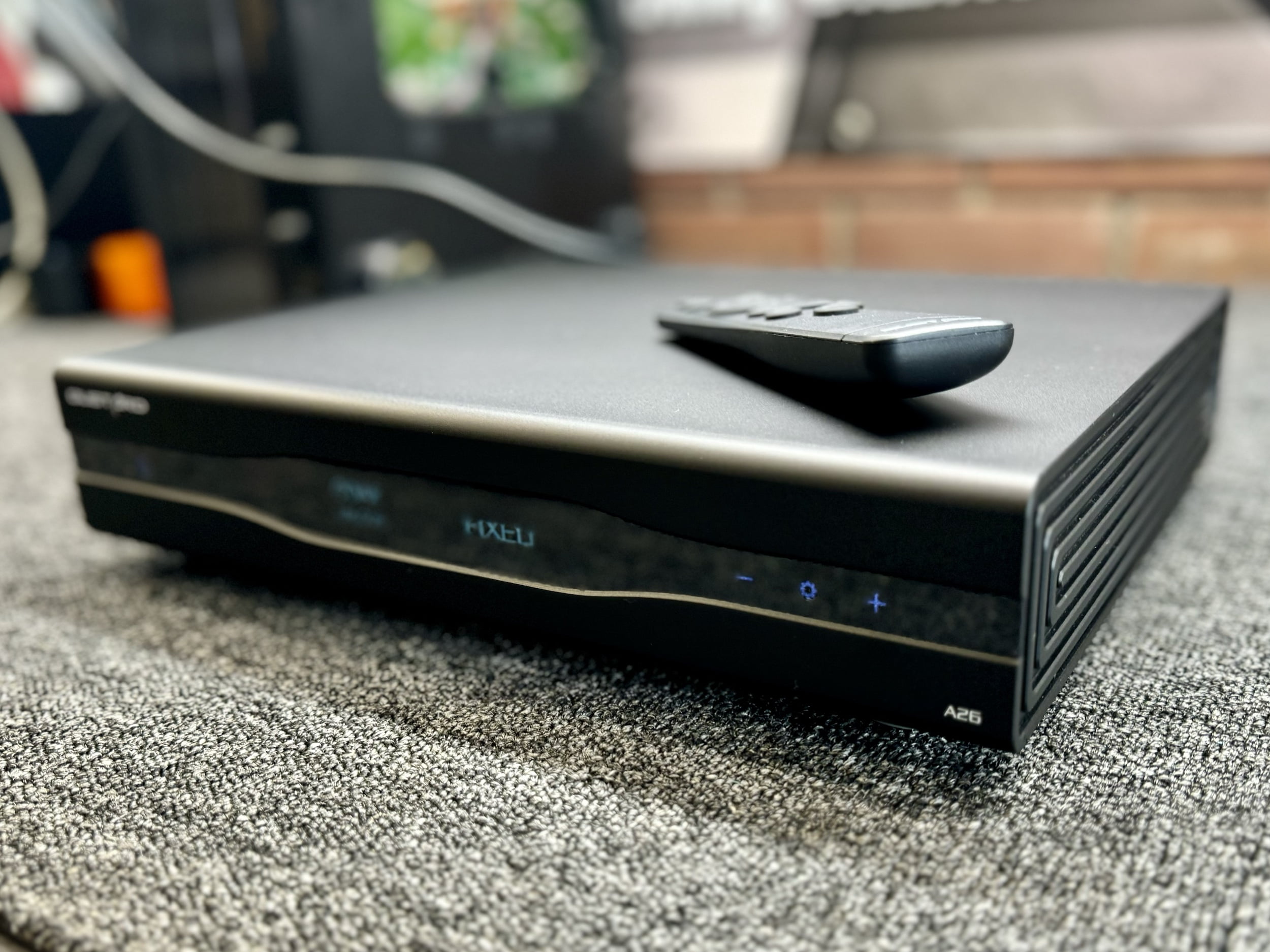
This Gustard A-26 has epic, deep bass, super beguiling mids and a lovely airy top end, incredible really for the $2,500 AUD retail price. You can read much more about the A-26 on the Gustard website. This thing uses dual AKM4499EX DAC chips, some of the absolute best sounding chips ever made. It has a high precision internal clock and the ability to input a precision external reference 10MHz clock signal. It will handle DSD, MQA, PCM to 768kHz, etc, etc, etc. Certainly a state of the art DAC for a very reasonable price.
Suffice it to say this is a serious and a beautiful sounding DAC and heavy hitter. Again, I’m only selling because I have another much more expensive DAC and I need to move equipment on rather than collect it. From personal experience here, this DAC crushes many others, and I mean MANY!
They love it over at Audio Science Review too and if you love measurements almost more than listening to equipment, that might make you very happy! Seriously though, Amir does an excellent job documenting the important measurements that so few others capture, important work, no question.
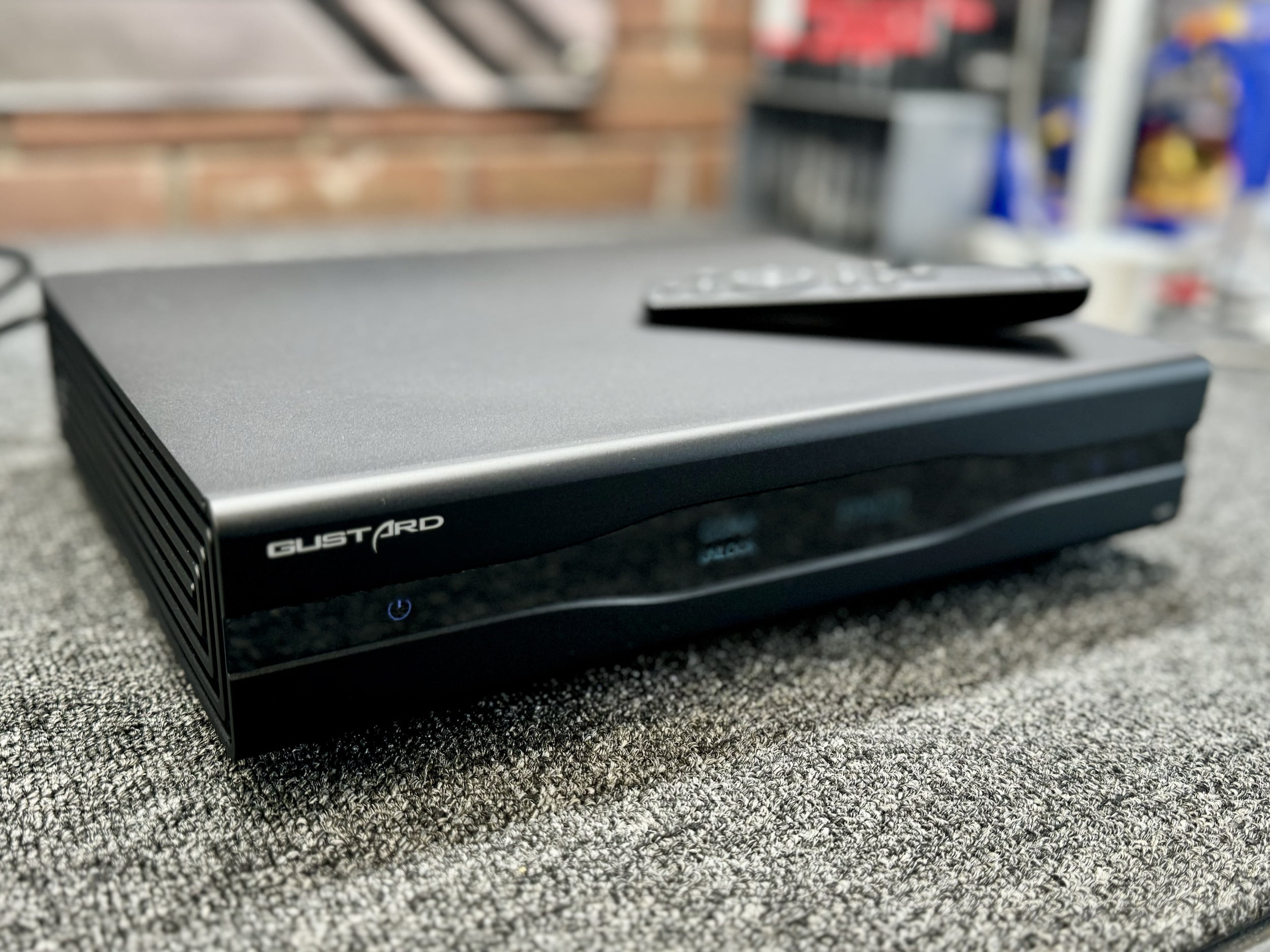
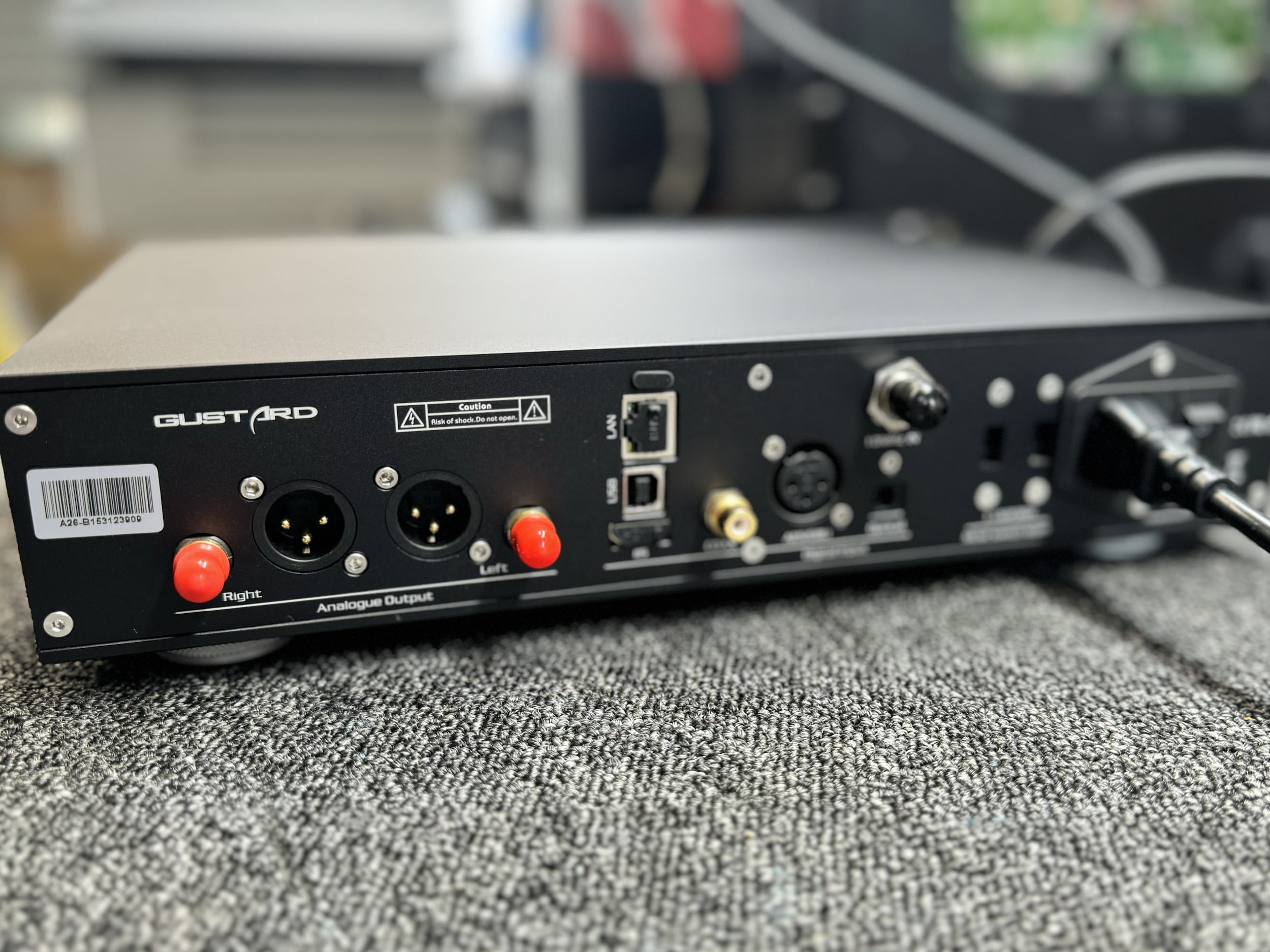

I’m selling this lightly used example with remote and power cable for just $1600. I promise that if I can find any of the cheap digital cables it came with I’ll include them, but you’ll want decent cables with this thing.
UPDATE: Sold!
Perpetual Technologies P-3A DAC + Monolithic Sound Outboard Power Supply
Wow, check out this recently serviced duo! This lovely DAC and power supply pair can be used together, or the DAC can be used with its own supplied power supply.
UPDATE: Sold!
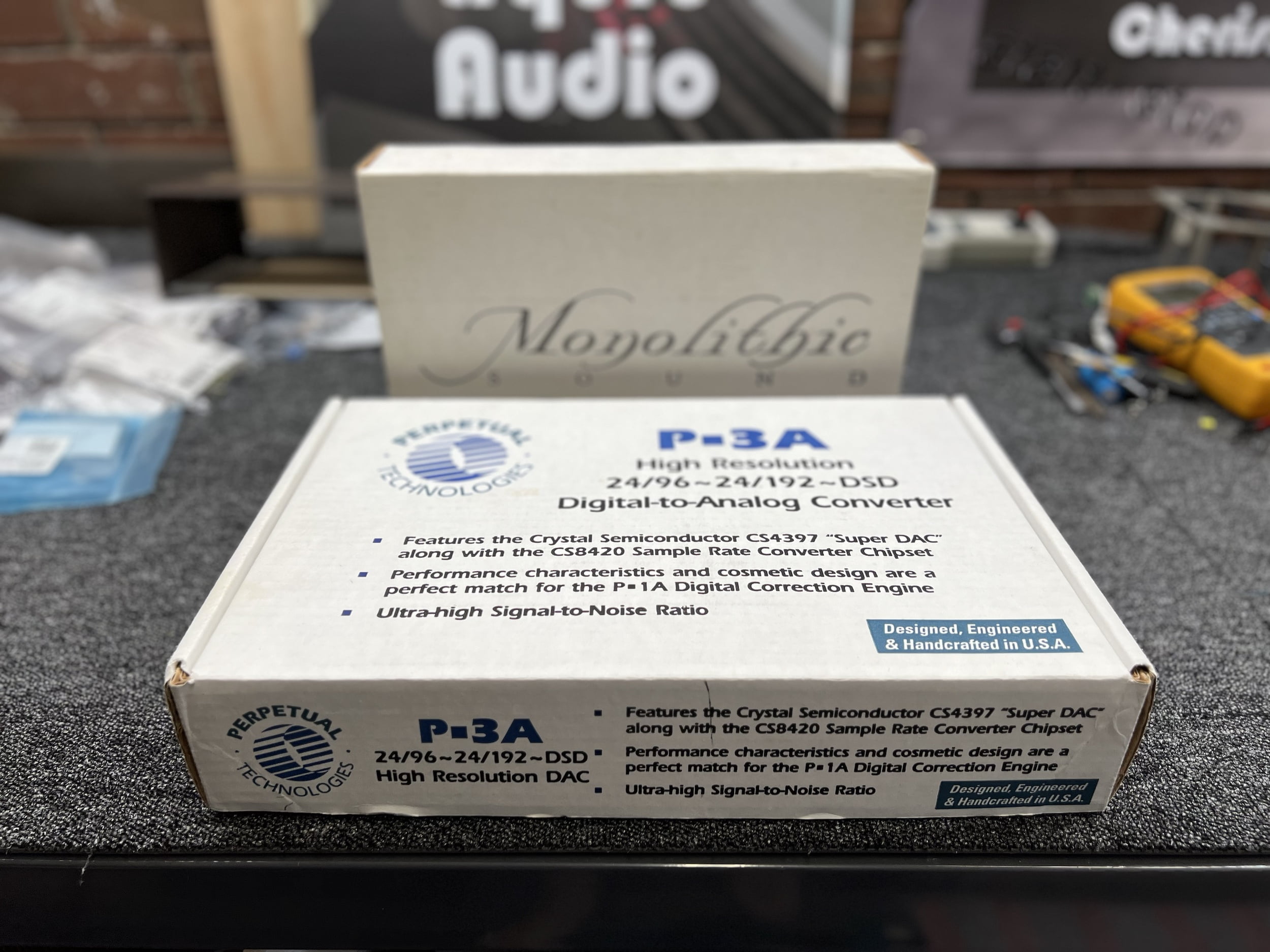
Either way, they make a compelling pair, especially given that the Perpetual Technologies DAC has received the well-regarded Modwright modifications, expensive in their own right.
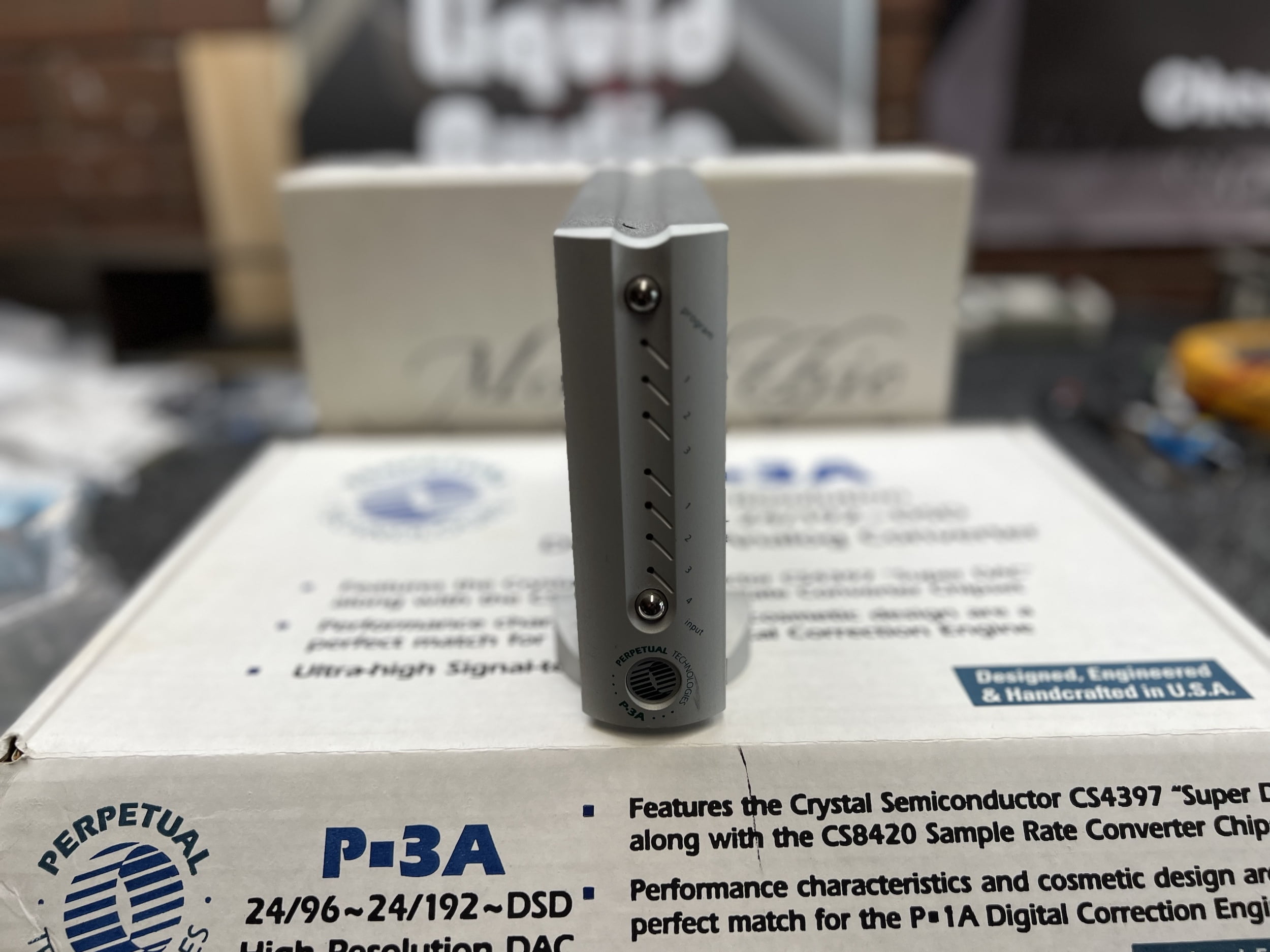
The P3-A DAC was very well regarded and reviewed when it launched in 2001. You can read what Stereophile thought about it, but in a nutshell, they found it to be one of the best-measuring DACs they had ever tested.
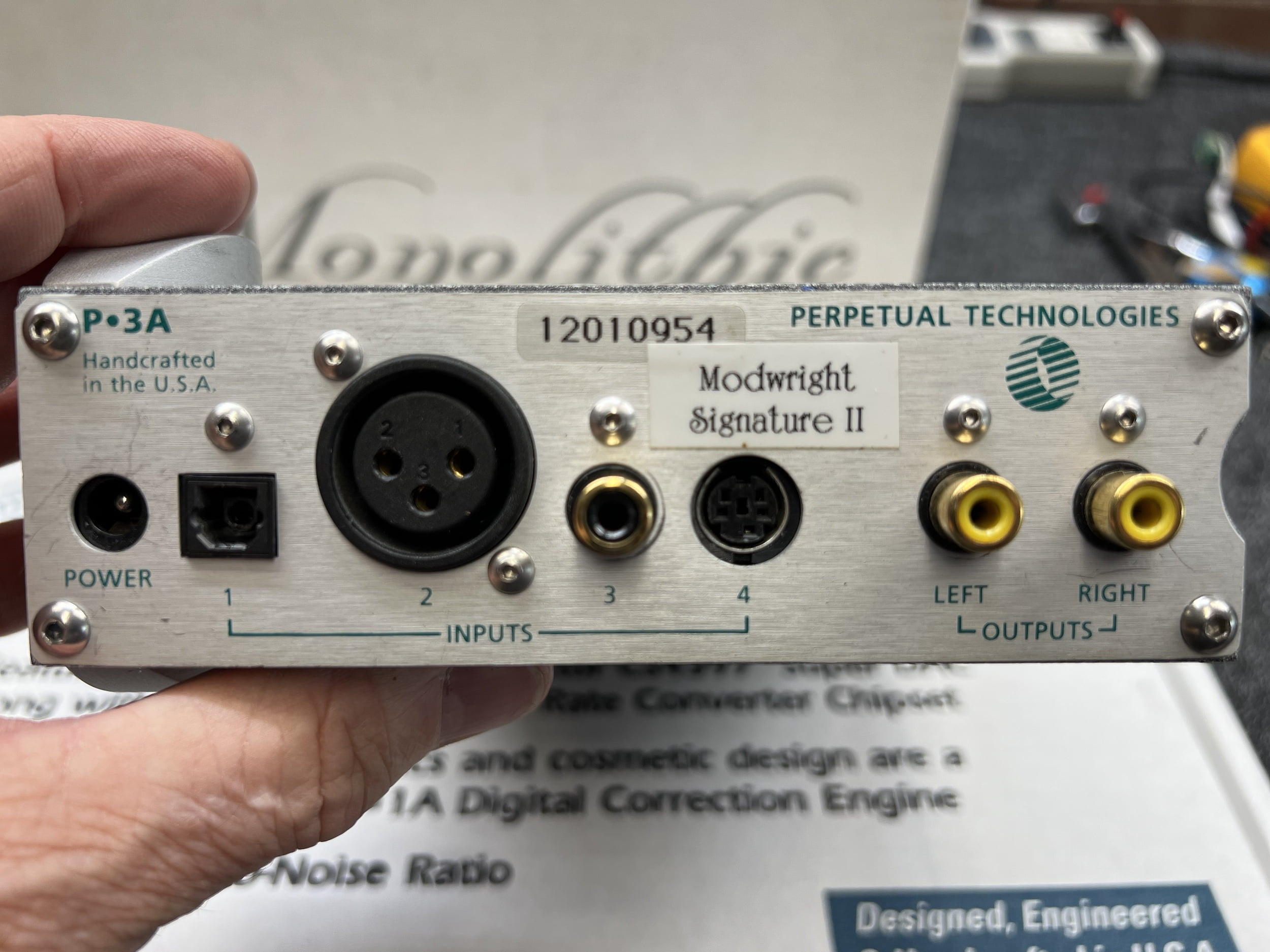

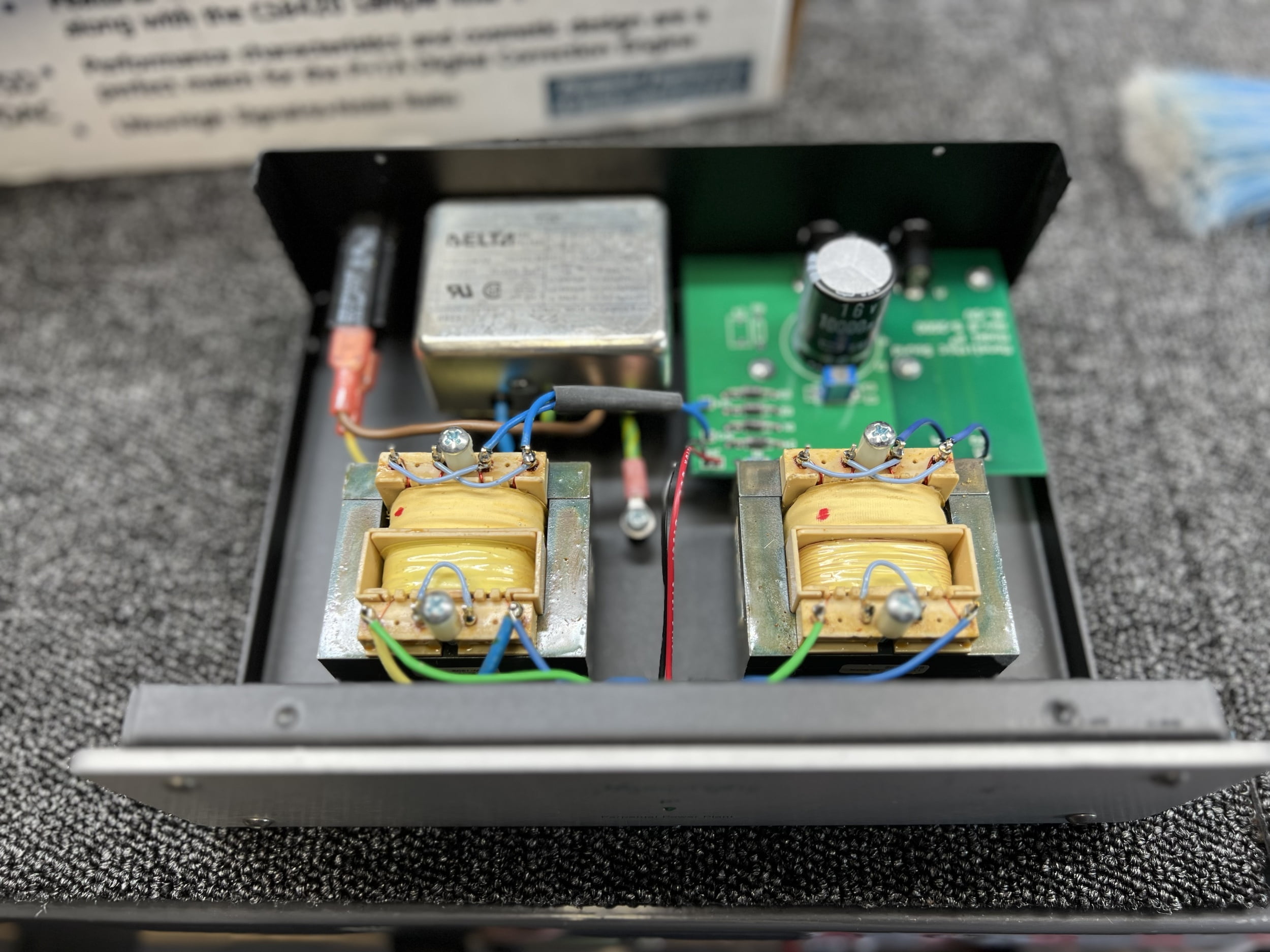
This classic vintage DAC and power supply are a one local owner pair, in original boxes, with paperwork. Sold together for just $395.
UPDATE: Sold!
Lovely Hitachi HT-460 direct-drive fully automatic turntable!
Wow, this one-owner beauty is almost perfect! Just repaired and serviced, she runs like new and is a really solid machine, typical of Hitachi gear of the time.
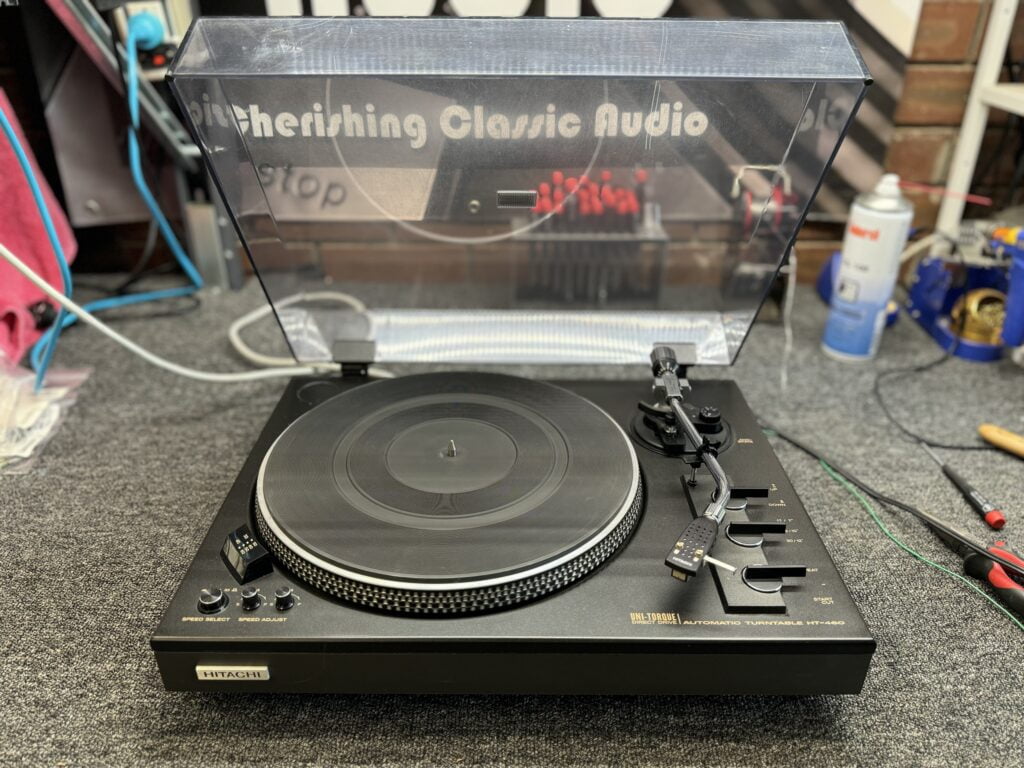
The HT-460 is the equivalent of something like a Technics SL-1600 in terms of functionality, specs and so on.
Hitachi HT-460 Specifications
Drive system: DD full auto
Motor: non-commutator DC servo motor (uni-torque motor)
Platter: Aluminum die casting
Wow and flutter: 0.03%(WRMS)
S/N ratio_ 74dB(DIN-B)
Tonearm: Stylus-force Direct-reading type static balance type pipe arm
Arm effective length: 220mm
Stylus-force range: 0-3g / 1 rotation (being a 0.2g step Direct reading)
Supply voltage: 240v
Power consumption: 4W
Dimensions: W 450x H 141x D of 367mm
Weight: 8.3kg
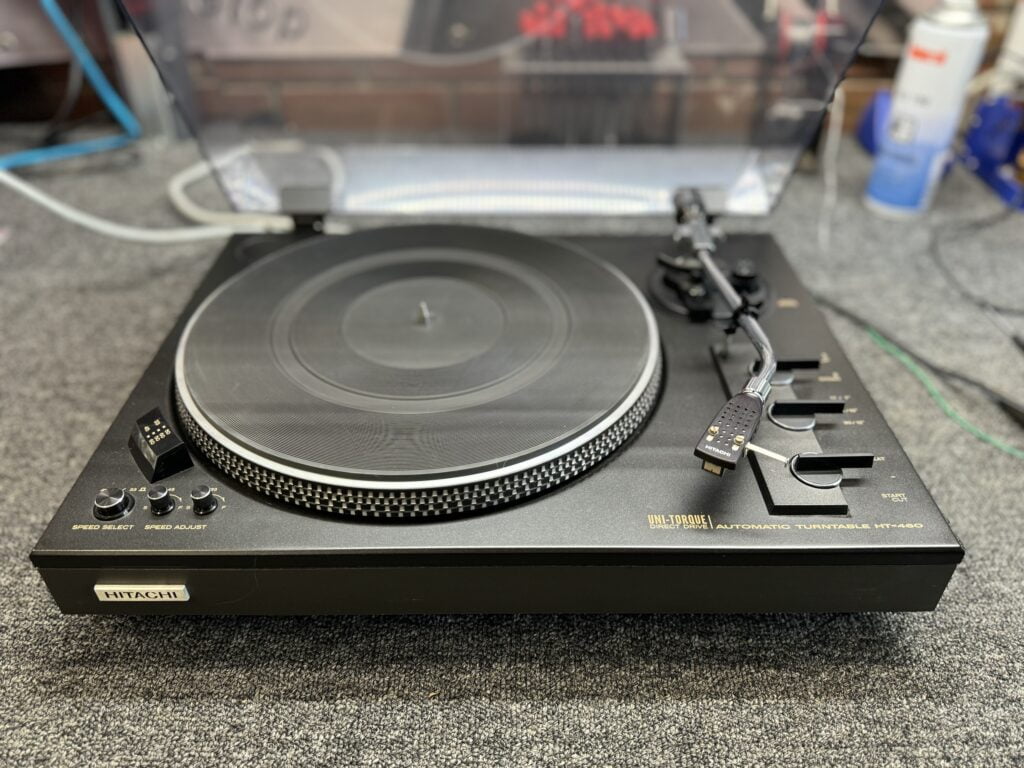
I love the fully automatic operation here, allowing for set-and-forget operation, for each side of a record at least!
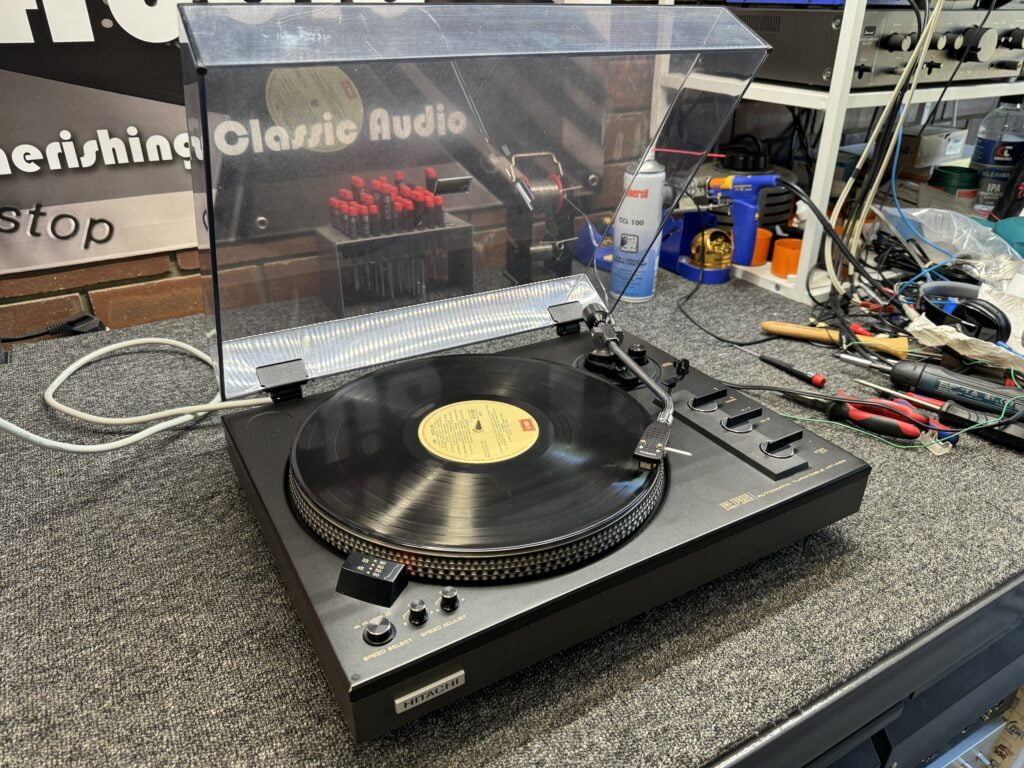
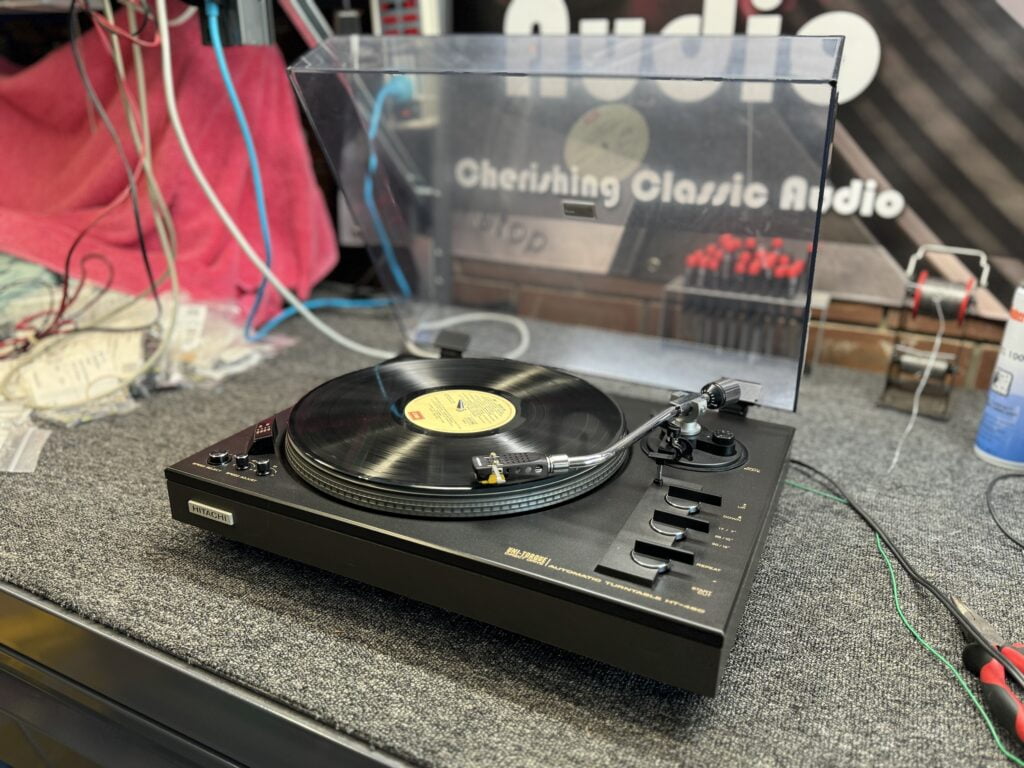
Incredibly, this is another one-owner-from-new machine, kindly donated to us for repair and sale. Thank you to her previous owner, let’s find her a new home!

This Hitachi HT-460 direct-drive turntable comes freshly serviced and partially overhauled, with the original Hitachi MM cartridge and owner’s manual. Other cartridge options are available upon request.
Grab this beautiful Japanese-made classic for just $595.
UPDATE: Sold! with an Audio Technica AT-VM95ML line contact MM cartridge and AT-HS10 headshell installed for her lucky new owner!
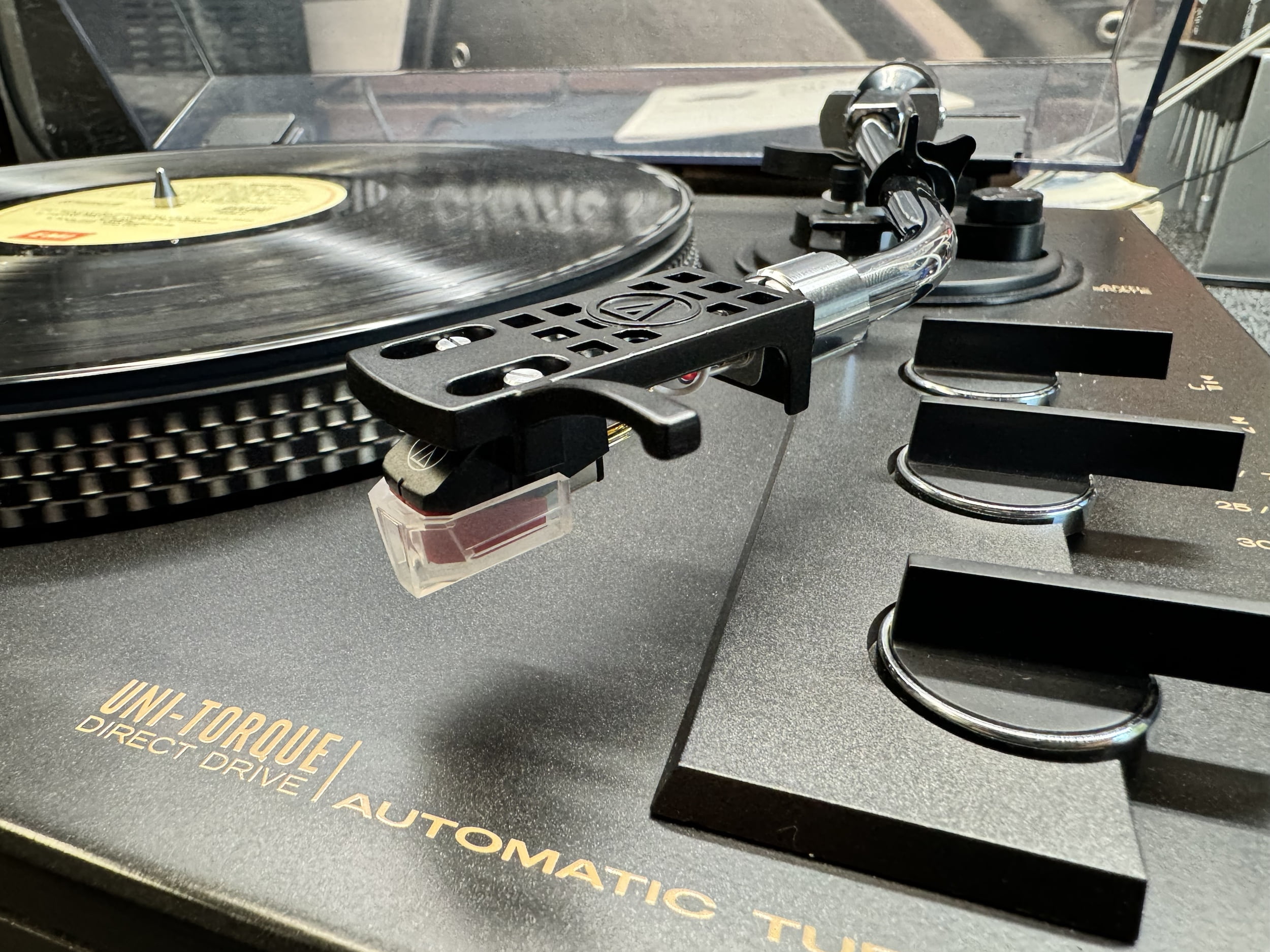
Beautiful Luxman SQ507X Integrated Amplifier
This rather special Luxman SQ507X is also looking for a new home. Unlike most, she’s not been tinkered with and contains all her original parts, ready for whatever her next owner would like to do with her. Also unlike most, this SQ507X comes with the original owner’s manual, warranty card and a selection of original period reviews. It is very rare to find the amplifier and paperwork together in this condition.
UPDATE: Sold!
The wooden cabinet looks like a million bucks, and she sounds stunning. Overall, she performs flawlessly, with a warm, punchy sound we expect of good gear like this. This SQ507X also has an effortless quality to it, with lovely detail resolution. Let me tell you, if you’ve never heard a really good older piece like this you ought to because you’ll no doubt be very surprised. Listening through headphones is just fantastic. Even though hi-fi equipment “keeps improving each year”, going back at least 50 ‘improvements’ would mean that gear from the early ’70s like this SQ507X would be absolute garbage and sound awful. Right…?
Wrong! This lovely amplifier sounds so damn good and I can confirm that when you listen to as much older gear as I do, the penny drops for most people. Marketing and advertising have a lot to answer for and I’ve explained this folly so often that I’ll spare you another one. Suffice it to say though that this Luxman SQ507X sounds awesome.
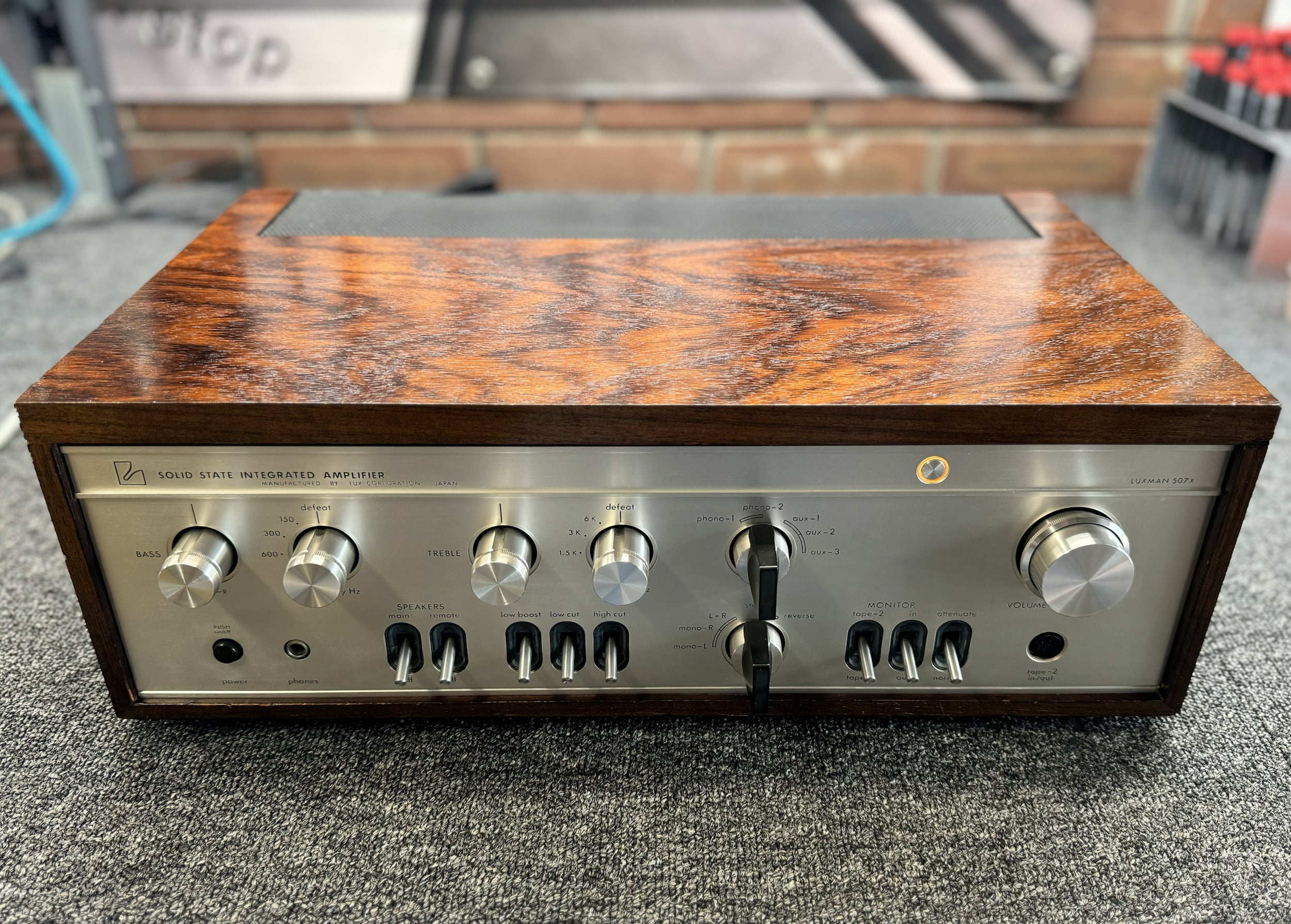
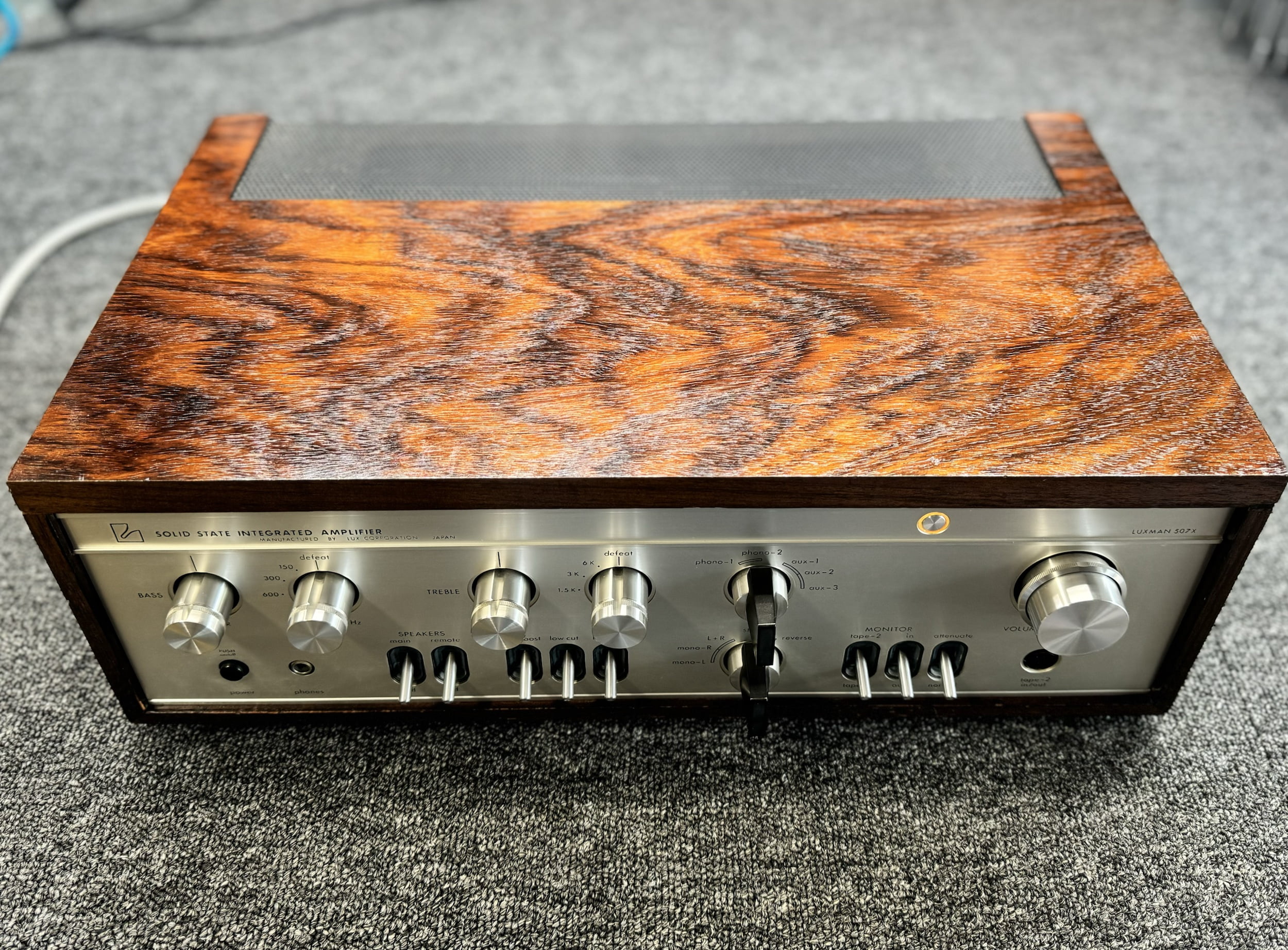

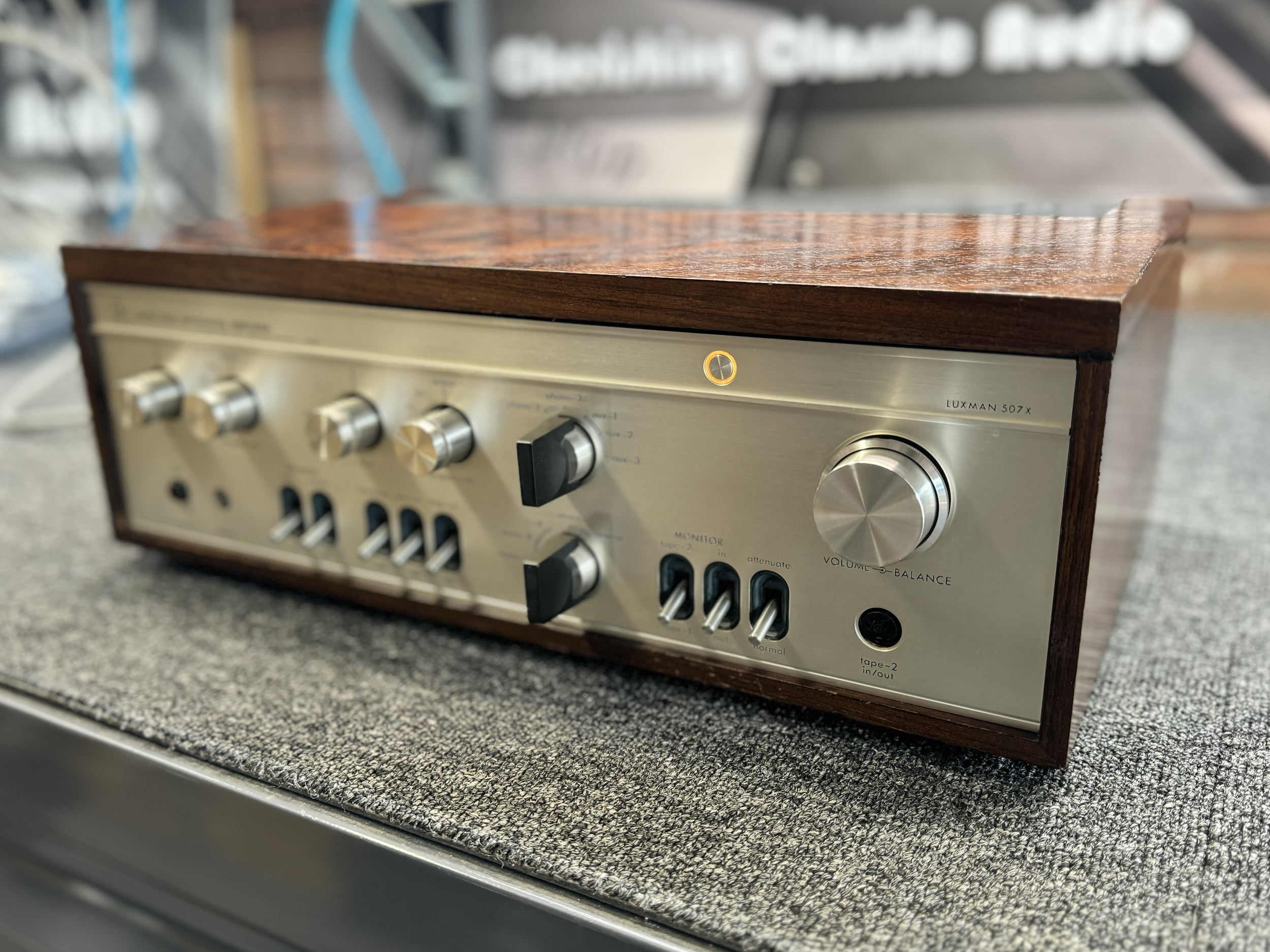
This Luxman SQ507X cost $460 AUD back in the early ’70s and was a serious piece of equipment at the time. If anything, gear like this and the Sansui AU-11000 I recently sold only becomes more collectible due to raised awareness and appreciation, and the neverending barrage of modern plastic gear. The other good news, to use some amusing terms commonly found in Japanese listings, is that there is no gully noise! She is 50 years old though, so, as they say in Japan, “Please don’t buy if you are nervous!”. Not much to be nervous about here though.
These days, Luxman SQ507Xs often sell for around $1000 USD / $1500 AUD, plus shipping, and import duty (10%) from sellers you’ve never heard of and rarely in this condition and so carefully serviced and never with a warranty. If you’d like to adopt this one-owner original, with original documents, manual, serviced and with no shipping or import duty, she can be yours for $1650. Local buyers preferred.
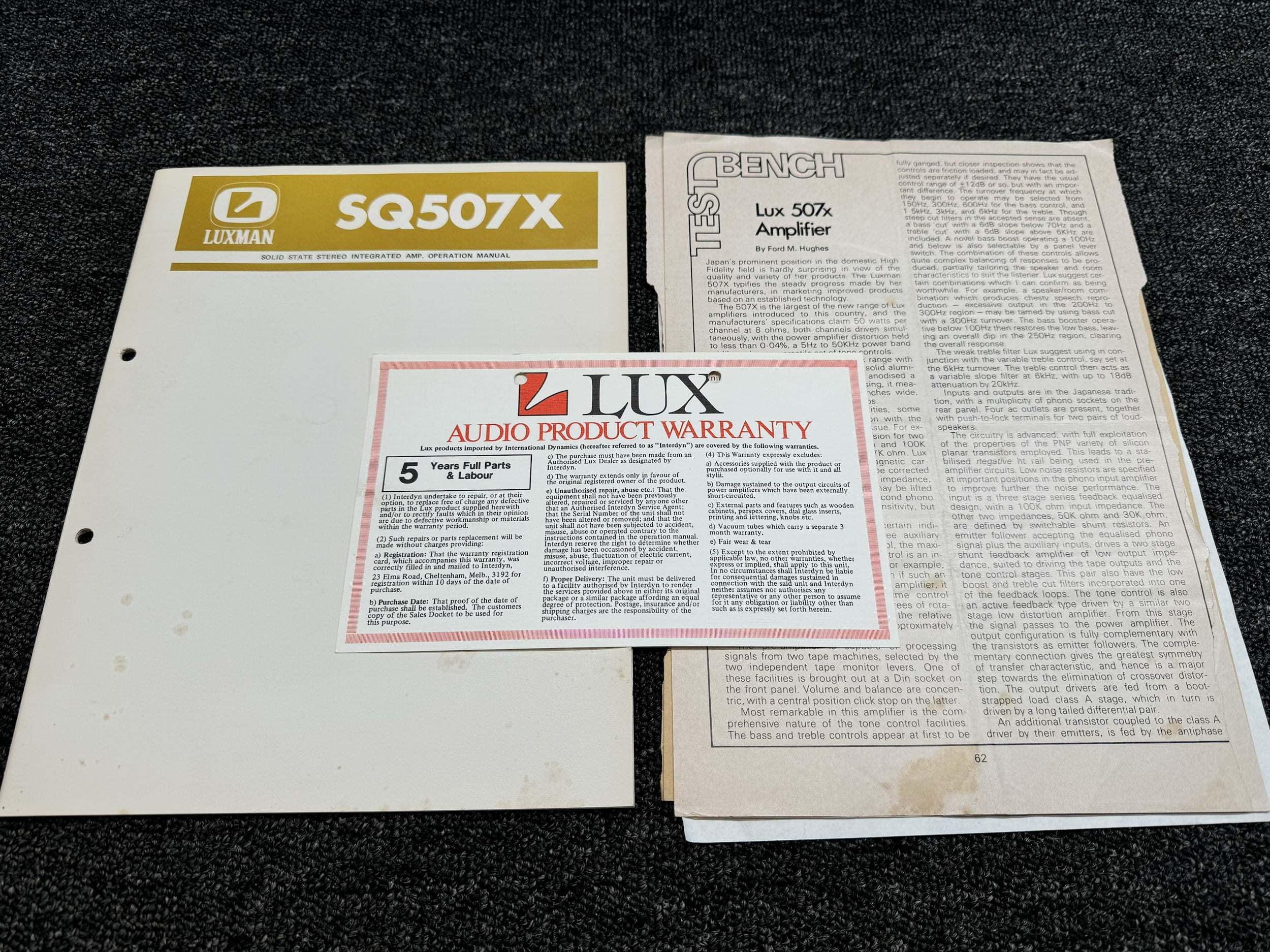
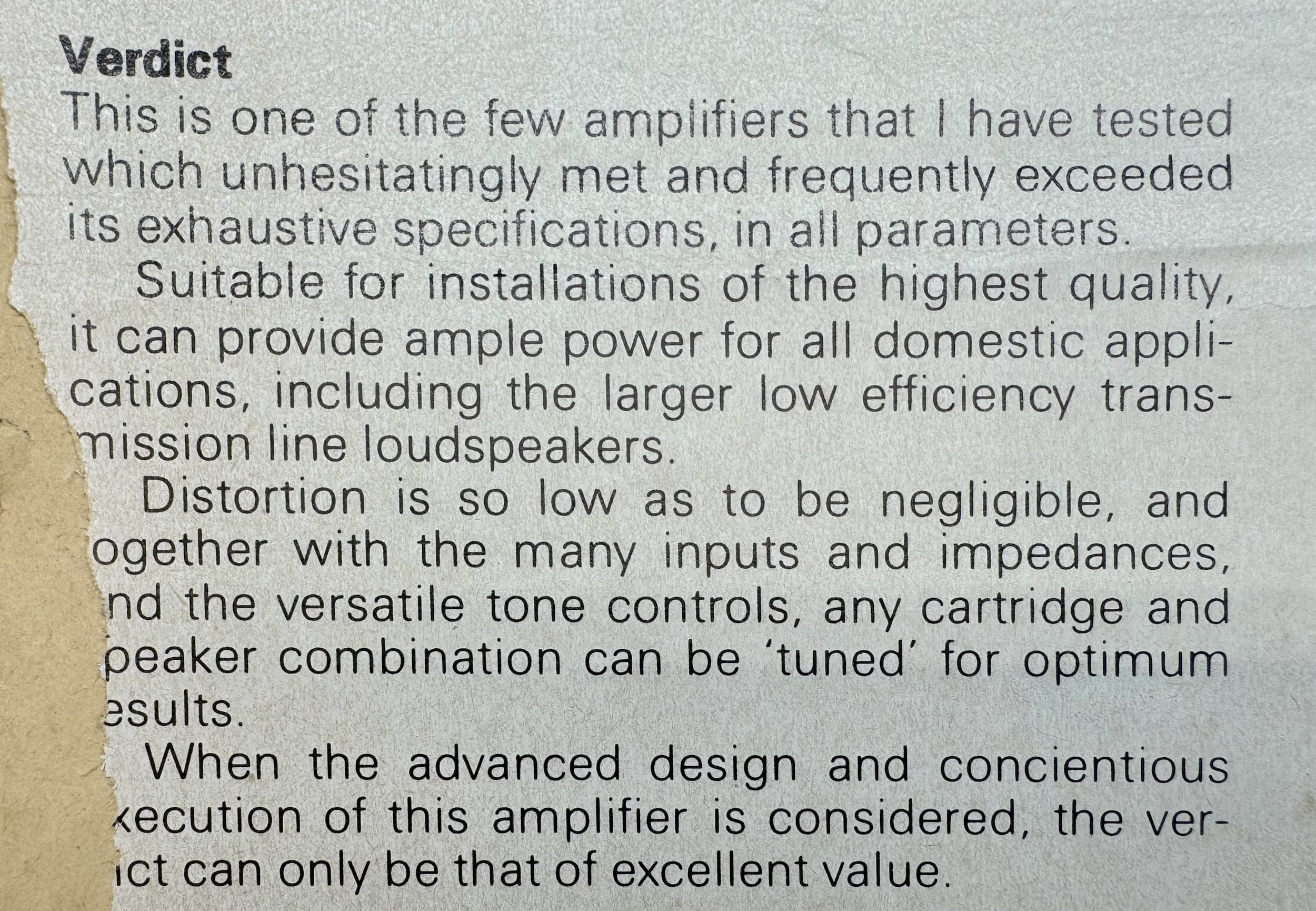
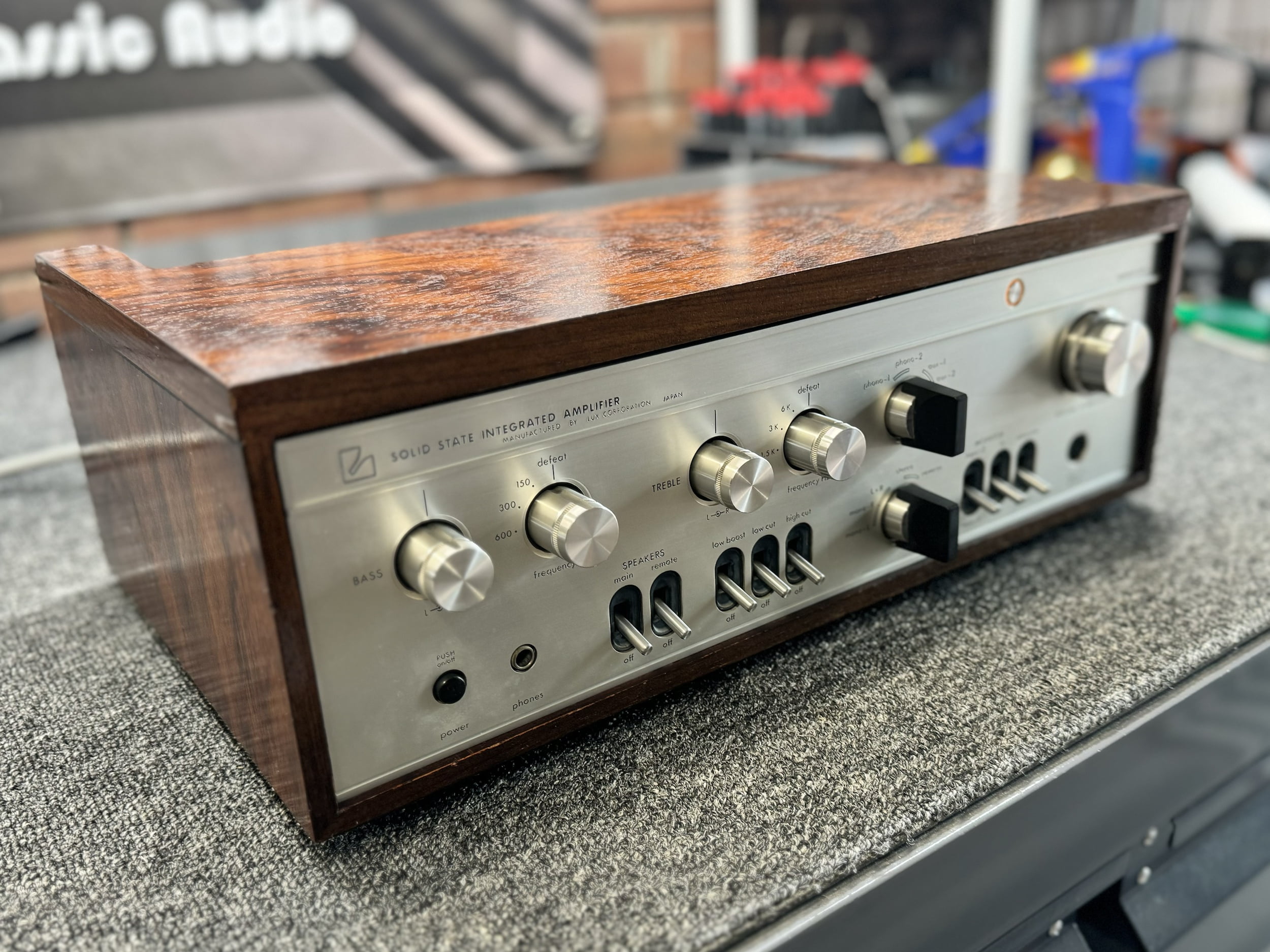
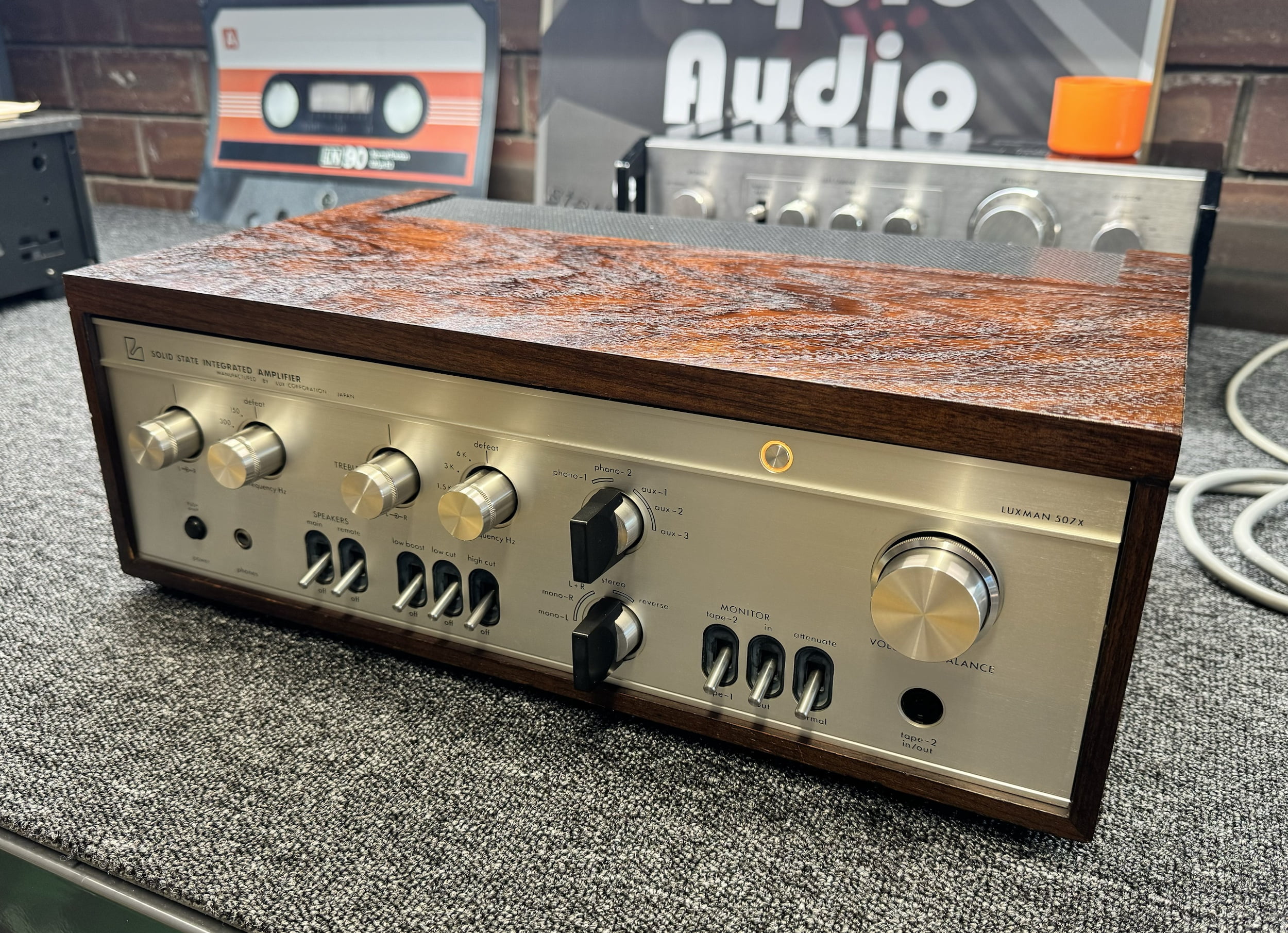
If you’d like to know more about this baby, don’t hesitate to get in touch!
UPDATE: Sold!
Stunning Sansui AU-11000 Integrated Amplifier For Sale!
Well, folks, it’s not often that a legendary Sansui AU-11000 comes up for sale, let alone one that’s almost completely original, and that’s just received the deep maintenance and detailing of the calibre this lovely old girl has!
UPDATE: Sold, within 24 hours!
I hope you’ll agree that this gorgeous Sansui AU-11000 has turned out beautifully, after arriving here semi-dead after having sat in a closed repair shop for decades! Deep service and careful attention to and rectification of the areas causing trouble, without the unnecessary parts replacement so common these days have revealed what is a beautiful gem amplifier. This lovely old girl now runs perfectly and sounds great, and she looks very good for her age, I think you’ll agree.
She’s not perfect of course and whilst most bits are original, she’s had some previous work as I mentioned. Someone has melted one of the speaker terminals with their soldering iron (thanks for that) and there are some marks and scratches from it having kicked around for decades in a workshop environment less carefully managed than my own. Overall though, this is a very clean, honest amplifier.

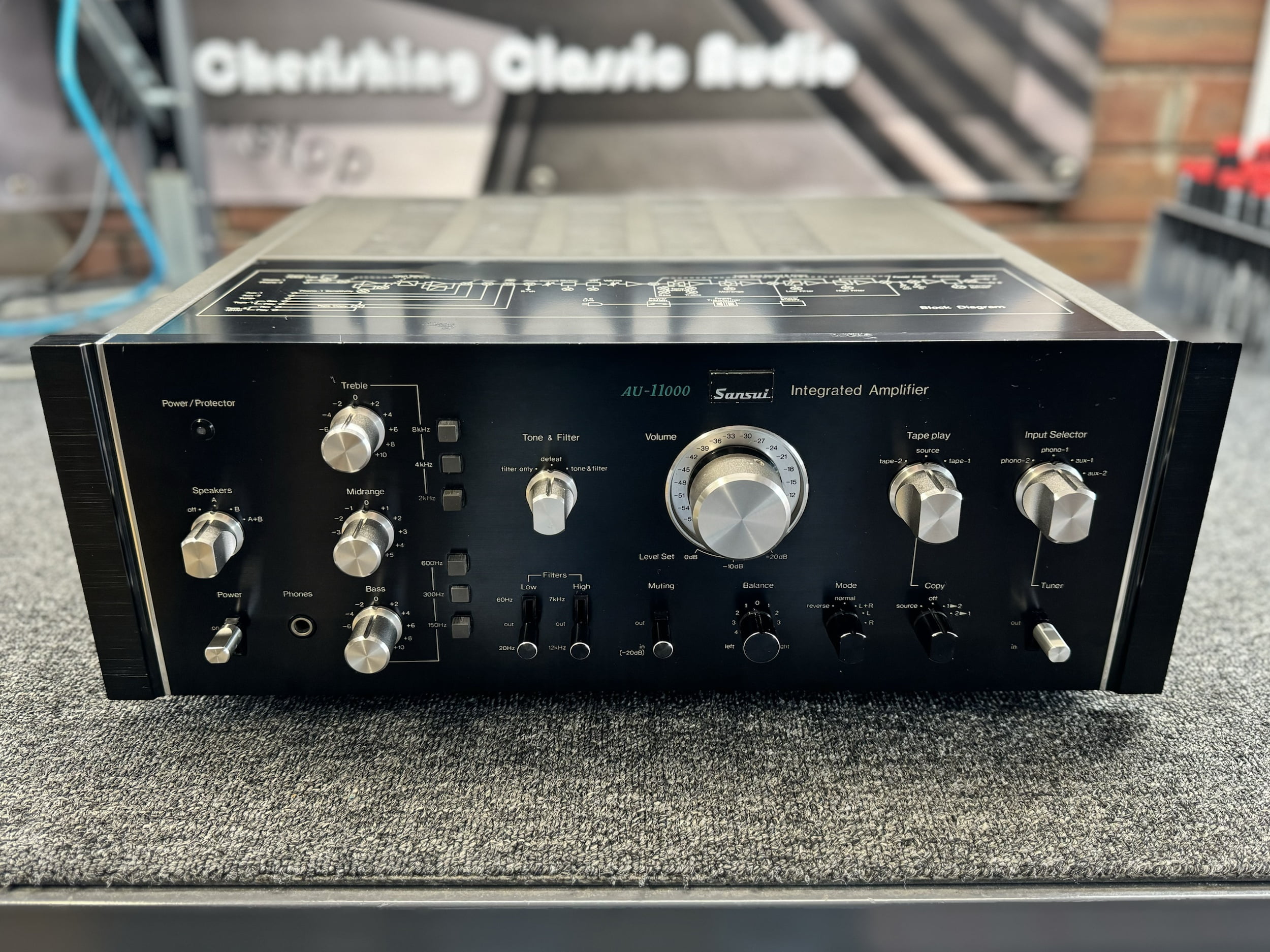
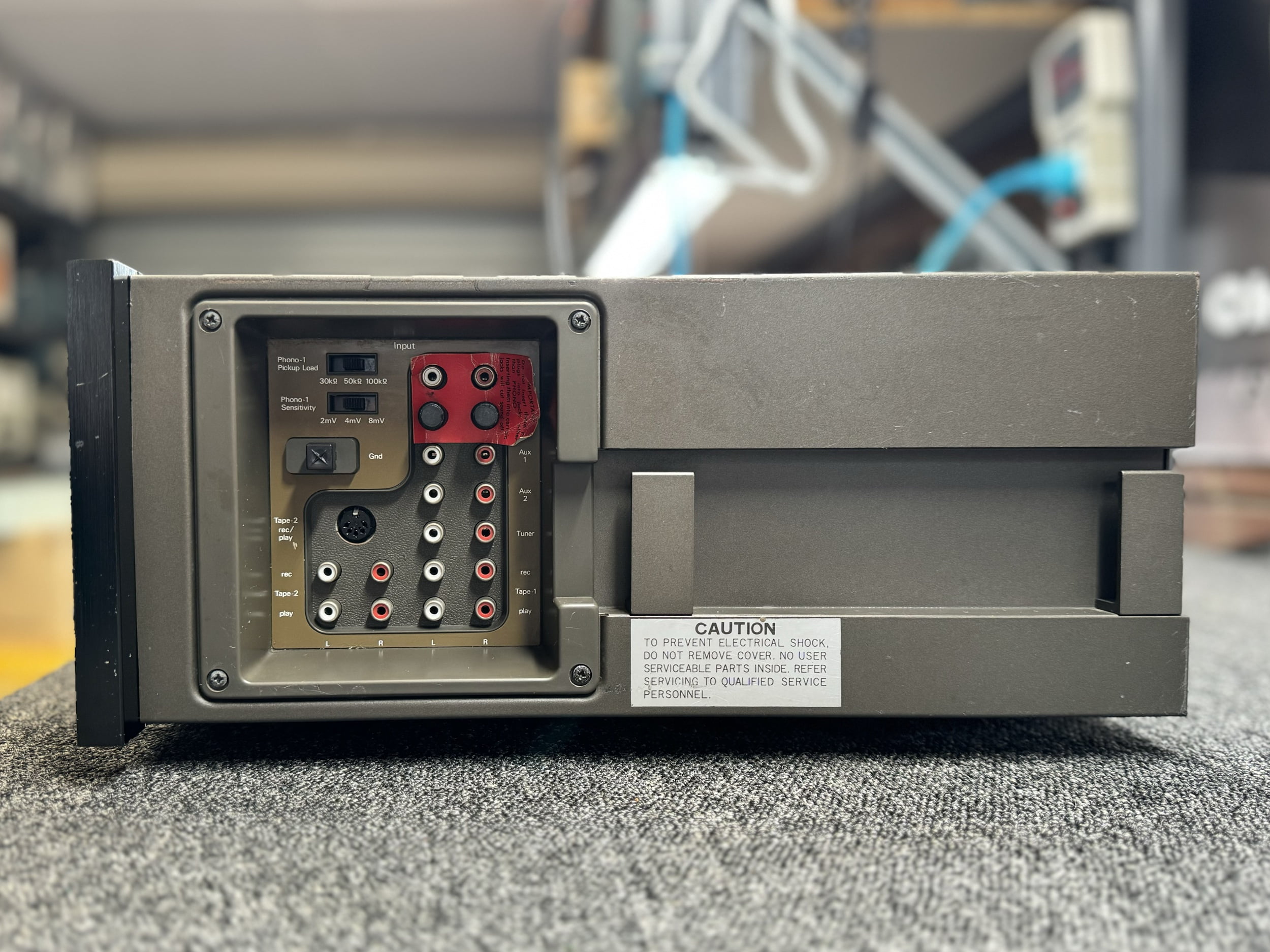

This clean and mostly original Sansui AU-11000 integrated amplifier is now looking for a new home. I’ve had many people enquire about her and several offers, so to be fair to everyone, I need to advertise her because not everyone may see this right away. If you’re interested, please get in touch and let me know your offer. Local buyers are preferred.
I’d suggest a sensible starting point for an AU-11000 in excellent original condition, from a respected source and having just received maintenance of this quality and not being filled with Leylon or Suntan caps is around $2,500. All sensible offers will be considered.
UPDATE: I’ve received two really good offers so far, get in touch if interested before she’s gone.
UPDATE: Sold, within 24 hours!
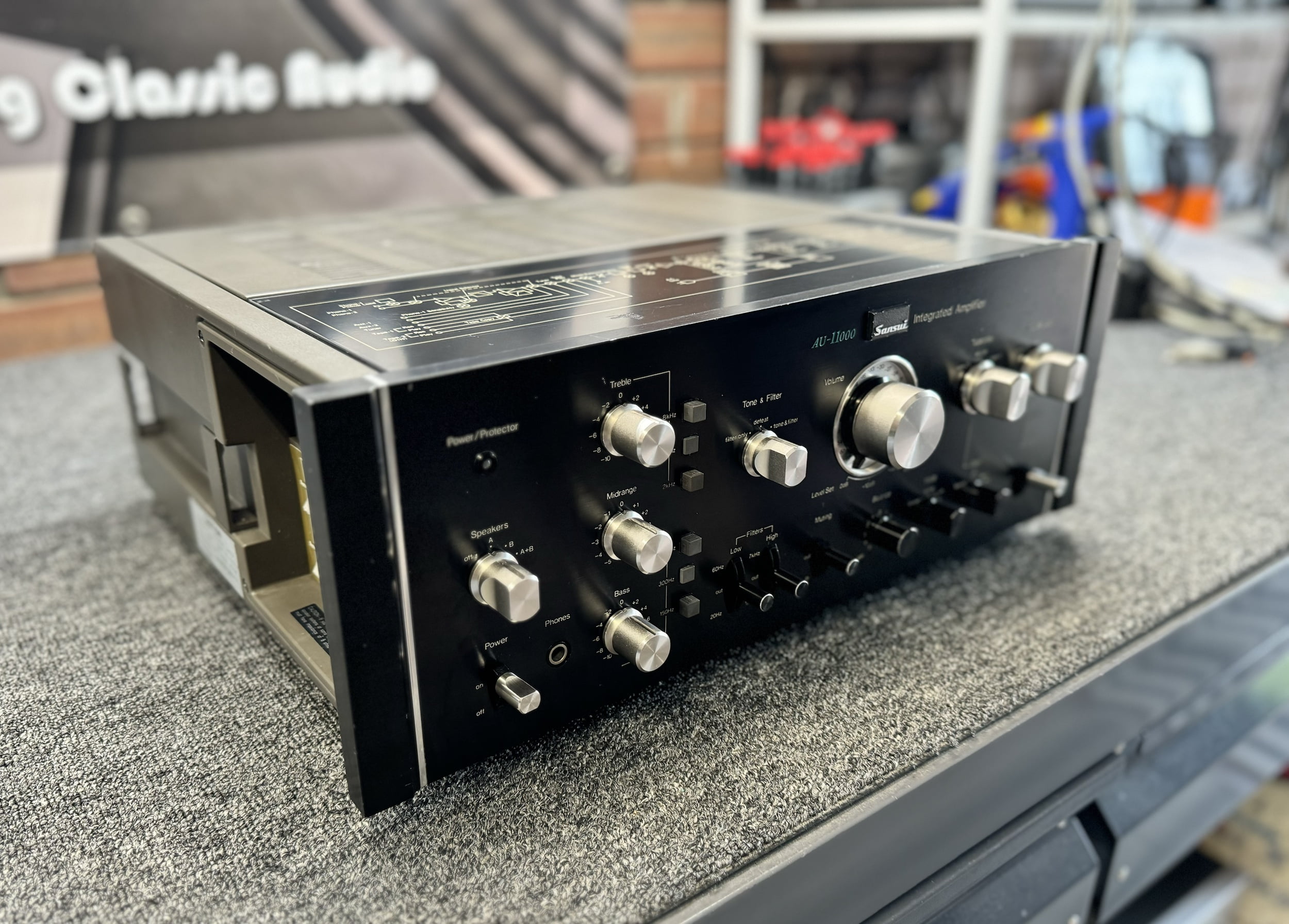

Don’t hesitate to let me know if you’d like to buy this Sansui AU-11000. Local buyers preferred.
UPDATE: Sold!

